Listen to Musica a Palazzo and taste the Venitian gastronomy of Alajmo, Bistrot de Venise and the Caffè Florian!

©
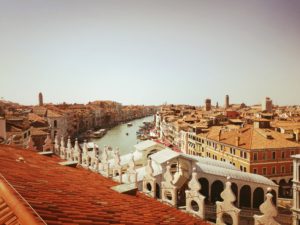
Venice is not only a city of museums but also a city of music and gastronomy! If music used to be listened nearly everywhere in Venice, even today in the Saint Mark’s Place where you can appreciate it, while enjoying some savorous delights at the mythical Caffè Florian and Caffè Quadri, facing each other… A piano or a violin would never be too far from you!
But the musical peak point seemed to be once more present during the carnival period, since it was supposed to be a really important period for the City of the Doges, since it was made to last longer some years ago… Extending from the beginning of October until Advent, then from December 26 until Shrove Tuesday, plus two more weeks on the ascent. That’s why, opera houses are so popular, from the Teatro San Benedetto, which was the most famous stage in the 18th century, the Teatro San Moisé, the Teatro Sant’Angelo of which Vivaldi was the impresario, or the Teatro San Samuele which welcomed the Griselda’s creation from the same Vivaldi.
Nowadays, music goes on in different sites, and notably in small-scale opera productions proposed by the Musica a Palazzo, in order to light up your night. Then, willing to pursue our exploration of this unique Venetian spirit, we would introduce you a couple of delicious addresses, able to reveal the golden era of this rich history, Conveyed in a bygone gastronomy, notably highlighted by the Bistrot de Venise or even within the AMO café nested in a medieval mall! By Alex Plato
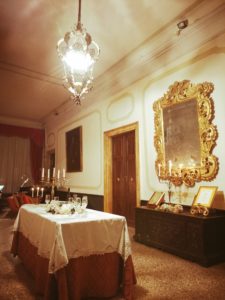

We start our rejoicing Venetian tour at Musica a Palazzo. A real cultural association founded in 2005 with the desire to make of this Palazzo Barbarigo Minotto a place of meeting, experimentation and aggregation to disseminate and develop knowledge of opera culture (photo credits: Alex Plato).
In case you look for an intimate moment to share with your loved ones, this Musica a Palazzo ensemble has developed an innovative way to appreciate your favorite classical artworks between the gildings of a typical Venetian palace. Therefore, the traditional opera scenery is here replaced by a stage where each act of the opera is represented in one different room in the palace, whose magnificent baroque decorations are a natural complement to the staging and would surely amaze you. A contemplation feeling naturally and visibly enhanced by the smart use of the scenery and a glass of prosecco offered at the intermission.

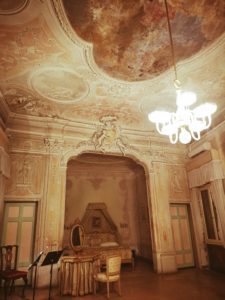
Indeed, overlooking the Grand Canal, the Palazzo Barbarigo Minotto is located next to the much larger Palazzo Corner, basically reuniting two palaces, the Palazzo Barbarigo and Palazzo Minotto, later joined together. Built in the Venetian Gothic style in the XVth century, this first palace was owned by the Barbarigo family for several centuries, before being acquired by the Minotto and Martinengo families.
For your information, a couple of legendary artisans contributed through the years to design the interior spaces of this palaces, through perfectly preserved artworks which are still nowadays a source of admiration for researchers and art lovers. Counting on their inspiration some architectural jewels arose from the walls, such as the honorable involvement of Girolamo Mingozzi, illustrated by its molded explicit stucco alcove, made in a rocaille style.
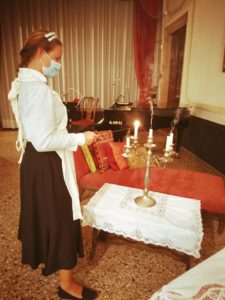
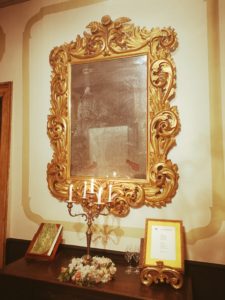
Thus, this artist designed a series of shield-carrying angels, overlooking the room besides mythological scenes depicted in pale colors with colorful animals, adorning the stuccos of the dining room‘s ceiling.
Beyond this intervention, don’t miss a homonym Mengozzi Colonna who demonstrated his know-how on the central hall, designing some authentic Venetian terrazzo pavings and painted the private 18th century chapel, also decorated with a Louis XIV-style elm wood flooring including inlays of olive burl and other precious woods. Don’t miss also the various artistic realizations of N.H. Pietro Barbarigo, the plasterer Carpoforo Mazzetti dit Tencalla, the painters Francesco Fontebasso and Gianbattista Tiepolo who started his work there in 1741, with a couple of masterpieces for the freshly Barbarigo spouses.
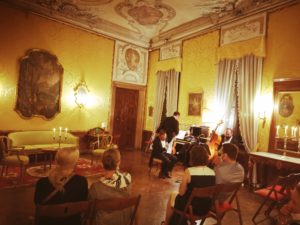 Composed of three salons, enjoying a breathtaking panorama on the Grand Canal and as well on the Rio Zaguri, this precious edifice profited from embellishment works, occurring during the first half of the eighteenth century, again by the participation of artists whose fame and talent are still recognized today. The originality of this Musica a Palazzo notably resides in the conviviality of the audience limited to 20 privileged guests (who are invited to become a member of the association, benefiting of discounts for future representations). Moreover, this small committee allows a close interaction between the visitors and the orchestra, composed of a restricted number of talented singers and musicians, erasing all distances and offering the chance to enjoy the sound of music as much as possible and in a wonderful framework, in the heart of one of the main lyrical cities of the World!
Composed of three salons, enjoying a breathtaking panorama on the Grand Canal and as well on the Rio Zaguri, this precious edifice profited from embellishment works, occurring during the first half of the eighteenth century, again by the participation of artists whose fame and talent are still recognized today. The originality of this Musica a Palazzo notably resides in the conviviality of the audience limited to 20 privileged guests (who are invited to become a member of the association, benefiting of discounts for future representations). Moreover, this small committee allows a close interaction between the visitors and the orchestra, composed of a restricted number of talented singers and musicians, erasing all distances and offering the chance to enjoy the sound of music as much as possible and in a wonderful framework, in the heart of one of the main lyrical cities of the World!
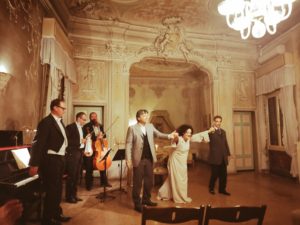
By the way, this Musica a Palazzo association gathers a bunch of internationally renown artists, who already had the opportunity to tour in the United States, along the performance of the so Italian show La Traviata in the Royal Pavilion for the 41st Brighton International Festival in the United-Kingdom, where the orchestra enjoyed a respectable critical success and even got awarded by a press prize from the Argus Angel Award, celebrating them as the best production of the festival. More recently, the company was honored to present The Barber of Seville at another festival in Potsdam, in Germany. Today, these two famous operas are still available at the Musica a Palazzo, along Rigoletto imagined by Giuseppe Verdi.
As far as we know, the Musica a Palazzo is more than a respected association but also acts as a cultural circle, where each participant in the regular activities, including evening performances, must be officially registered among its members. This is possible thanks to the association’s membership card, just issued after entering your personal data in the application form.
Anyone’s participation in the Musica a Palazzo is vital since the group receives neither public funding nor private sponsors, but still needs all kinds of supports, particularly to maintain their activity and for the restoration of the Palazzo Barbarigo Minotto, whose preservation costs may quickly come out as quite expensive.
Musica a Palazzo at Palazzo Barbarigo Minotto / Fondamenta Duodo o Barbarigo, 2504, 30124 Venezia VE, (Italy) / Phone : +39 340 971 7272. More information on the official website and the planning of the next spectacles!

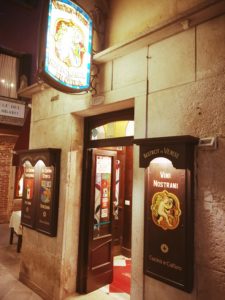
At glance, you couldn’t leave Venice without having a stop at the French named Bistrot de Venise. An original concept created in 1993 and impulsed by Sergio Fragiacomo, a history passionate, who paid many efforts to retrace the discovery of the ancestral Venetian cuisine, essentially from the Middle Ages until the Renaissance.
Indeed, different fine dishes, mostly appreciated during this period by mainly people of the nobility, were adapted. Partly inspired by the 130 recipes, transcribed by an anonymous Venetian gastronome whose archives are kept in microfilms, in the Vatican. Moreover, the historical menu, integrated into the spirit of the Bistrot de Venise, also took in consideration the respectably work of two ancient culinary masters Bartolomeo Scappi and Maestro Martino, also visible into booklets, that you may ask to have a look by the waiter (photo credits: Alex Plato).


Nested between two tiny streets and one of the typical Venetian waterways (so practical for the delivery of the foodstuffs), this Bistrot de Venise as well follows the example of the Parisian literary bistros, by regularly organizing varied events, such as a tastings, some literary lectures, art exhibitions… A new dynamic actuality, partly encouraged by the writer Mme Teisseire who suggested to also complete the menu with some antique culinary philosophy, once developed by Apicius.
Spread between a cosy interior hall, mixed between red and black, along an extended paved terrace, you would easily find your place at one of the tables, enlightened by your own lamp. Adding to this, this idyllic framework is located just a few steps away from the Saint Mark’s Square.

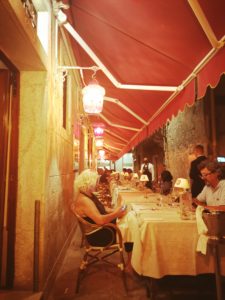
More than a bistro, this innovative restaurant, hides an important wine reserve, offering more than 200 references, mainly fed by the research program on rare wines and Venetian gastronomy. A colossal task lead by the founder, with the support of Marcello Brusegan, a culinary consultant and the author of the book La Cucina Venezia.
For your information, some of these jewels are only distributed and available at the Bistro de Venise, skilled advised by the friendly sommelier, baptized Stefano Cipolatto. The majority of these juices comes from Veneto, Friuli and the edges of the Adriatic Sea, including several very rare specimen, directly coming from small producers. On top of that, this precious selection is notably part of La Carta delle Carte Ambasciatore del Vino, elaborated by the Enoteca Italiana, ranking it in the 30 best wine lists, in Italy.
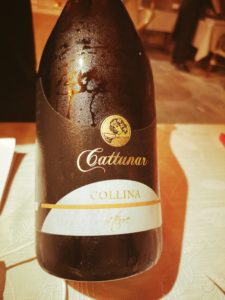
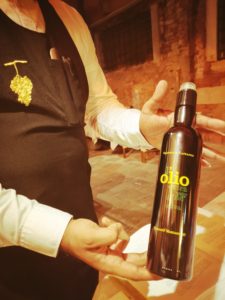
As a matter of fact, each one pairs to a specific dish and thus, on the menu, you would naturally find the treasures of the past, from seafood, spices and antique fruits. We present you some of these delights, sometimes assembled altogether, for an unexpected sweet and sour wedding. A very open restaurant to the World, like its Venetian, such as this Collina wine, from Croatia, this vintage 2016 (with malolactic fermentation) is singular in the way that it was raised to an altitude estimated, between 300 and 600 meters, so close to the former Republic of Venice.
This wine is notably suggested for the first course, deeply inspired by this ancient cuisine. A “saor” shrimp (for sweet and orange) follows the historical recipe from Cuocho Anonimo, with a fried shrimp, marinated for at least two days and with turmeric.
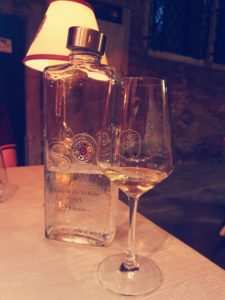
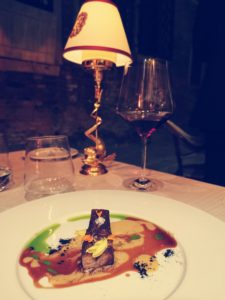
Along this juicy aspect, the restaurant is also prone to source local ingredients, but always in the respect of the tradition and environment. That’s the case for the red tuna carpaccio, only caught in summer between the Corsica and Sardinia islands. As far as we know, this rare fish is rather seasonally captured, in order to protect this endangered species, and only in certain classified areas. Moreover, for a higher conservation, tuna is thus stored at a very low temperature (-60 °), which aims to eliminate all kinds of bacteria. A delicious fresh appetizer, completed by a vinaigrette made of green apples, dill and liquorice. Then came a veal tongue, and its garlic curry, marinated at low temperature, sifted with a reduction of basil. For a result that is crunchy on the surface and tender on the inside. All accompanied by a Barbaresco red wine, emblematic of Piedmont, made from its nebiollo grape (from fog). Thus, it took 18 months in barrel and 12 months in bottle, in order to achieve this surprising result.
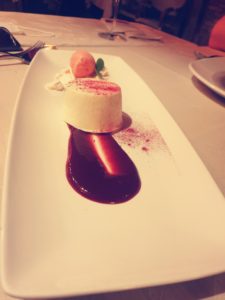

This inventiveness also expresses through these ancient rafiolli finotto, starring 3 kinds of local cheeses (30% tallegio, 60% asiago and 10% gorgonzola), as well filled with some smoked ricotta, almond and saffron. This creamy ensemble is hydrated with a sage and rosemary sauce, plus a Friuli wine from 2016, composed of a blend of 3 indigenous grape varieties from this Italian region (mainly based on ribolla but also verduza and picoulota).
Adding to this, we invite you to try the fintotto, a real finto risotto, meaning a not true risotto, since it’s not cooked with rice but here with fennel. Garnished with some Sicilian prawns, cooked and raw scallops, sprinkled with liquorice and beetroot, as well as a reduction of basil.
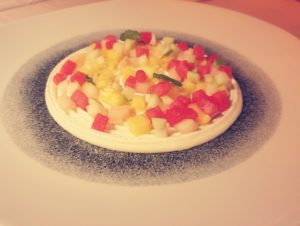
Not to mention the slice of Ombrina on a Jerusalem artichoke cream adorned with a julienne of meadow mushrooms, fine peaches, caramelized hazelnuts with cinnamon and rosemary oil.
To end this dinner, why don’t you pick up one the sweet creations, that would make you deepen your knowledge about Venetian gastronomy? For instance, the smooth Panna Cotta with seasonal fruits, or the unmissable Torta Biancha Reale, based on a recipe by Bartolomeo Scappi, from the 16th century. In fact, a rich ricotta texture, reinforced by a powerful heart of ginger, but softened by a rose ice cream.
Otherwise, choose the timeless Tiramisu, again in a revised version, by Bartolomeo Scappi, back in the 16th century, but according to the original recipe officially adapted in a Treviso restaurant, in the 70s. A contemporary update, including a creamy and aerial structure, sublimated with small cubes of bitter coffee jelly and small coffee macaroons.
This Bistrot de Venise is listed on the Michelin guide and offers different tasting menus, that mix these historic dishes (able to take you back more than 500 years in the past), with more contemporary ones.
Bistrot de Venise / Calle dei Fabbri, San Marco 4685, 30124 Venice (Italy) / Phone: +39 041 523 6651.
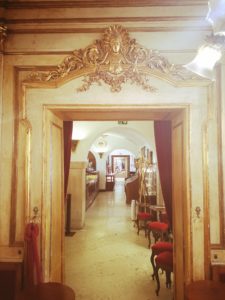
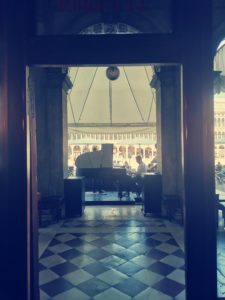
Back in Saint-Mark’s Place, you wouldn’t miss the live concerts happening in front of distinct places, at every corner of the square. Among them, the Caffè Florian is considered as the oldest and one of the most famous cafés in Italy, founded in 1720 by Floriano Francesconi (photo credits: Alex Plato).
Located next to the Campanile, this Venetian institution is a symbol of the 18th century refinement, since it hosted multiple personalities, residing or not in the City of the Doges, such as Goethe, Alfred de Musset, George Sand, Giuseppe Verdi, Lord Byron and even the gentleman Giacomo Casanova… Most of them seduced by the sumptuous decoration and its famous delights! Indeed, since its early days, this Café benefited of a perfect location, under the arcades of Procuraties Nuove, on the edge of the majestic Saint Mark’s Place.
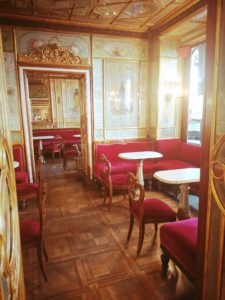
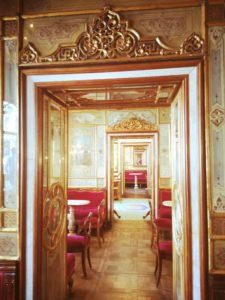
Its inauguration occurred on December 29th, 1720 under the name of Alla Venezia Trionfante but was quickly renamed by the name of its founder. The success was so important that in the 1800s, the Caffè Florian became open all night long, making it already a meeting point for all night owls, while even turning into an important issue for literature, since illustrious writers frequented the place: Alfred de Musset, George Sand, Madame de Staël, Charles Dickens, Honoré de Balzac, Henry James, Lord Byron, Marcel Proust, Paul Morand… and more recently Jean d’Ormesson.
When artists meet Art, the Caffè Florian consists of six lounges, all richly decorated with gilding, paintings, mirrors and sculptures. For instance, the Hall of Great Men is decorated with portraits of famous Venetians painted by Giulio Carlini but not only… depicting Carlo Goldoni, Titian, Marco Polo, and the legendary architect Andrea Palladio.
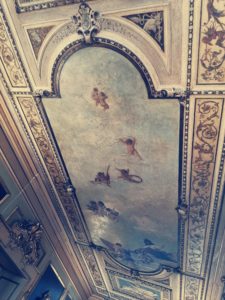
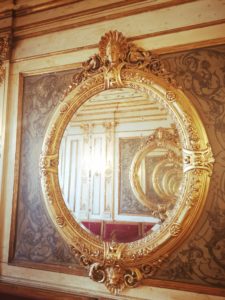
In parallel of the Senate Hall, decorated with paintings that symbolize the arts and sciences, the Liberty Room owns vaults decorated in the style of the early 1900s. In the other hand, the Oriental Room and the Chinese Room owe their names to the influence of the ornaments. Finally, the last lounge, the Seasons Hall presents a series of magnificent mirrors.
Just a good introduction, before eventually spending some time in the café terrace, open on sunny days, where musicians play your favorite songs day and night. Either inside or outside, you may admire from a breathtaking view over these incredible monuments, from your comfortable seat, while enjoying one of the different specialities of the place… From the well renowned hot chocolate, the various coffees, and the brunch composed of sweet pastries, small sandwiches and a glass of prosecco, the choice is plethoric.
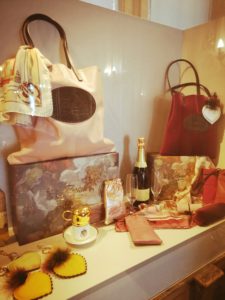
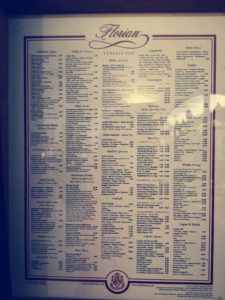
In order to pursue the enthusiasm and uniqueness of a Florian experience at home, we invite you to buy the products of the Gourmet Collection at the store or online. A special range belonging to the traditional Florian spirit, counting on coffee, tea and chocolate, along cups, milk jugs of different sizes, teapots, saucers, carafes and glasses… Everything that characterizes the Florian Service, all kinds of unique presents for you or to offer, usable in everyday life or for special occasions. For other effects, special gift boxes have been specially launched to recall the city of Venice and the decorations of this historic Caffè. On top of that, a Lifestyle collection includes a wide range of products still promoting the Caffè Florian atmosphere through a selection of products, dedicated for your place, including fashion and olfactory pieces. Therefore, you could find some small leather accessories, jewelry and scarves reproducing the identity of the Caffè.
Caffè Florian / Piazza San Marco, 57, 30124 Venezia VE, (Italy) / Phone : +39 041 520 5641 / Open everyday from 9am to midnight. More information on the official website and the online store.


Another historic café, also ideally situated on the Piazza San Marco, this time founded from 1775, the Caffè Quadri gained a certain notoriety among the other bars visible in the square, where are used to play numerous live musicians day and night for a passing audience (photo credits: Quadri).
In this beautiful layout, nested under the centennial arcades, happened so many historic events, such as the end of the Venetian Republic, along many secrets kept by a wagon of celebrities who frequented this institution, facing the Café Florian. Among them, we may remind Stendhal, Lord Byron, Alexandre Dumas, Wagner and even Marcel Proust. Nowadays, this Café Quadri remains one of the main meeting places for a new generation of artists, in particular those participating in the Mostra Film Festival. In the meantime, this place as well naturally seduced one of the youngest chefs in the world to have been awarded by three Michelin stars…


Indeed, Massimiliano Alajmo, has ever been motivated to share his own interpretation of the countless flavors of Italian cuisine. Associated with his brother Raffaele Alajmo, they grounded their family culinary venture, the Alajmo Group, spreading their spirit through ten establishments, a line of delicatessen products and even an event planning agency.
For your information, many of their concept recipes are elaborated from their proper laboratory Le Calandre, based in Padua… Before reaching the different restaurants of the company, such as La Montecchia restaurants in the same city, but also Caffè Stern in Paris, along the Grancaffè and the Ristorante Quadri in Saint Mark’s Place and the AMO café, an elegant gastronomic concept, located in the Fondaco Dei Tedeschi luxury mall and still in Venice (we’ll have a look below).


Concerning the Caffè Quadri, divided between the Quadrino (including the Grancaffè) downstairs and the Michelin restaurant upstairs, baptized Quadri. This ensemble enjoyed a recent renovation project, born from the wish of Massimiliano and Raffaele Alajmo to preserve the extraordinary heritage of the Caffè Quadri, and to register the place into the history of Italian cuisine, as well as the contemporary history. To make this refreshing action possible, the team collaborated with the internationally renowned French designer Philippe Starck, with whom they have already collaborated on two other projects, aka the Caffè Stern, a phantasmagorical bacaro in the heart of Paris, and the AMO café.
After months of huge works, the legendary 18th-century café went born again, revealing its native magic, then sublimated by a romantic and slightly surnatural atmosphere imagined by the fertile imagination of the Starck Studio and implemented by a set of exceptional Venetian artisans, displaying their incredible talent.
“We wanted to restore Quadri, because certain decorative elements had deteriorated over the years, in particular the stucco in the café on the ground floor, which had disappeared under ten successive coats of paint. It was time to restore the place to its original splendor, through a contemporary reinterpretation worthy of representing Italian cuisine internationally, ”said Raffaele Alajmo, the Managing Director of the Alajmo Group.


Unless the Alajmo brothers and Philippe Starck have been knowing each other for ten years, this rehabilitation task was not easy, since the native Venetian essence needed to be preserved in a new perspective, showing here an evident influence of the French designer, within the revelation of the original decoration and architectural elements.
That’s why, from the typical golden-brown fabrics, from the Tessitura Bevilacqua weaving workshop, covering the walls, the choice of the light intensity on the prominent Rezzonico Murano (dating from the 1930s) and the more recent Aristide Najean chandeliers and in the chimerical collection of stuffed animals along the winged Lion of Venice, that all took up residence, the Quadri dream had to stay alive in one way or another. Moreover, Marino Folin, a local architect was appointed to lead the project, in coordination with the Venetian craftsmen chosen for this restoration mission. and the Superintendent of Archeology, Fine Arts and Landscapes of Venice in charge of heritage conservation issues.
“The great cultural operation carried out during this restoration was to involve Venetian artisans, most of whom are the descendants of small family businesses dating from the 19th and 20th centuries” explains Marino Folin.


Apart from the decorative consideration, the Caffè Quadri enjoys a perfect location in the old center of Venice, not far from the Laguna and therefore needs to often face the vagaries, inherent to the impressing phenomenon of acqua alta. These remarkable high tides regularly flood the city and the Caffè Quadri, especially since it’s located in the lowest part of the City of the Doges, and unfortunately at each of its passages, the water flowing leaves its traces on walls and furniture.
Rather than fighting the inevitable, Philippe Starck has decided to highlight the esthetic effects provided by the acqua alta, notably by choosing unvarnished raw brass for the table legs, the reception counter and all the other elements in contact with the ground. Thus, over successive floods, the metal eventually oxidized and changed color, becoming an inevitable witness to Venetian life. Adding to this, this acqua alta has also been illustrated in a graphic identity created by GBH, a British creative agency, which has also worked with Starck for more than twenty years.


For instance, a significant effort has been achieved on the brass letters of the entity, becoming unhooked, cleaned and then reworked by a couple of craftsmen from the last Venetian foundry, the Fonderia Valese. A necessary rehabilitation for these ancient and amazing letters scarred by the signs of times, polished to obtain a brilliant golden color in reference to the sparkling looking of the Ristorante Quadri. The gourmet restaurant located on the first floor and logically always preserved from high tides.
The rehabilitation of the walls of Quadrino and Grancaffè Quadri, located on the ground floor, was carried out by numerous art restoration experts, particularly Anna de Spirt and Adriana Spagnol. Their common goal was to remove the different layers of painting, accumulated over time, to recover the original wonderful stucco, dating from the late 19th and early 20th centuries.
“These rugs are authentic paintings, it is impossible to describe them or to give them a name. They express what is in us that we ignore” adds Philippe Starck.


Last but not least, a flow of painted rugs arose to cover the restaurant floor, designed by Philippe Starck‘s daughter Ara, starring an interesting set of glamorous patterns. On top of that, this decoration is reflected by the transparent mirrors, conceived by the Barbini brothers, a family of master glassmakers established in Murano since 1570, which at the time produced all the mirrors for the Palace of Versailles. In parallel, the wooden frames of the windows overlooking St. Mark’s Square have been restored by a genuine artisanal carpentry company Capovilla.
Beyond this framework, the Ristorante Quadri embodies the contemporary expression of the Italian and more precisely Venetian gastronomic tradition, starring a premium offer of seasonal and fresh fish, fruits and vegetables with a daily delivery from the Rialto Market. Therefore, this upstairs establishment received its first Michelin star back in 2012.
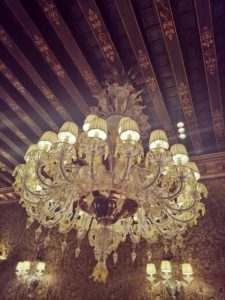
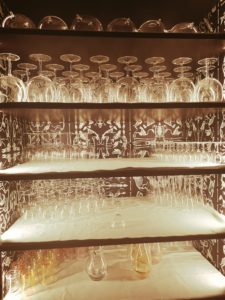
For your information, the Ristorante Quadri offers three different tasting menus, baptized Max, Raf and Quattro Atti (served in four acts) but customers can also choose two or three courses from the three menus at their convenience. By the way, the new Quattro Atti menu favors sharing and conviviality, since each act includes several plates served at the center of the table, in order to be shared between guests. Then, they could appreciate the entire diversity and color palette conveyed by the tableware, created by the Alajmo brothers, reflecting an entirely Venetian aesthetic.
Nonetheless, the personnel wears new tailor-made outfits which are able to break away from a certain classicism, inspired by the outfit of the Venetian noblemen welcoming their guests. Without forgetting that to pay a tribute to the important renovation works realized, the Alajmo brothers made a video documentary (photo credits: Alex Plato).
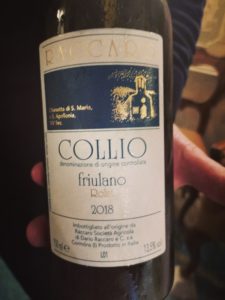
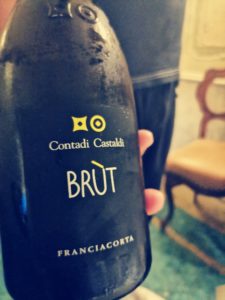
Otherwise, in the ground floor at Quadrino, you can still enjoy some Italian and Venetian delights, really influenced by the high standard of the fellow Quadri but in a light version. Whether you prefer sitting inside or outside this historic caffè, you would always enjoy a direct panorama on the activity going on Saint Mark’s Place.
You have to know, the menu changes weekly, but always includes a selection of appetizers, pastas, risotto and a lot of original main dishes, as well as Quadrino classics. Among them, you could discover the chef Max Alajmo‘s own crispy gourmet pizza, house-cured anchovies and the Big Max, a new version of the classic hamburger. As you see nearby, a couple of wine suggestions from the sommelier to pair your diner…
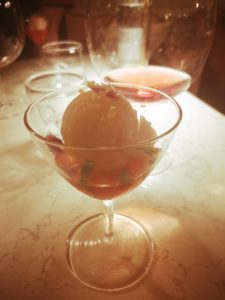
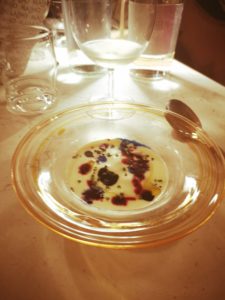
Here, you can admire a selection of different specialities, either from Quadri and Quadrino.
As a smooth starter, why not try a tasty yellowtail tartar, caught in the depths of the Adriatic Sea and seasoned with a touch of perfumed olive oil?
As another signature dish from the Quadri restaurant, a surprising cappuccino from the Laguna, composed of skillfully slivered mussels and their potato cream, beet emulsion and spirulina. For a whole surprising creamy effect!
Then, some smooth paccheri (large pasta) hydrated with a savorous tuna belly sauce, completed by stewed octopus and scampi. Not to mention, a portion of crunchy squid from the Venetian bay, accompanied with its small and fresh vegetables from the gardening island of San Peruzo. Before a smooth risotto, with squid ink and again its thin squid blades.
Caffè Quadri & Quadrino / Piaza San Marco, 121, 30124 Venezia VE (Italy) / Phone : +39 041 522 2105

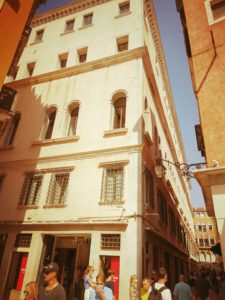
The latest Alajmo baby is untitled Amo, a borderless contemporary café located in a Renaissance refreshed atrium of the Fondaco dei Tedeschi. Completely restored by DFS (a subsidiary of LVMH), this historic edifice, situated close to the Rialto Bridge, became the first luxury shopping center to be settled in Venice. First constructed in 1228, the building was rebuilt between 1505 and 1508, into a very functional four-floor structure, after its destruction in a fire.
Organized around a grand inner courtyard, its architecture is typical of the Italian Renaissance style. Like the Fondaco dei Turchi, the Fondaco dei Tedeschi combined the multiple functions of a palace, warehouse, market and restricted hosting quarters for its visitors, in this case mainly Germanic merchants from cities such as Nuremberg, Judenburg and Augsburg (photo credits: Alex Plato).
For your information, the ground floor was only accessible by water and was used for storage, while the first floor was dedicated to offices and an upper area contained about 160 private spaces.

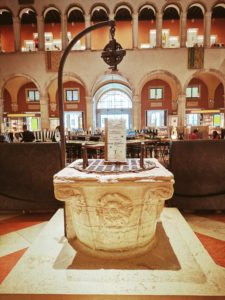
By the way, this German occupation occurred until the Napoleonic occupation, becoming one of the most powerful colonies of merchants in Venice, developing this trading hub trading, notably between Orient and Europe. This German community was so important that the nearby San Bartolomeo church was worshipped in relation. Adding to this, a commission on their transactions was taken by the Venetian Republic. However, later in the 20th century, Fondaco dei Tedeschi hosted this time, the local headquarters of the Italian Post, until the transmission of the building into the hands of the Benetton Group, in 2008. The starting point, to bring back its original commercial function, arose when the Dutch architect Rem Koolhaas was commissioned to imagine a new shopping centre to be incorporated into the Renaissance walls, with as much as possible the preservation of its historical spirit.
At last, don’t you dare to miss the panoramic view on the Venetian roofs, available from the rooftop, only accessible by booking.

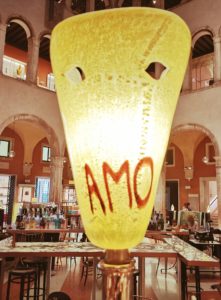
Stuck beyond the endless stalls of famous fashion brands, the AMO café is open continuously throughout the day, starting at breakfast with light until the customer’s departure. Adapting its offer to each moment of the day, the AMO café highlights its monumental surrounding decor, with an authentic gastronomic experience. The result is a refined layout, entrusted again by the creative vision of Philippe Starck and his daughter Ara. If you have a further look, you could clearly admire this lot of unique pieces, such as a modern selection of polished bronze chairs, designed by Tjep and directly imported from Amsterdam, facing some others chairs developed the Portuguese manufacture of Boca do Lobo. Both of these furniture or decoration elements are a concentrate of the Venetian spirit, and exactly fit into the solar framework and especially on the murals that offer a texture to this welcoming café, in an organic evocation of Venice, through its main assets.
“AMO is an island of Venetian mysteries amidst the treasures from all over the World. Each piece of furniture or decoration would amaze you, from the sofas inspired by the shape of gondolas, the glassware coming straight from the genius of Murano and notably the central chandelier, specially created by Aristide Najean, along the frescoes on the walls, are the representation of the fantasies of the Venetian carnival. The whole thing is shown like the setting of a Venetian theater” admits Philippe Starck.
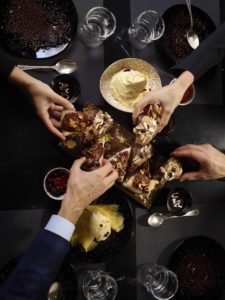
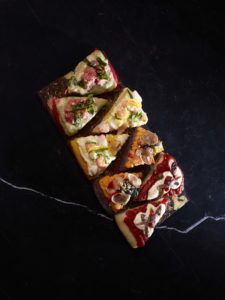
Thus, occupying a central presence in the Fondaco dei Tedeschi, this AMO café offers a colorful, convivial and healthy cuisine, in a friendly and bucolic atmosphere. Although, the lights evolve on the dark-toned leathers enveloping these custom-made sofas, forming different intimate alcoves at every corner of the place. Then, on your black marble table, would be served a selection of colorful dishes, some of which are prepared without wheat flour and even their pastries are more based on oil than butter.
All these specialities pursue the Alajmo entity, either generated from the central bar or from the coffee shop, where visitors would find a so tempting pastry counter.
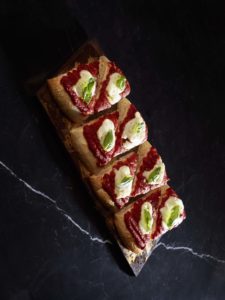
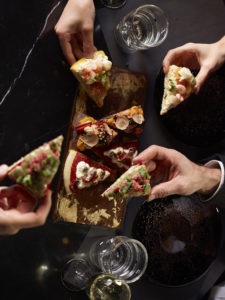
In this corner is displayed a wide selection of single-serve cakes and macaroons, as well as savory snacks, such as gourmet tramezzini (small Italian sandwiches), along mini-pizzas and fried cichetto (some Venetian tapas). A large tasty offer completing an ample menu of culinary preparations available, if you have some time to take a seat and imagined by Maxim Alajmo himself, the owner of the Quadri and Quadrino, we already reviewed before.





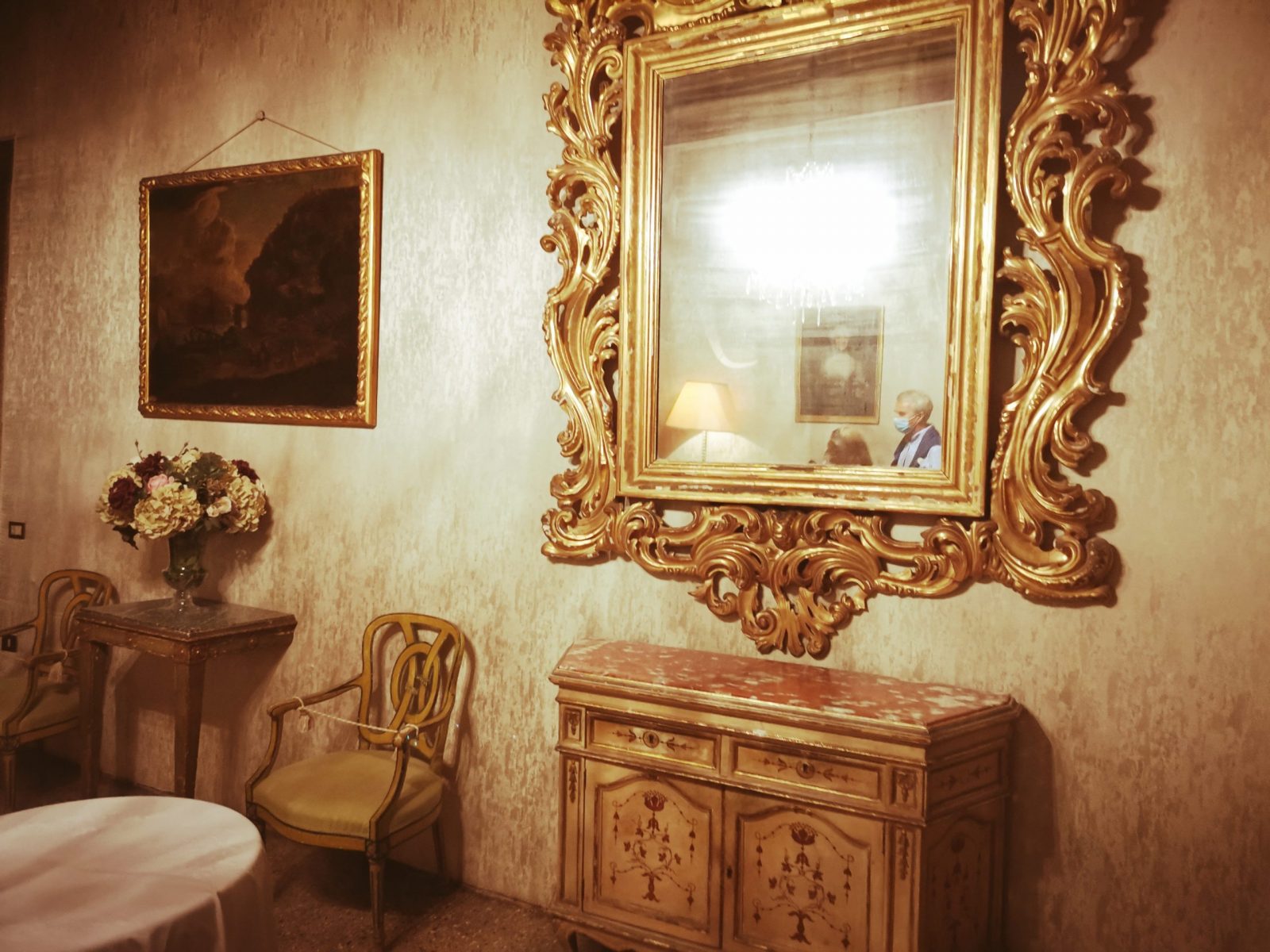

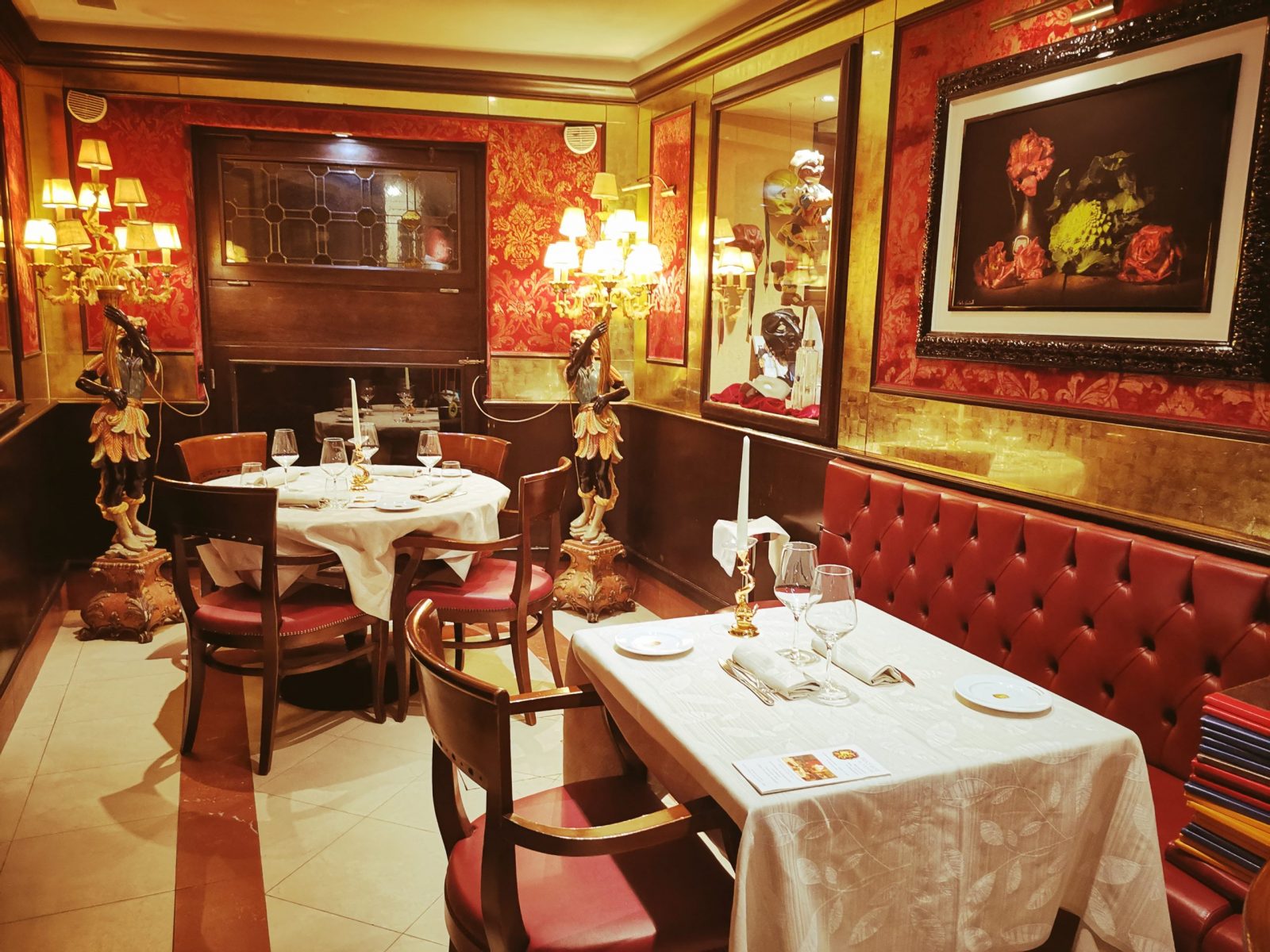
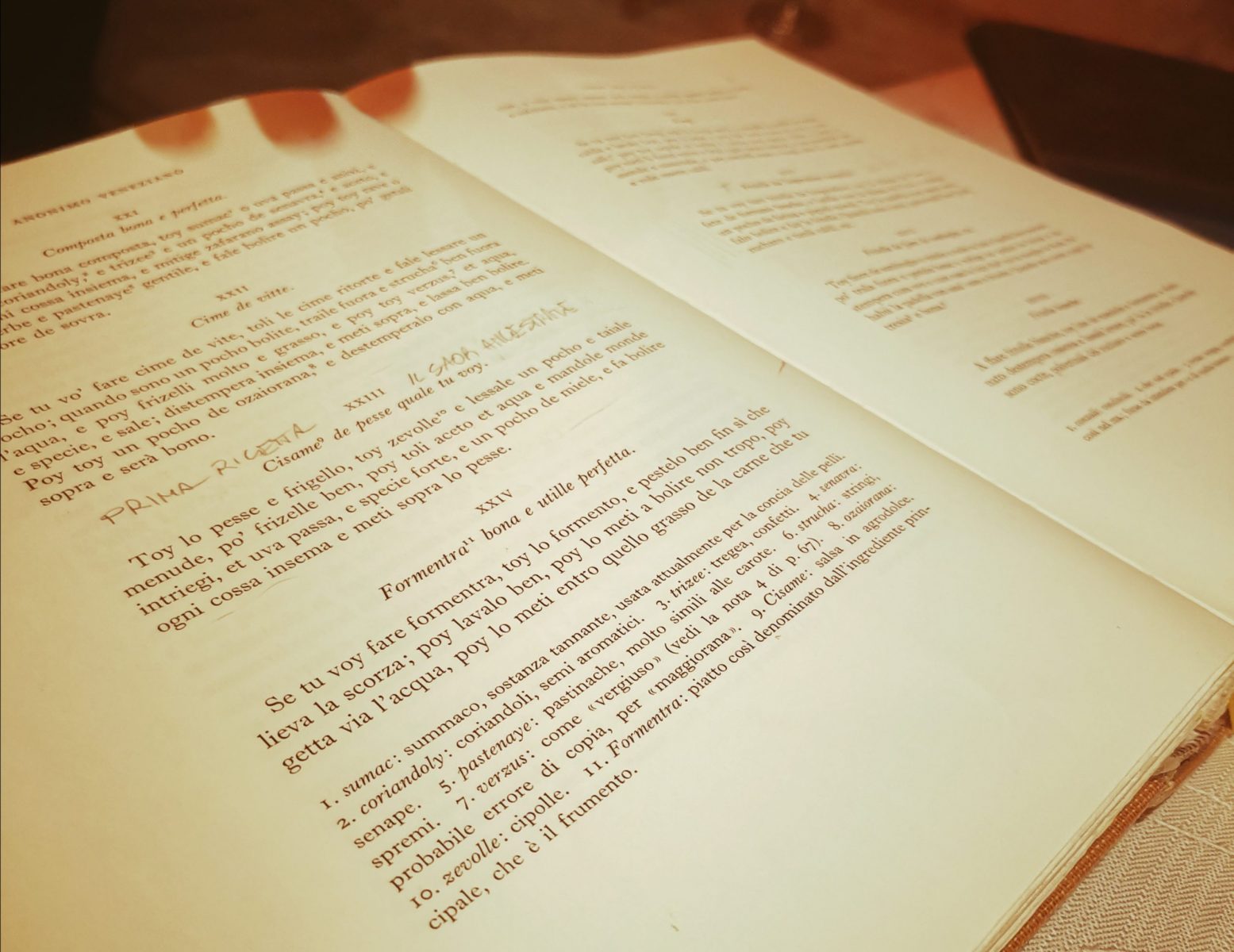
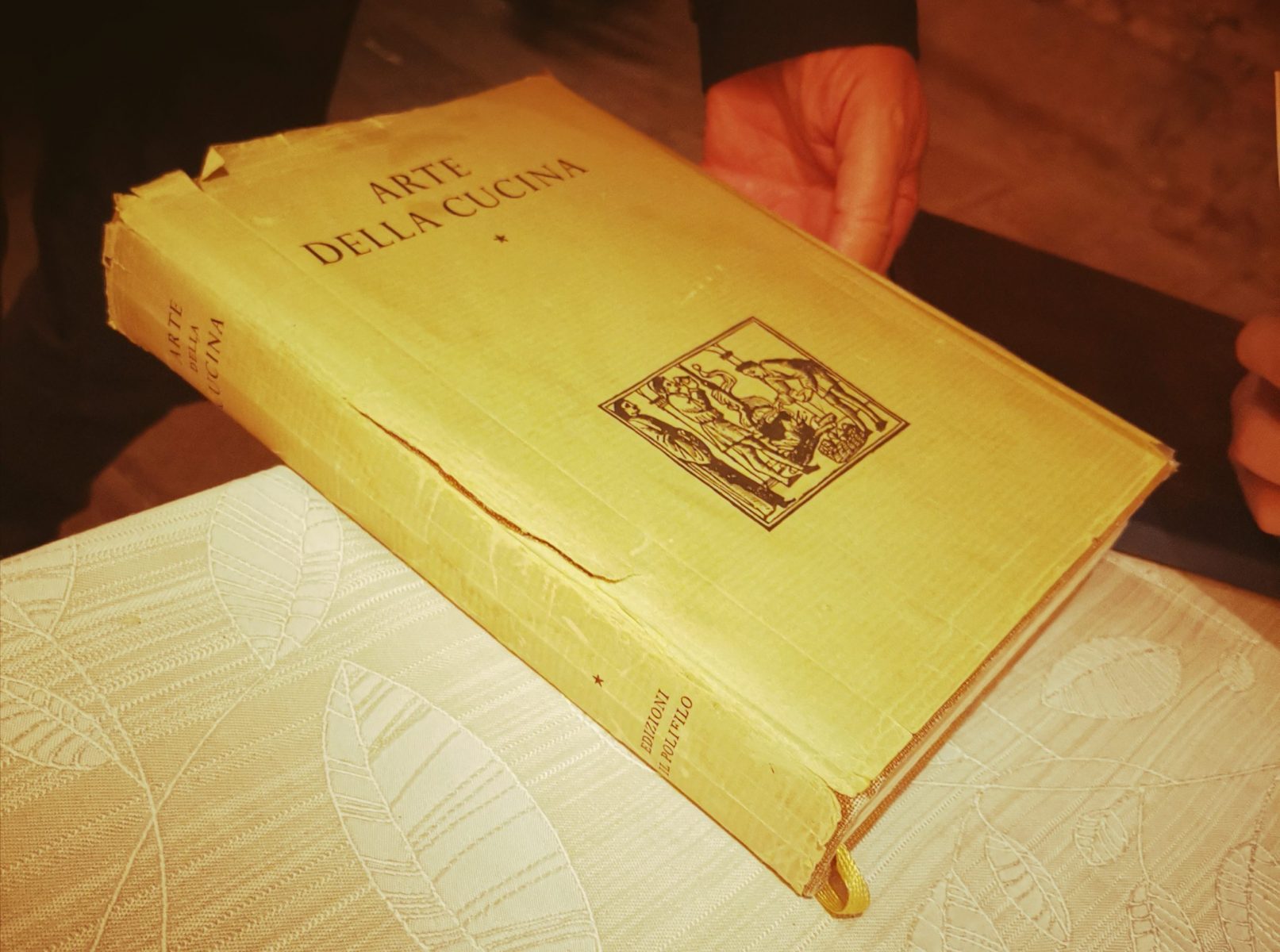
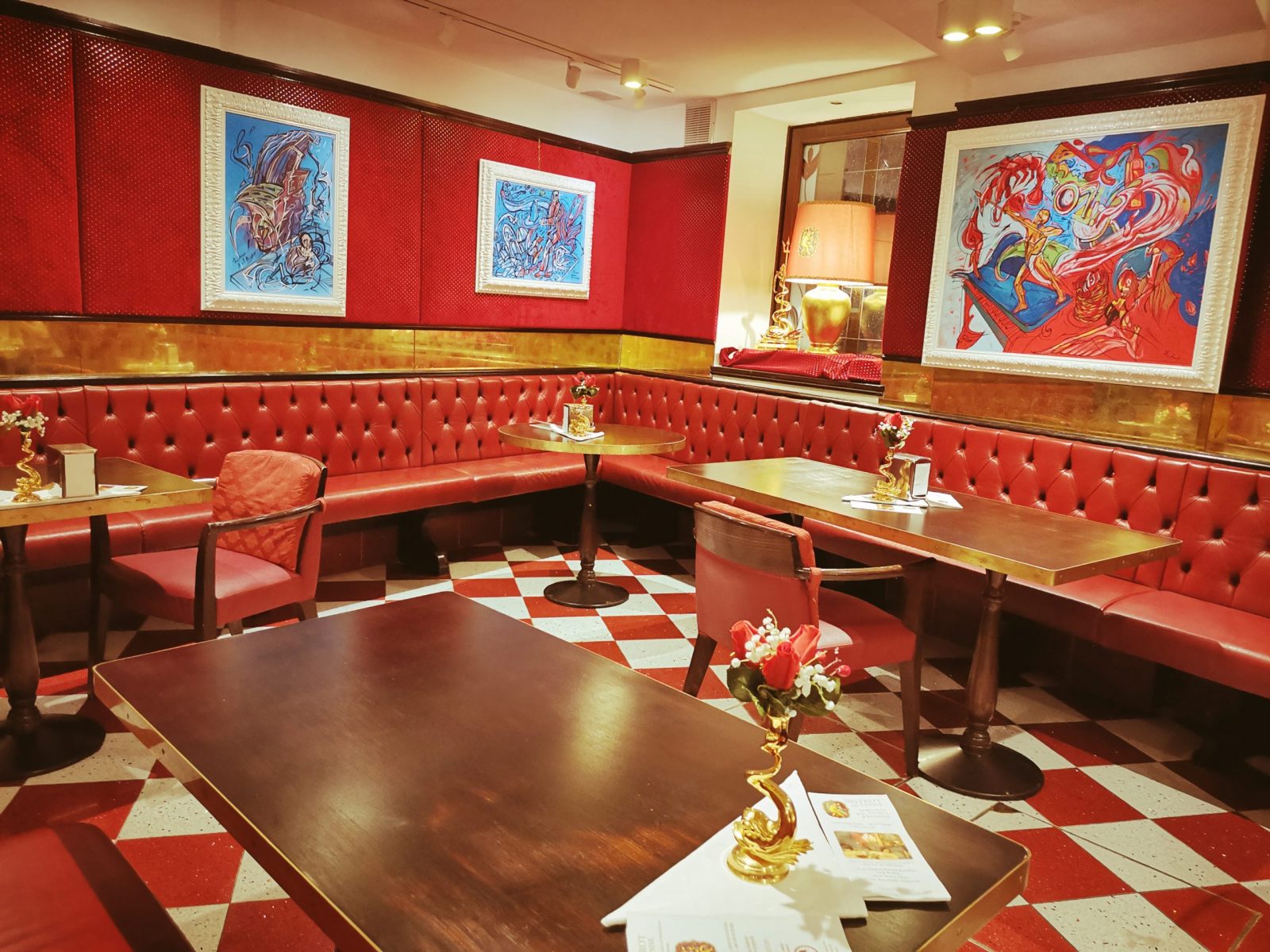
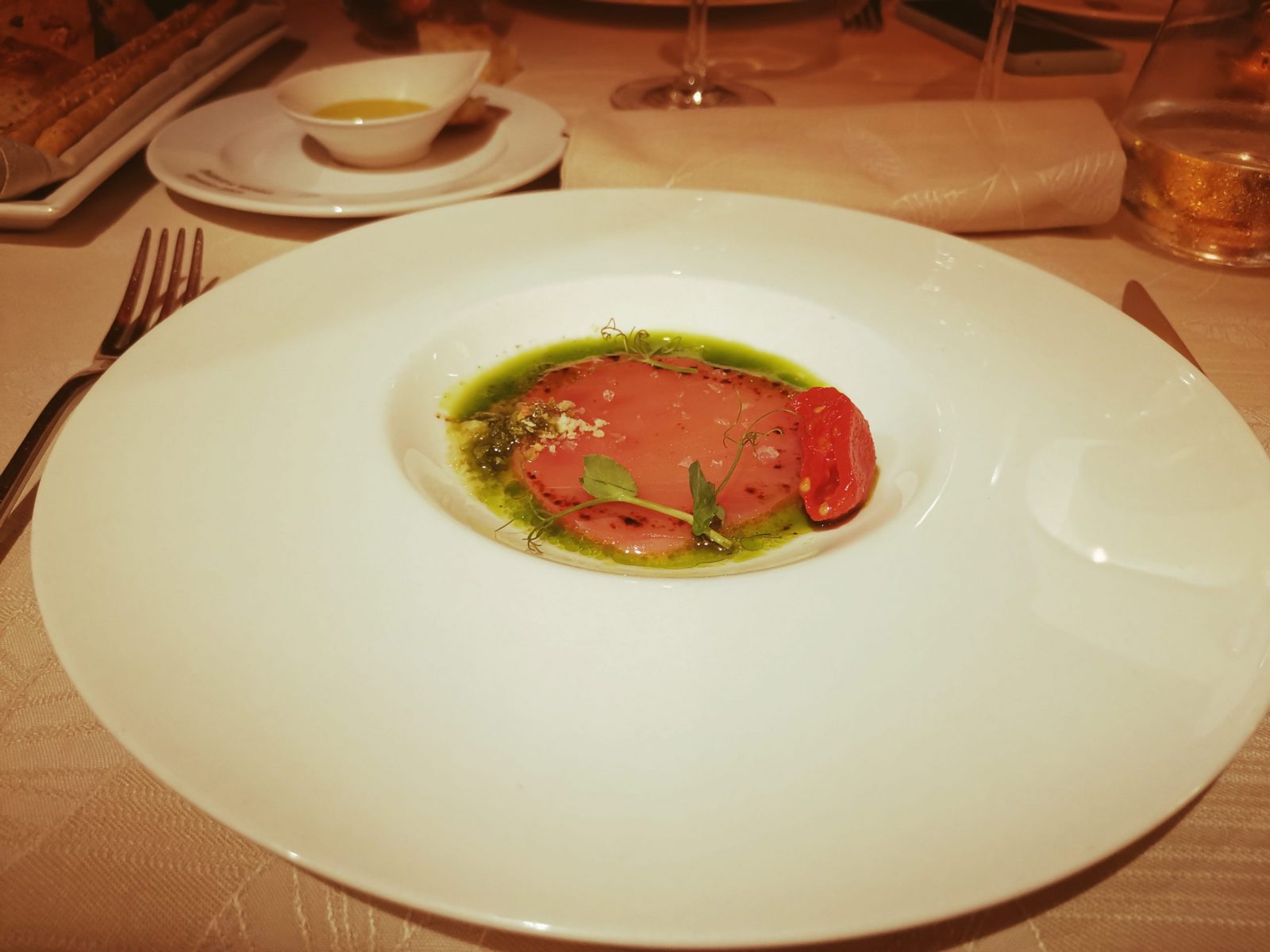
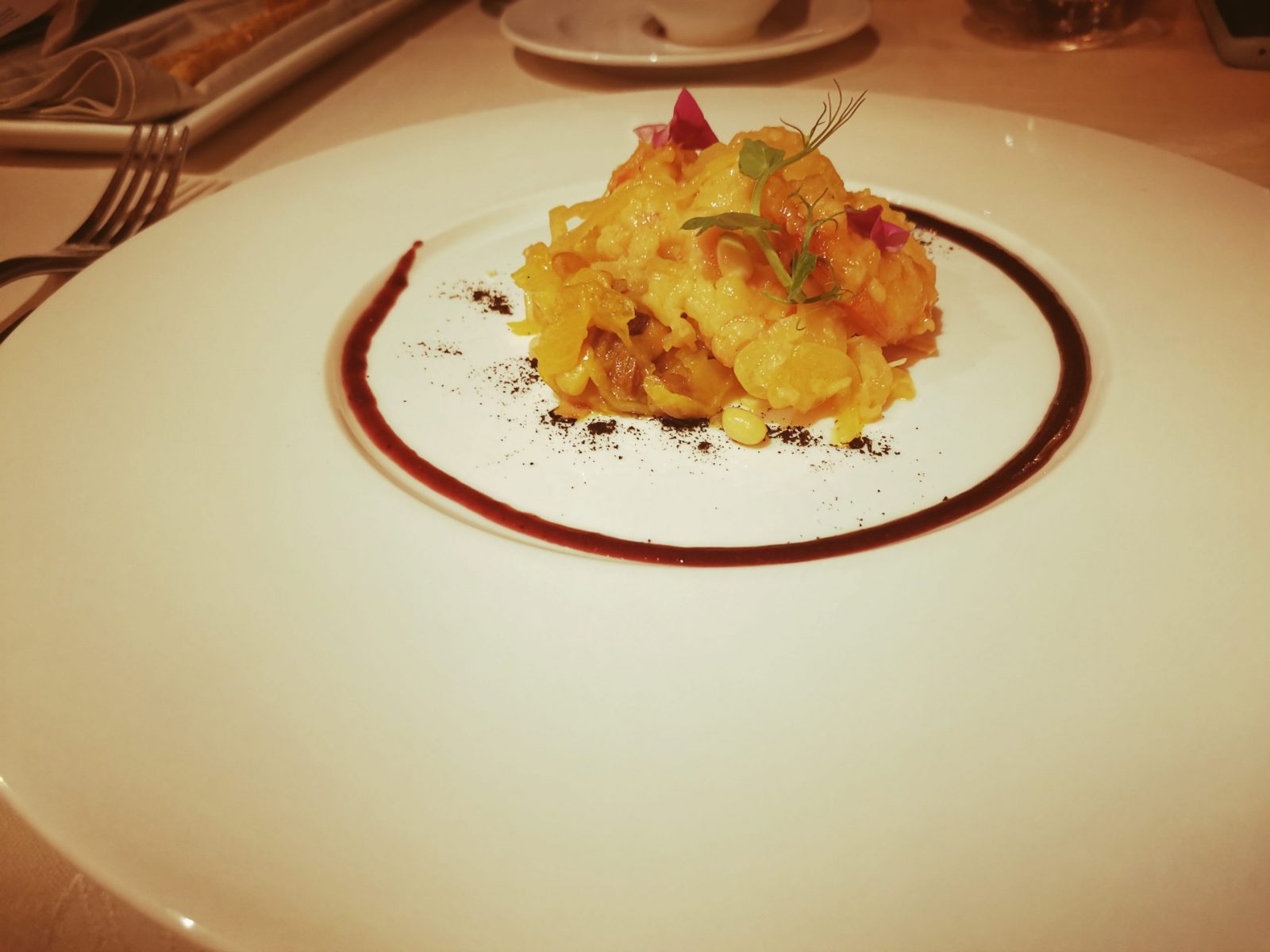
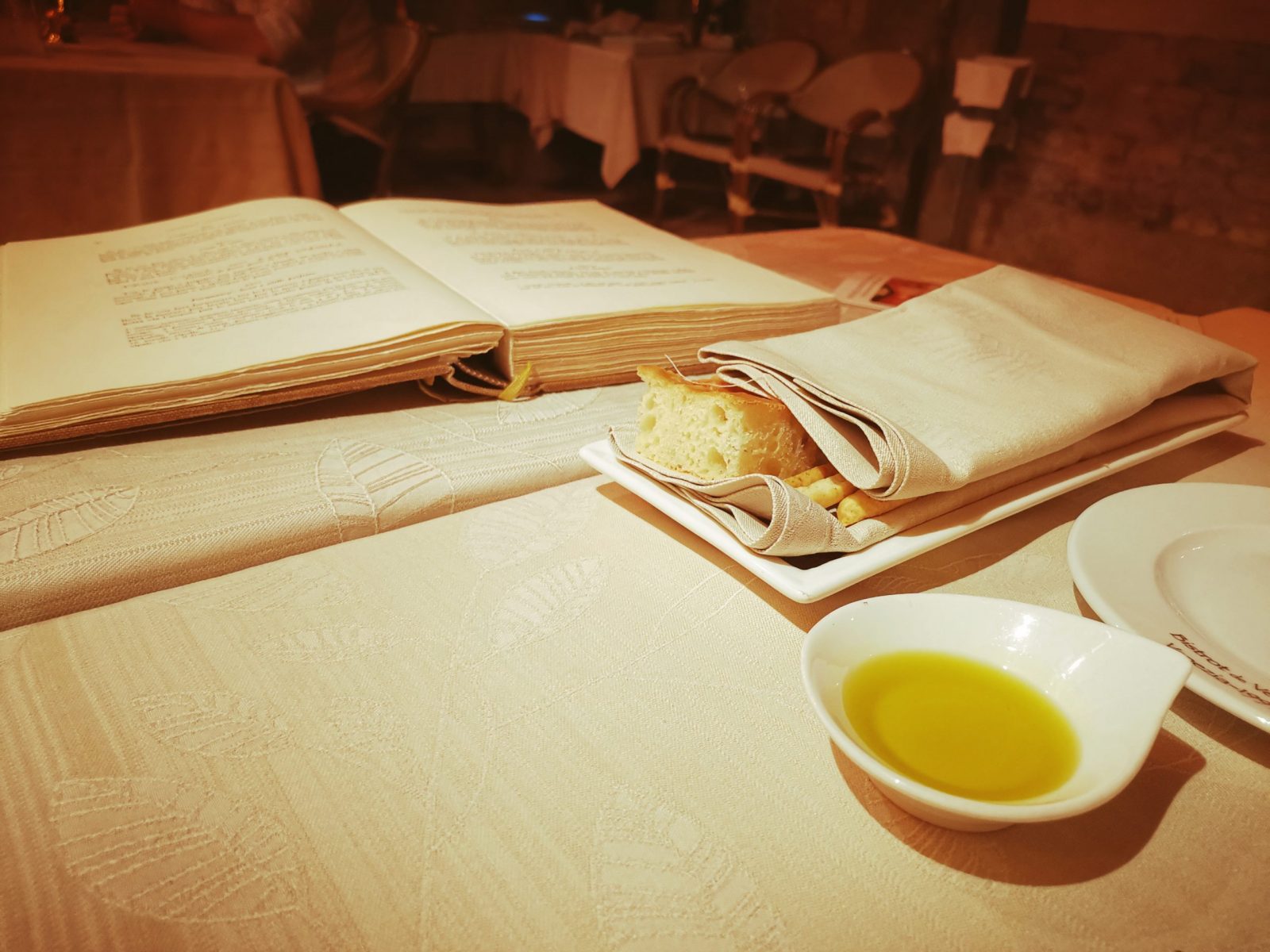
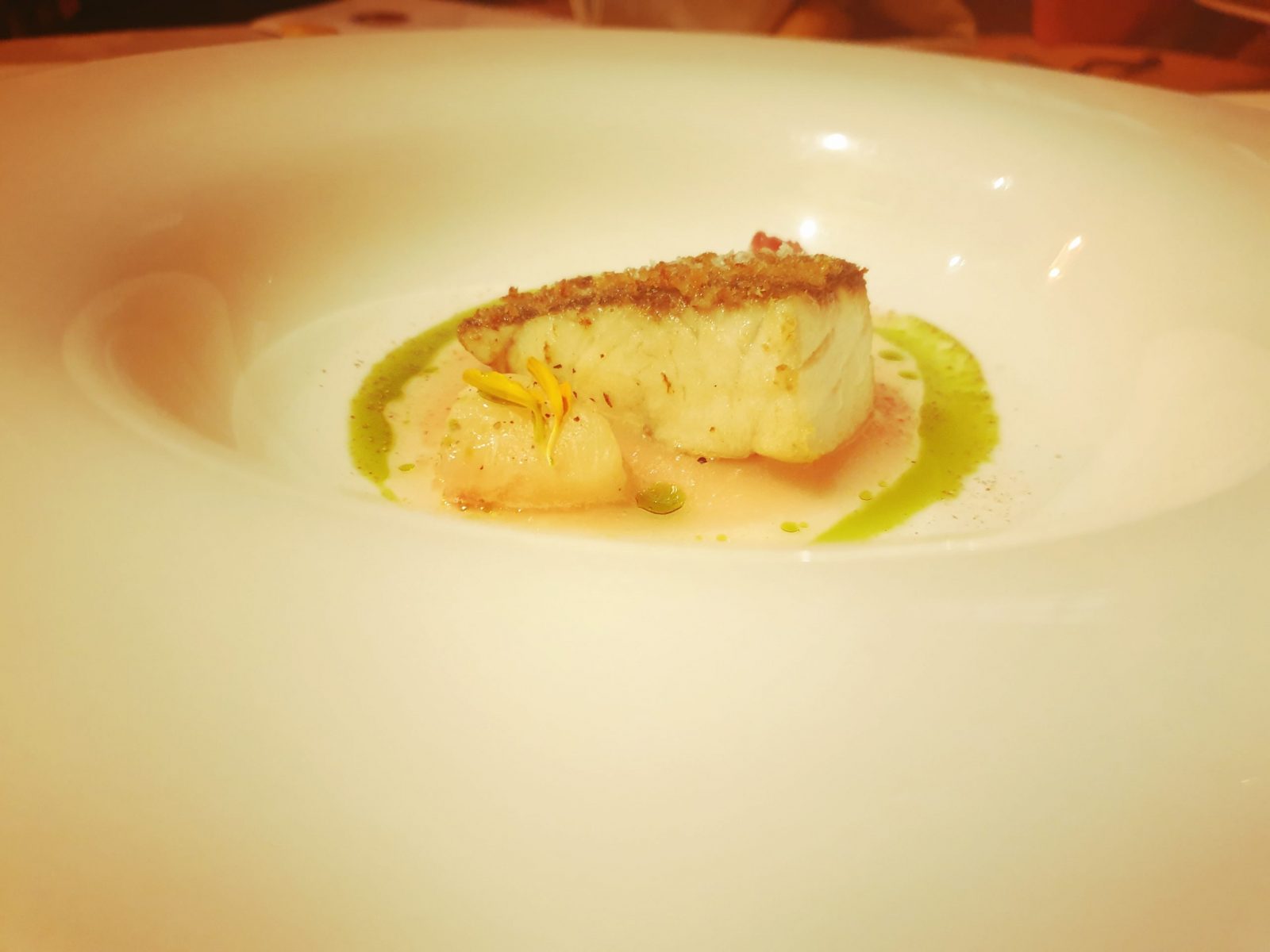
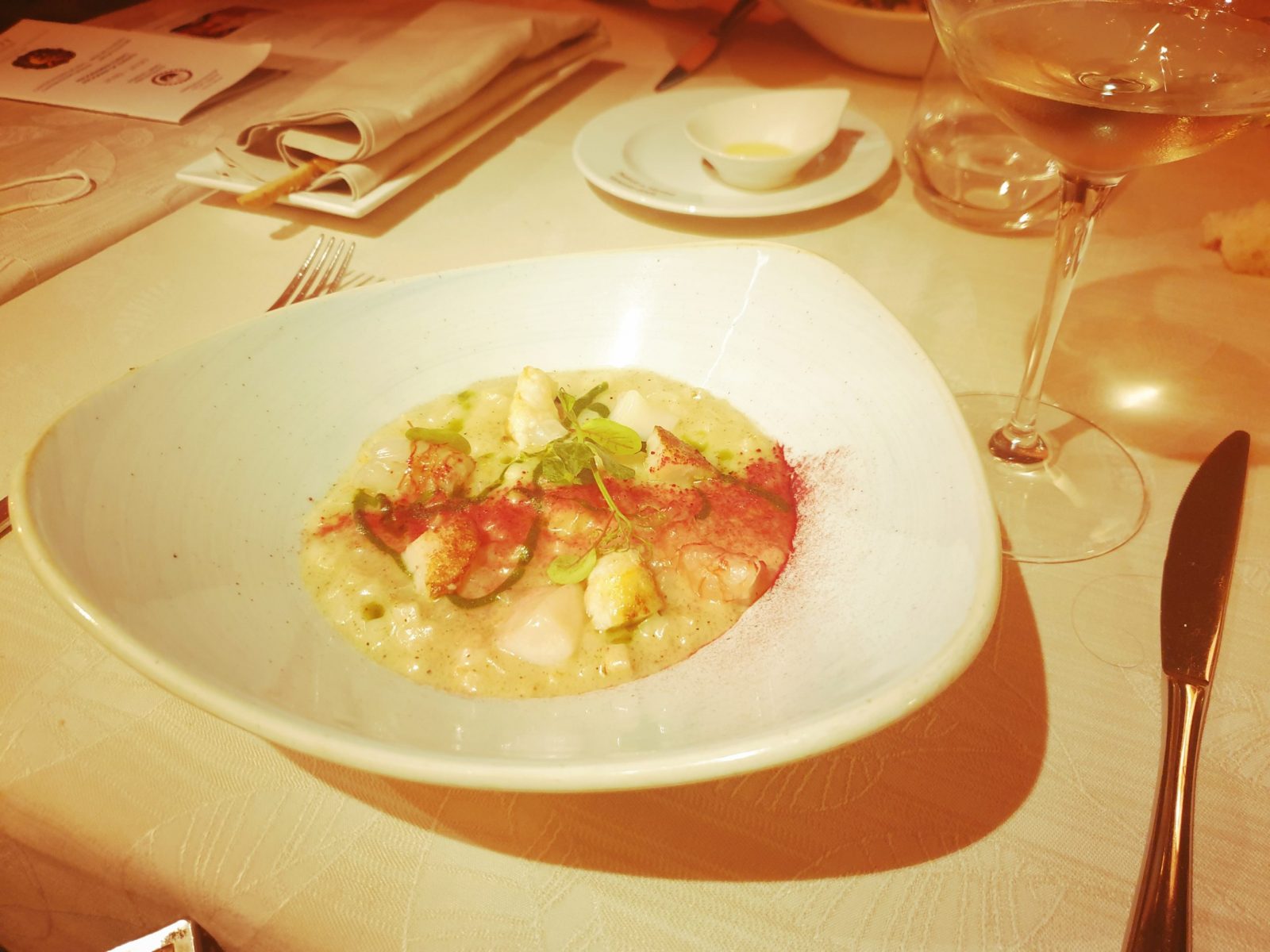
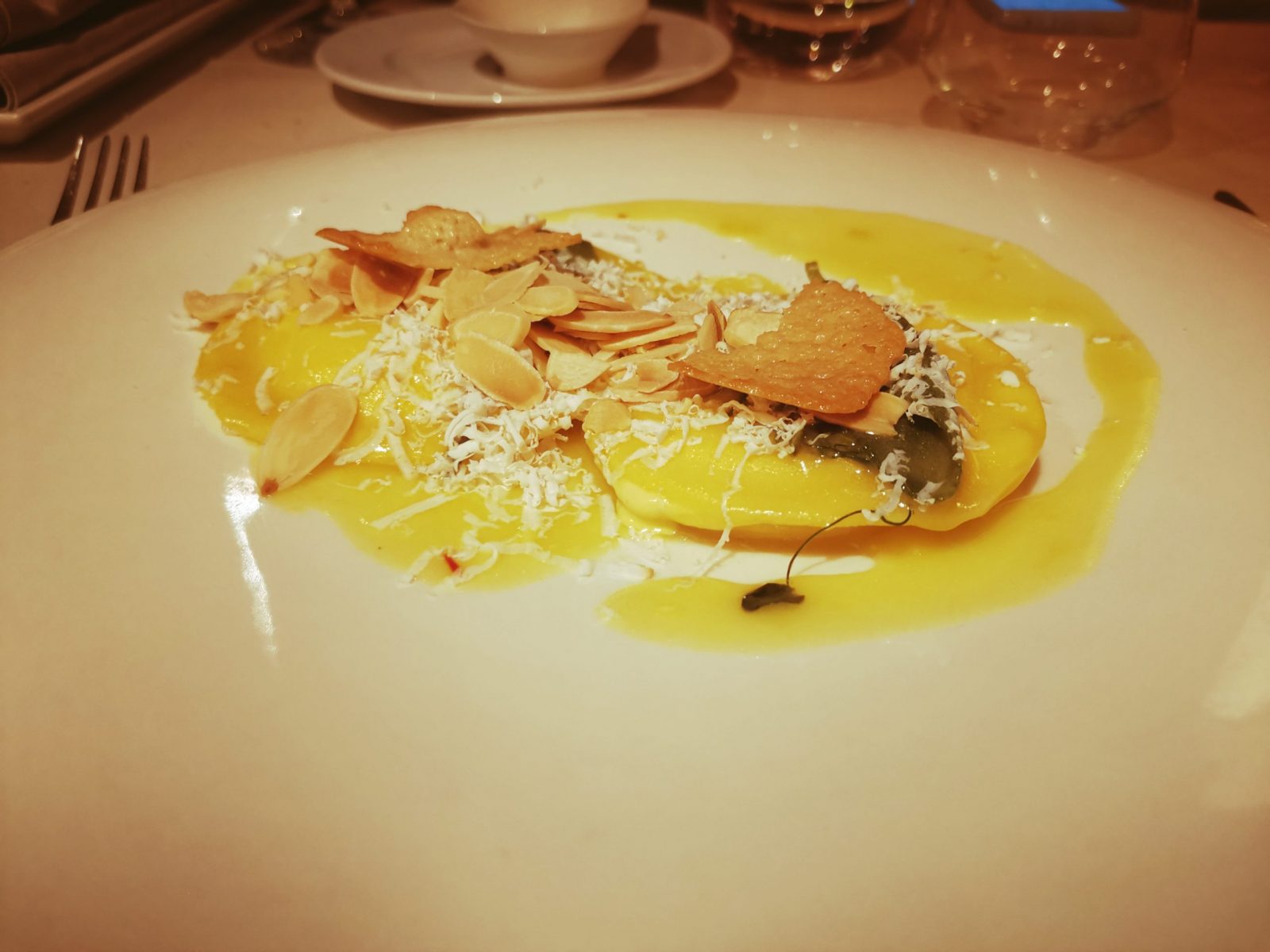
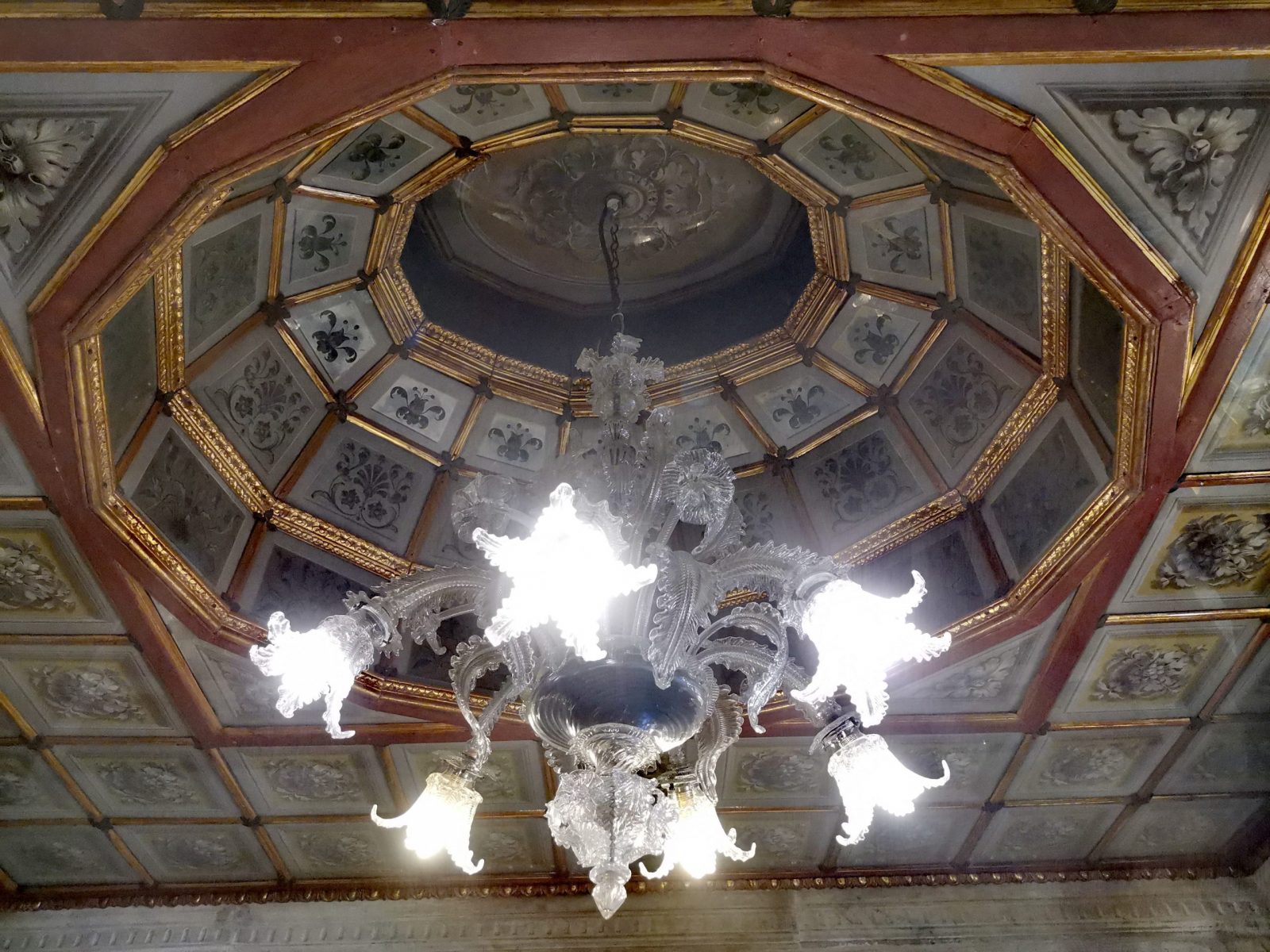

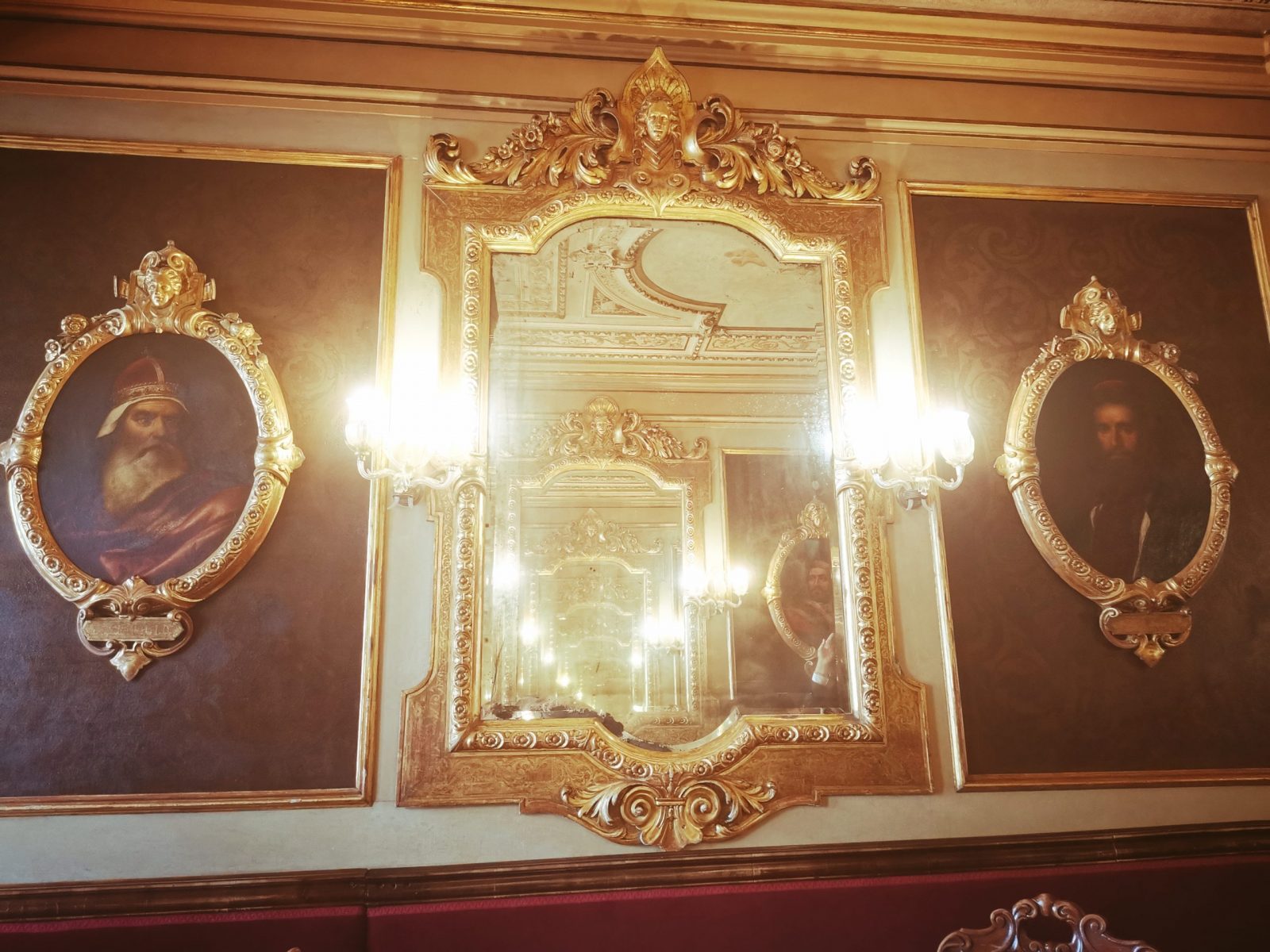
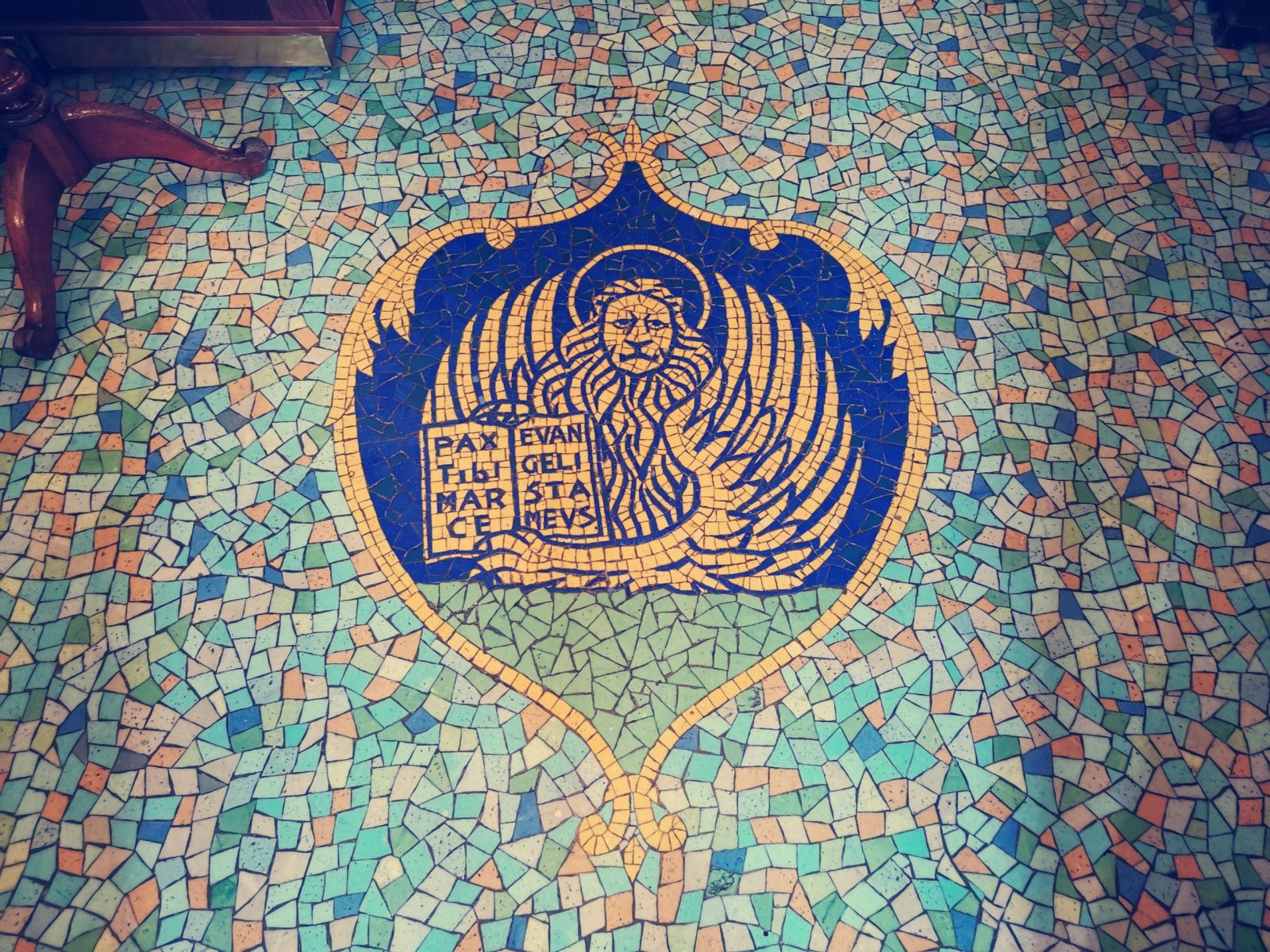
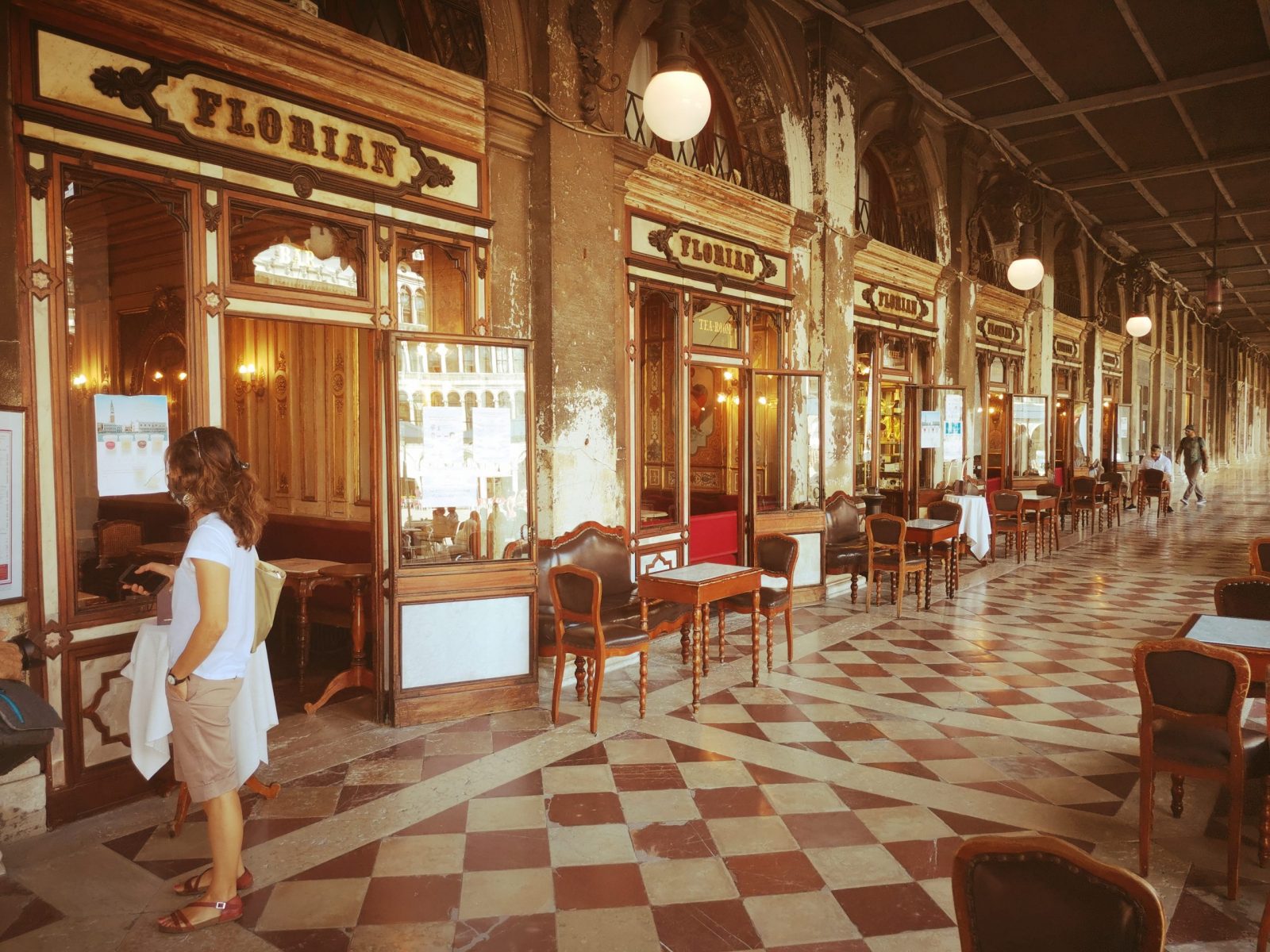
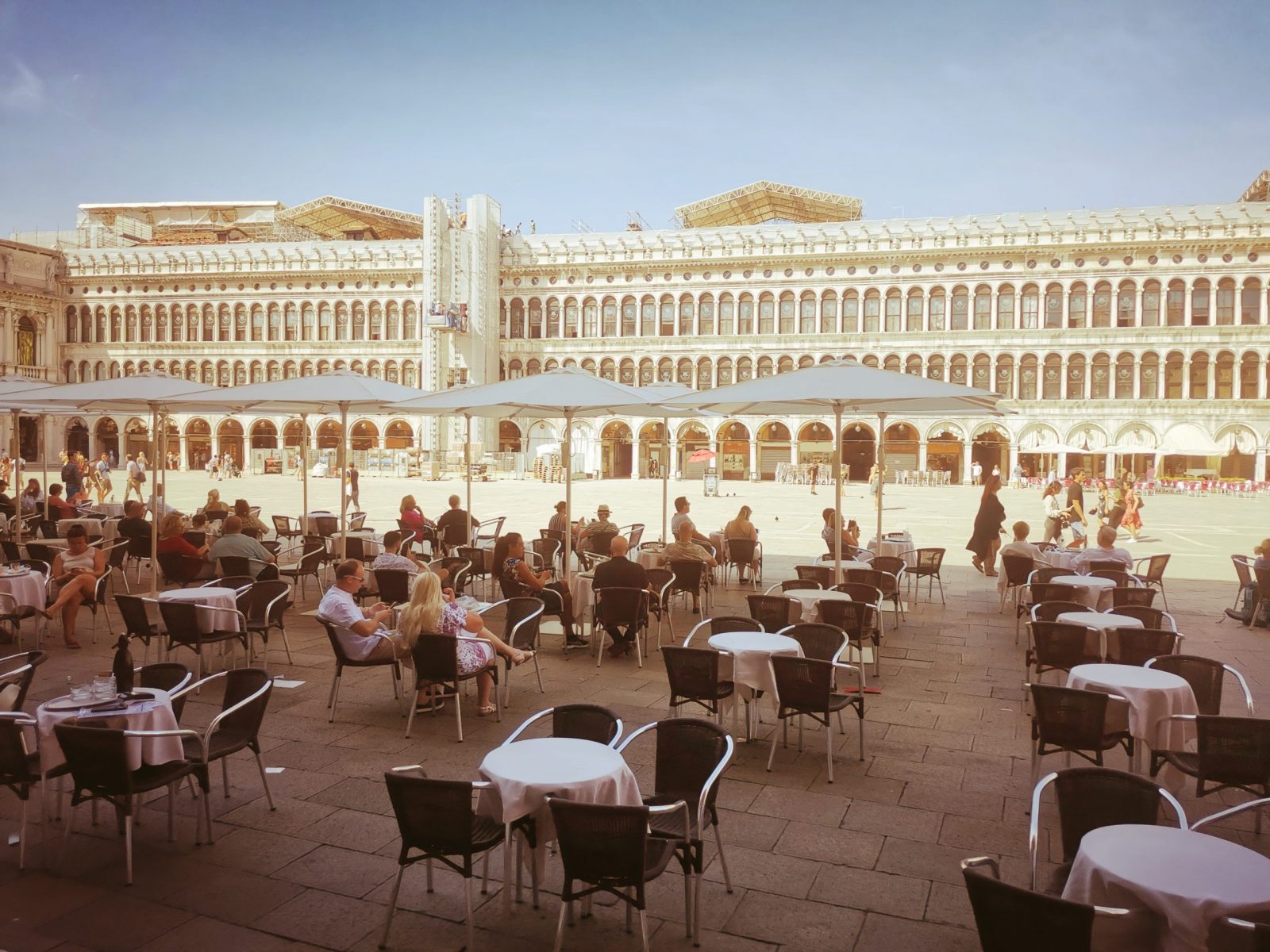
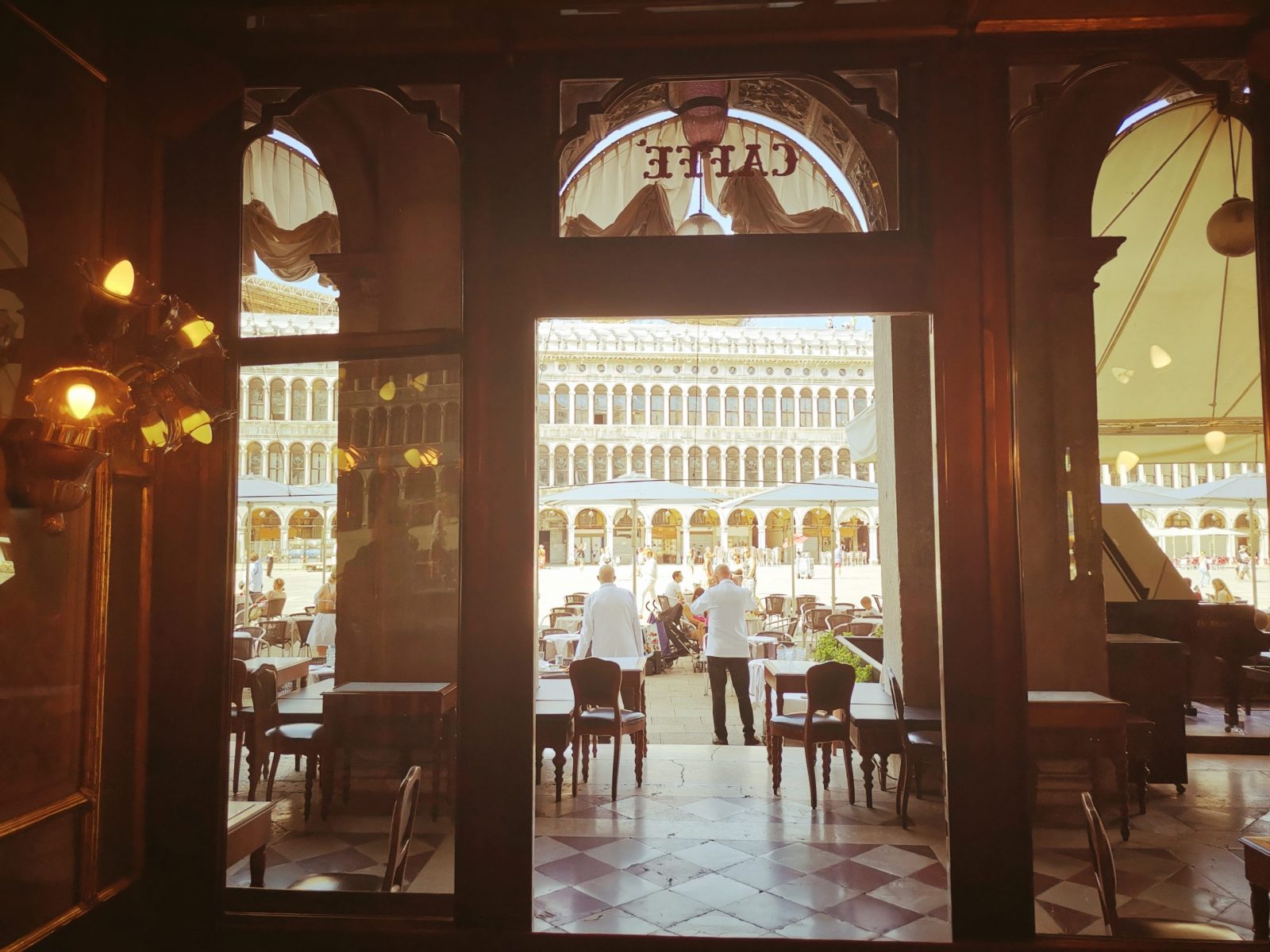
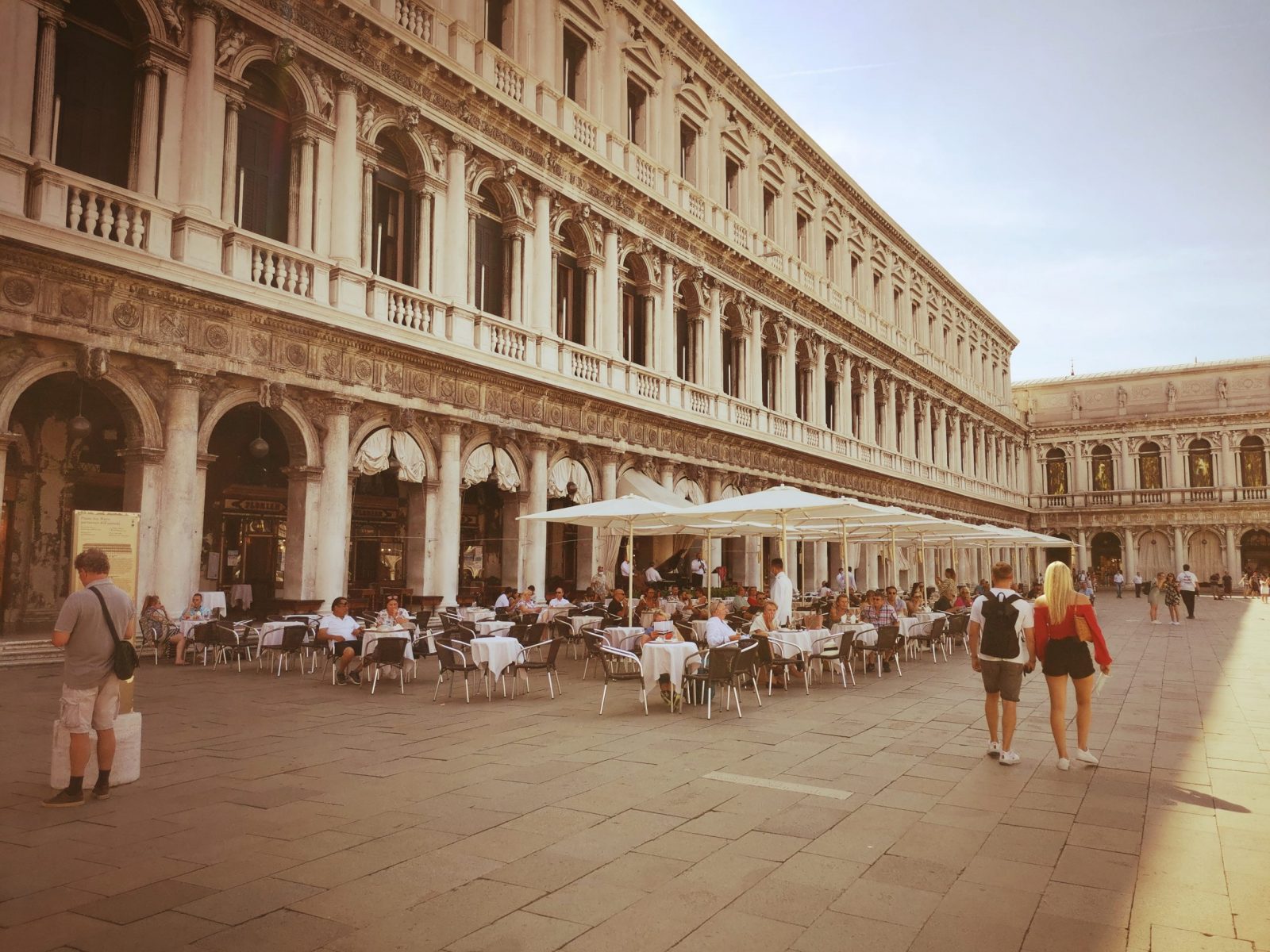
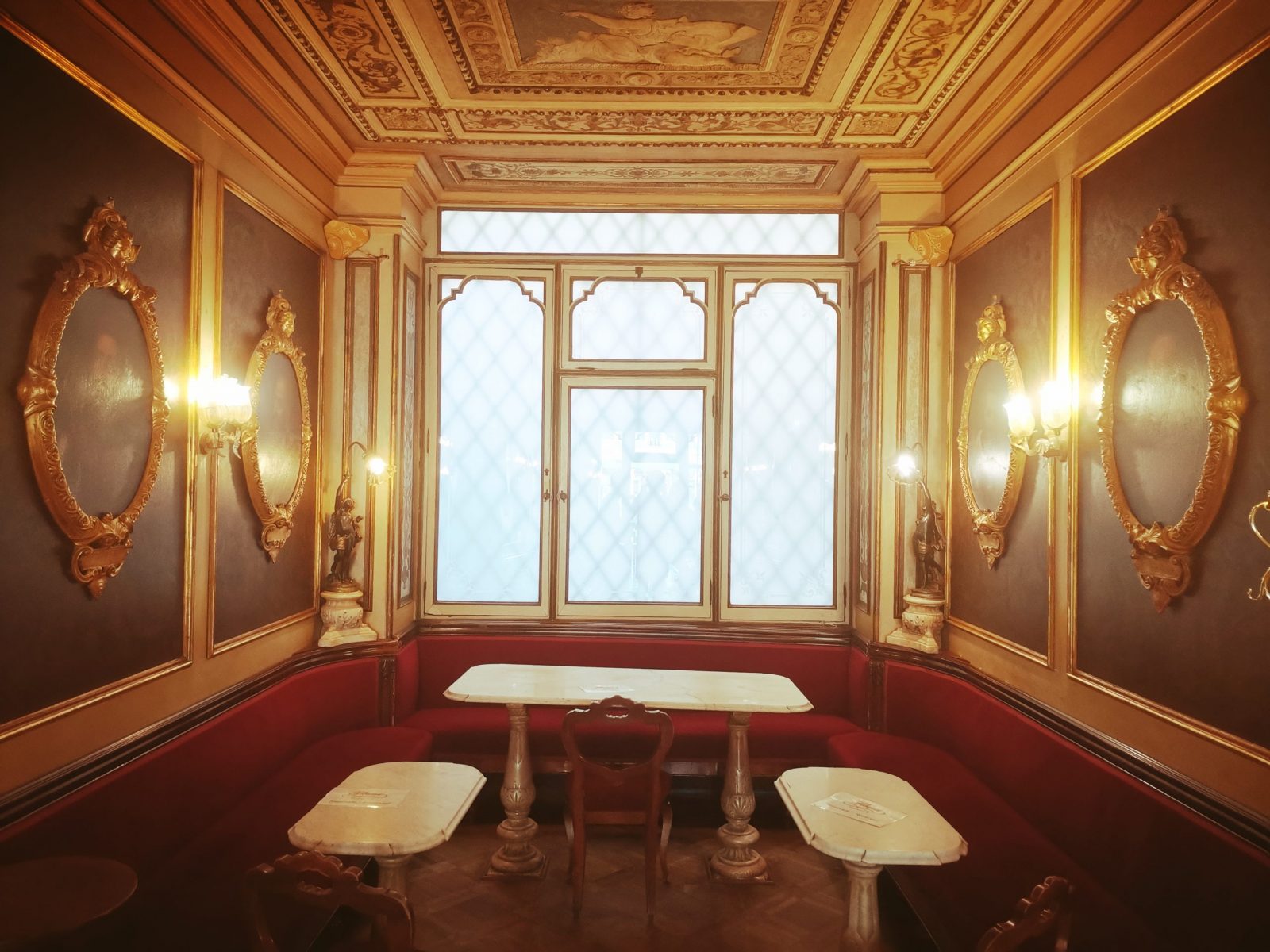
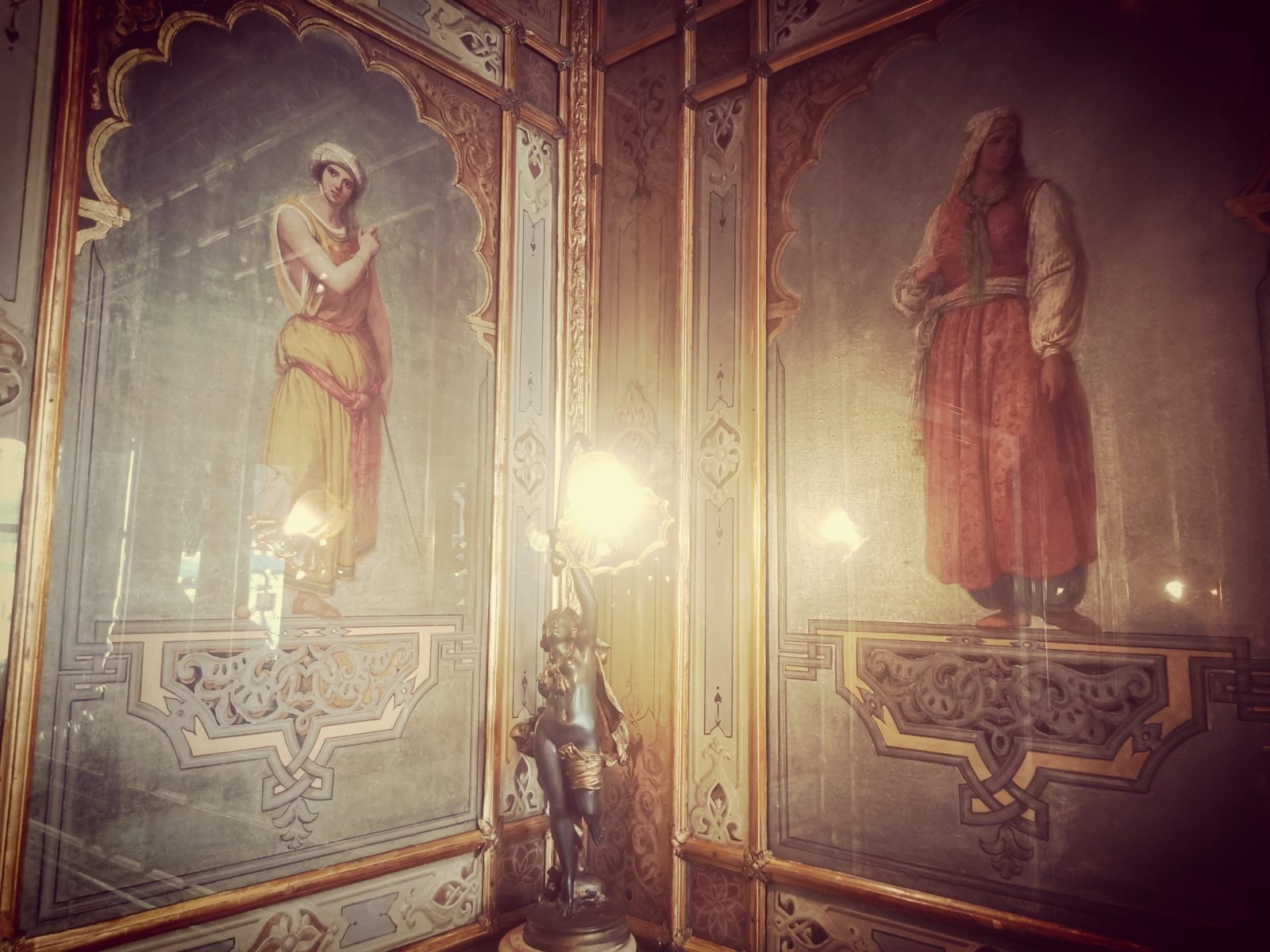

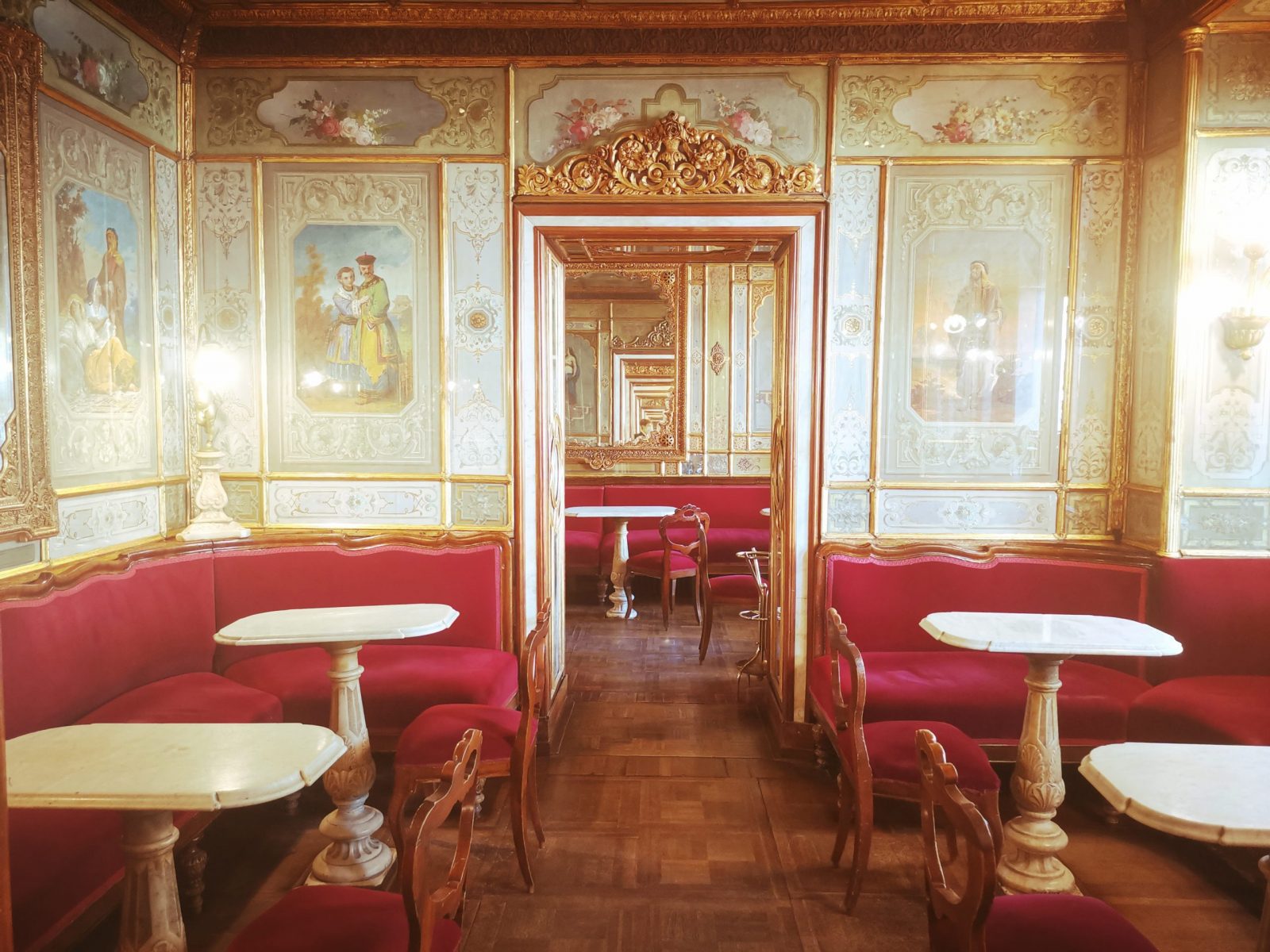
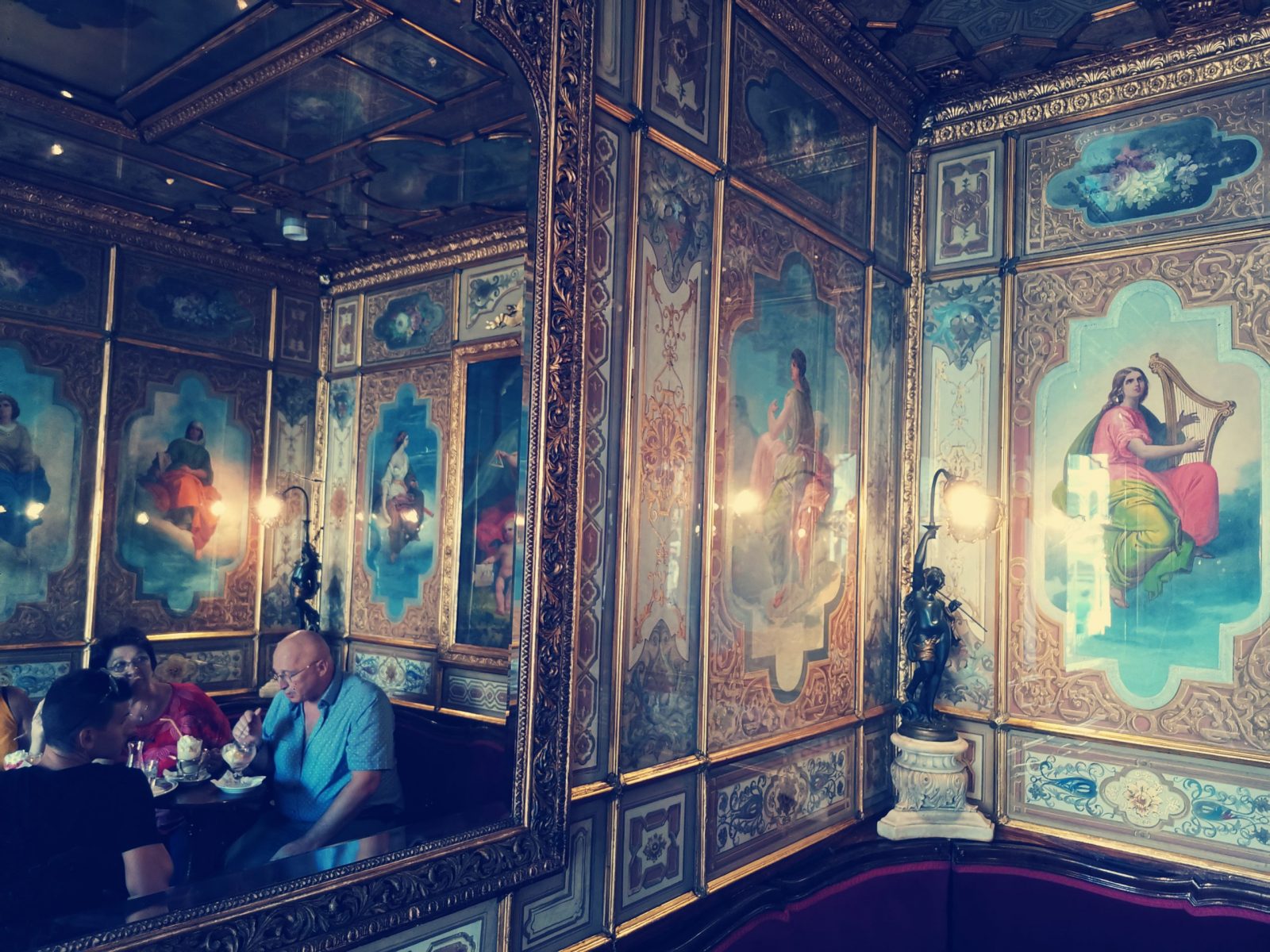
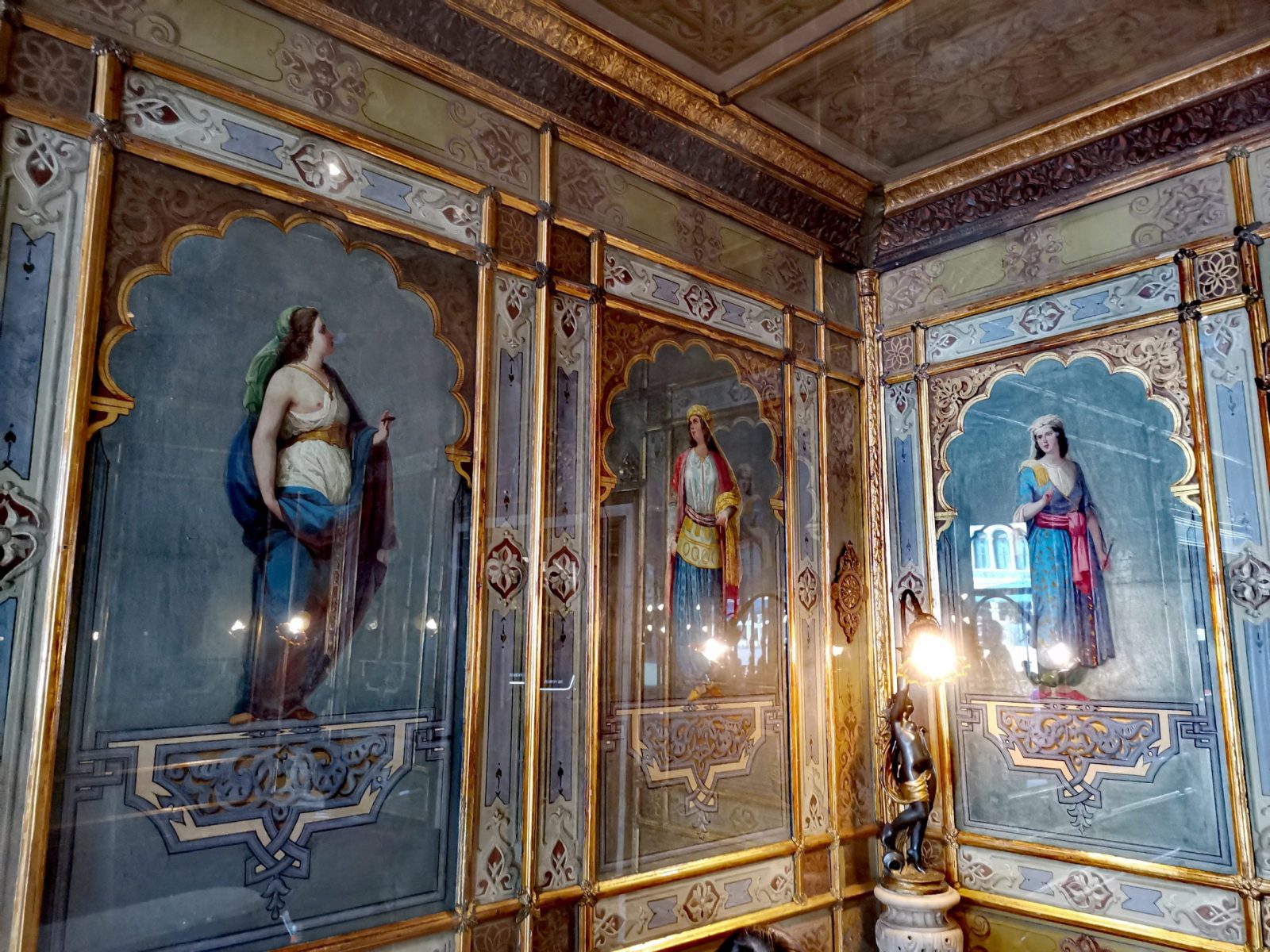

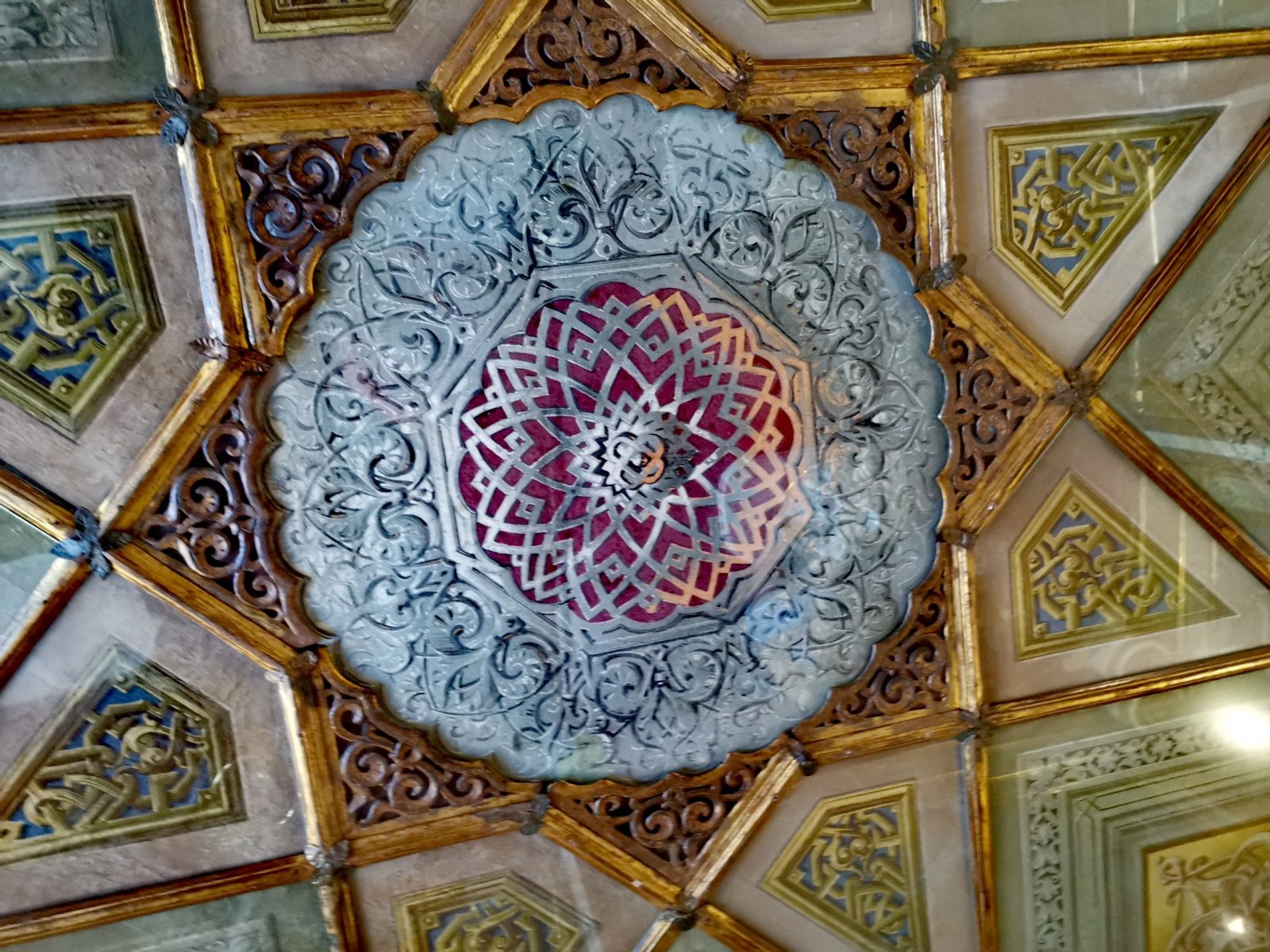
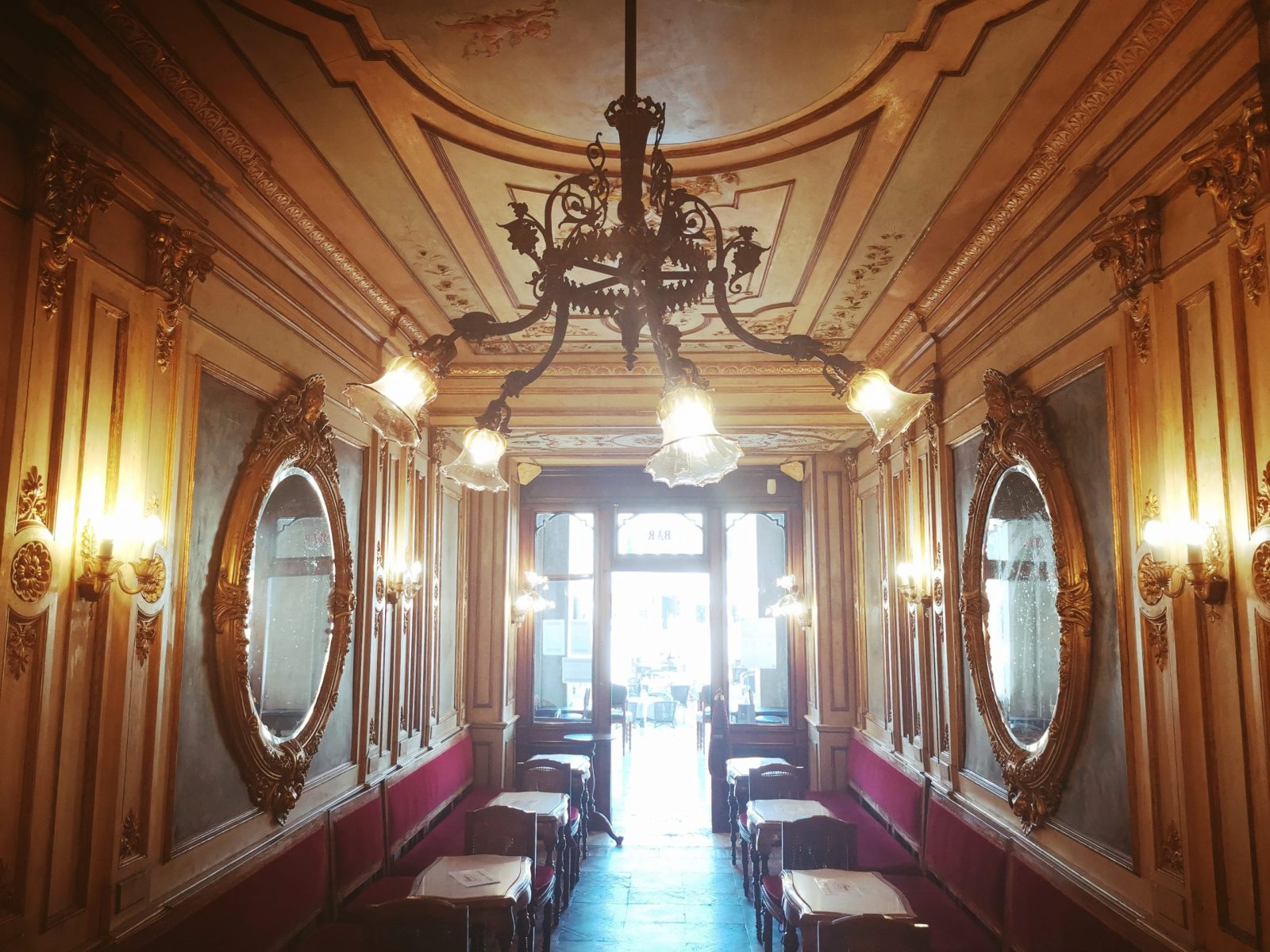
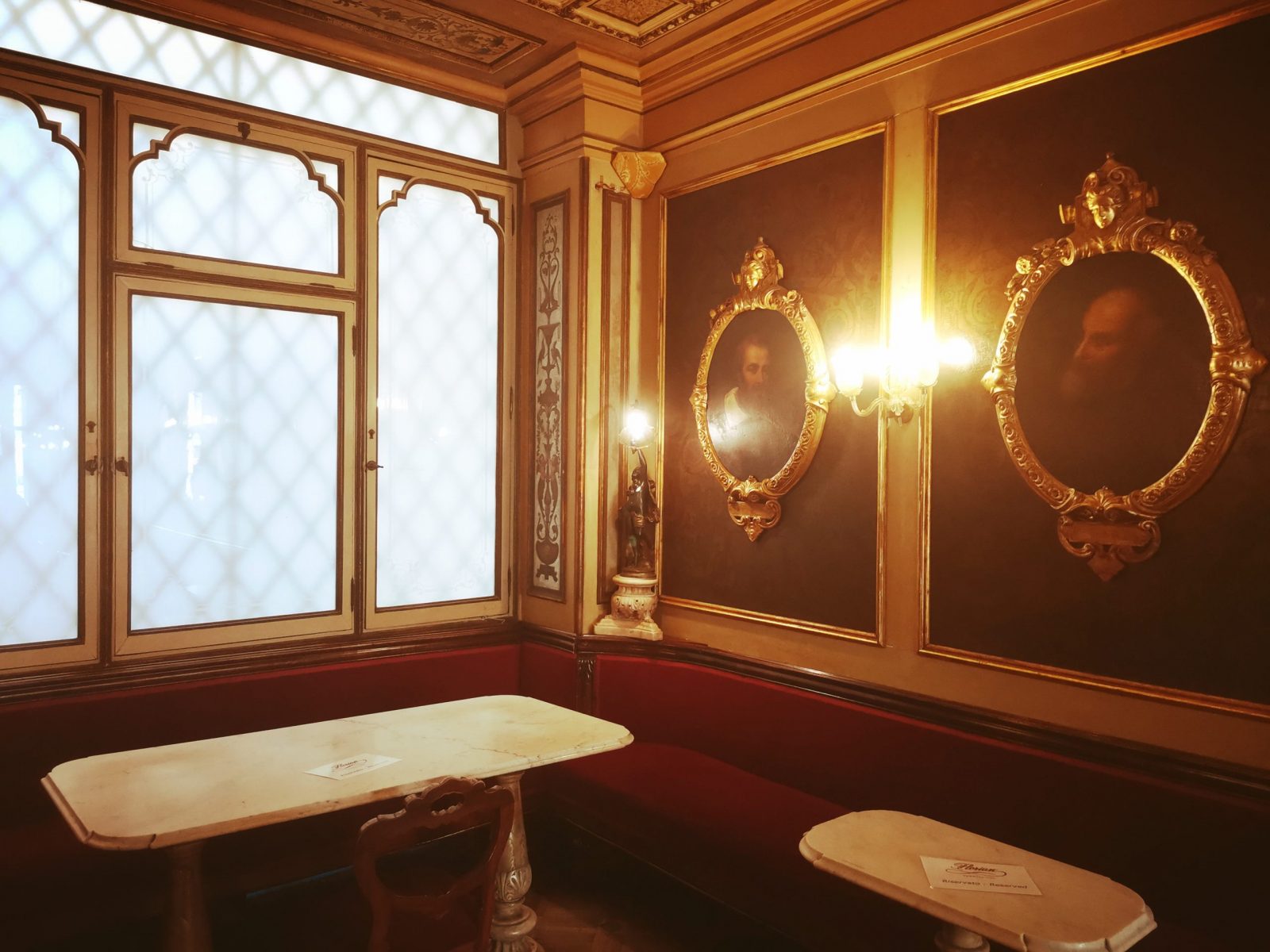
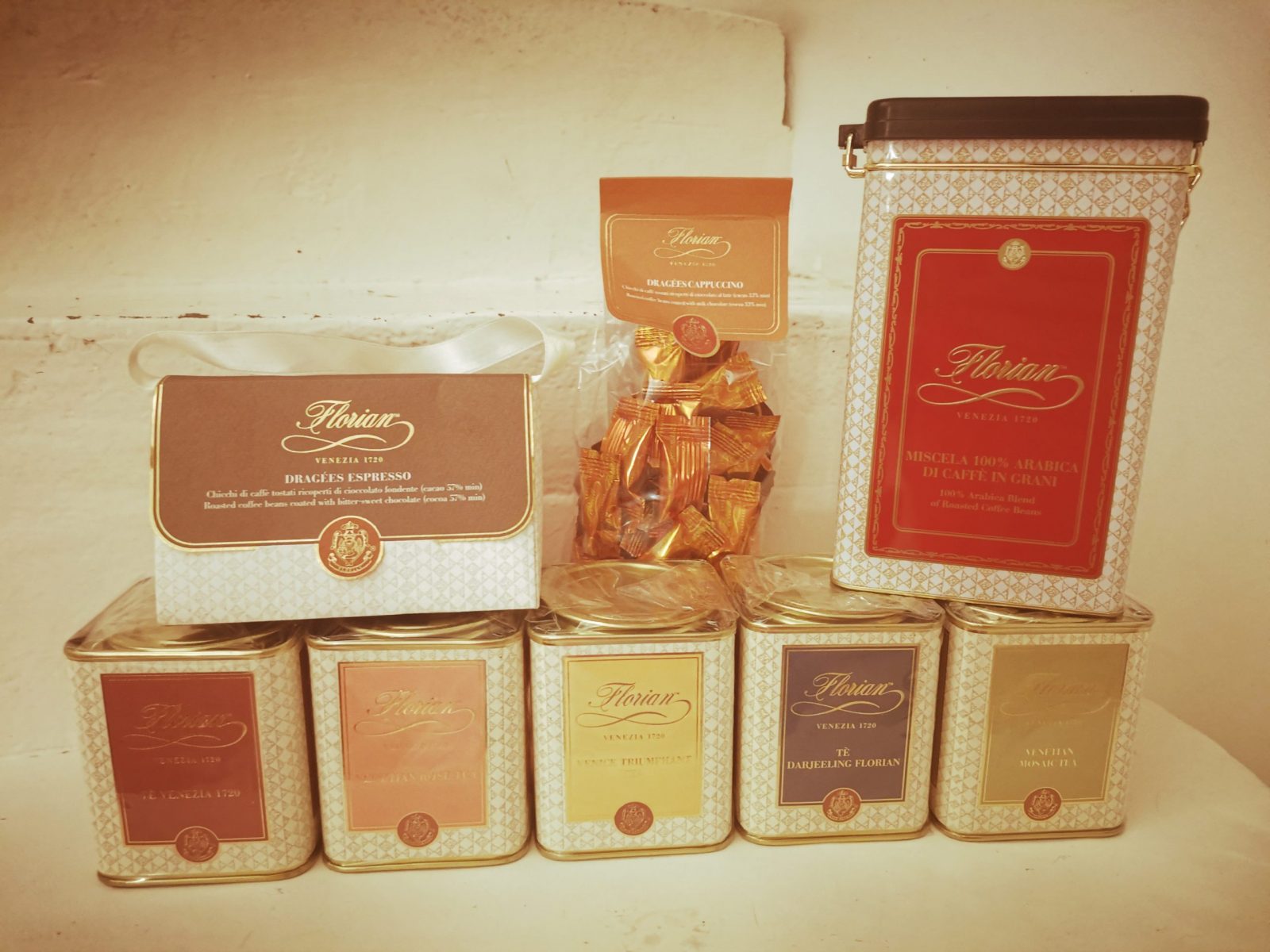
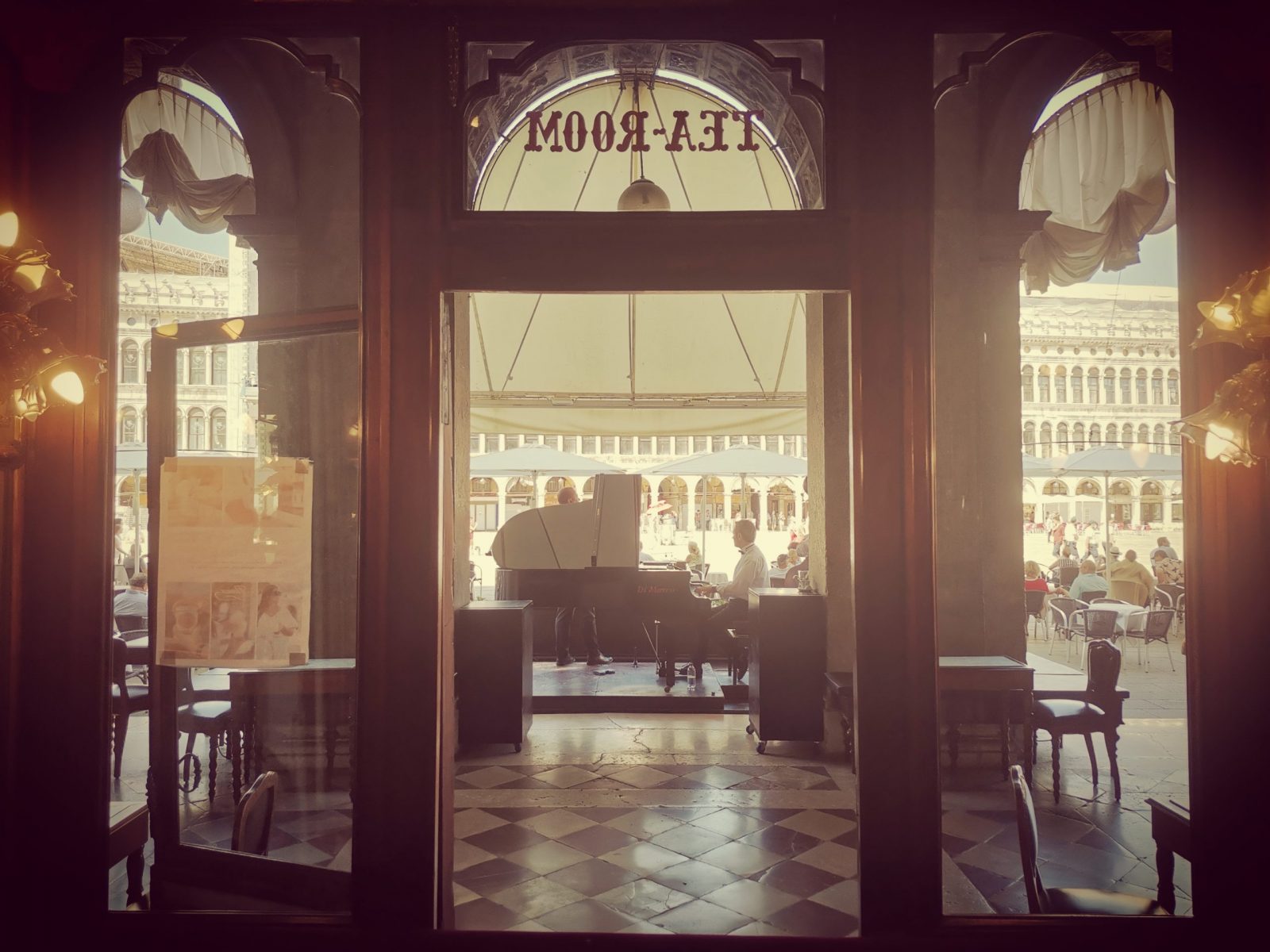

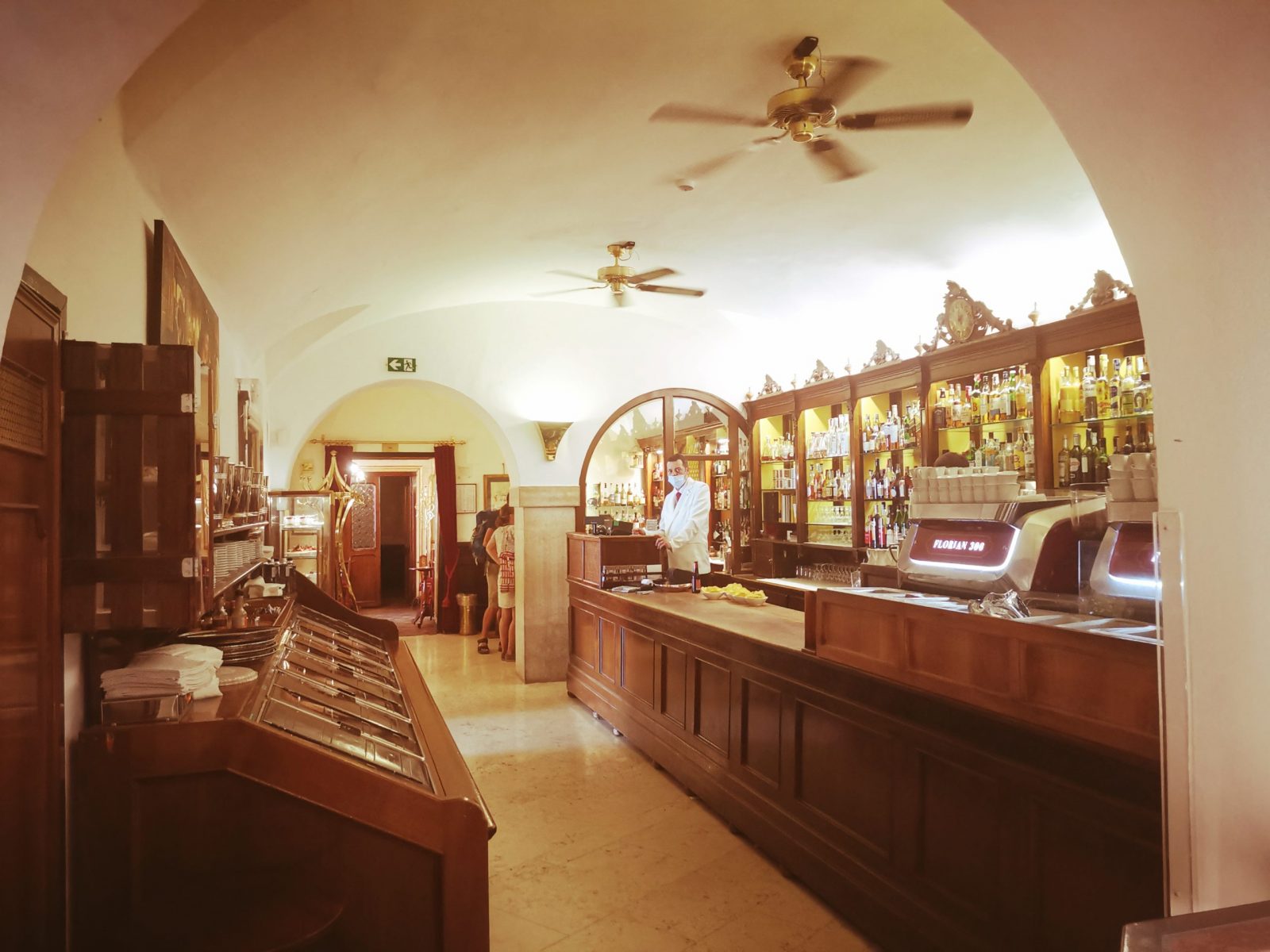
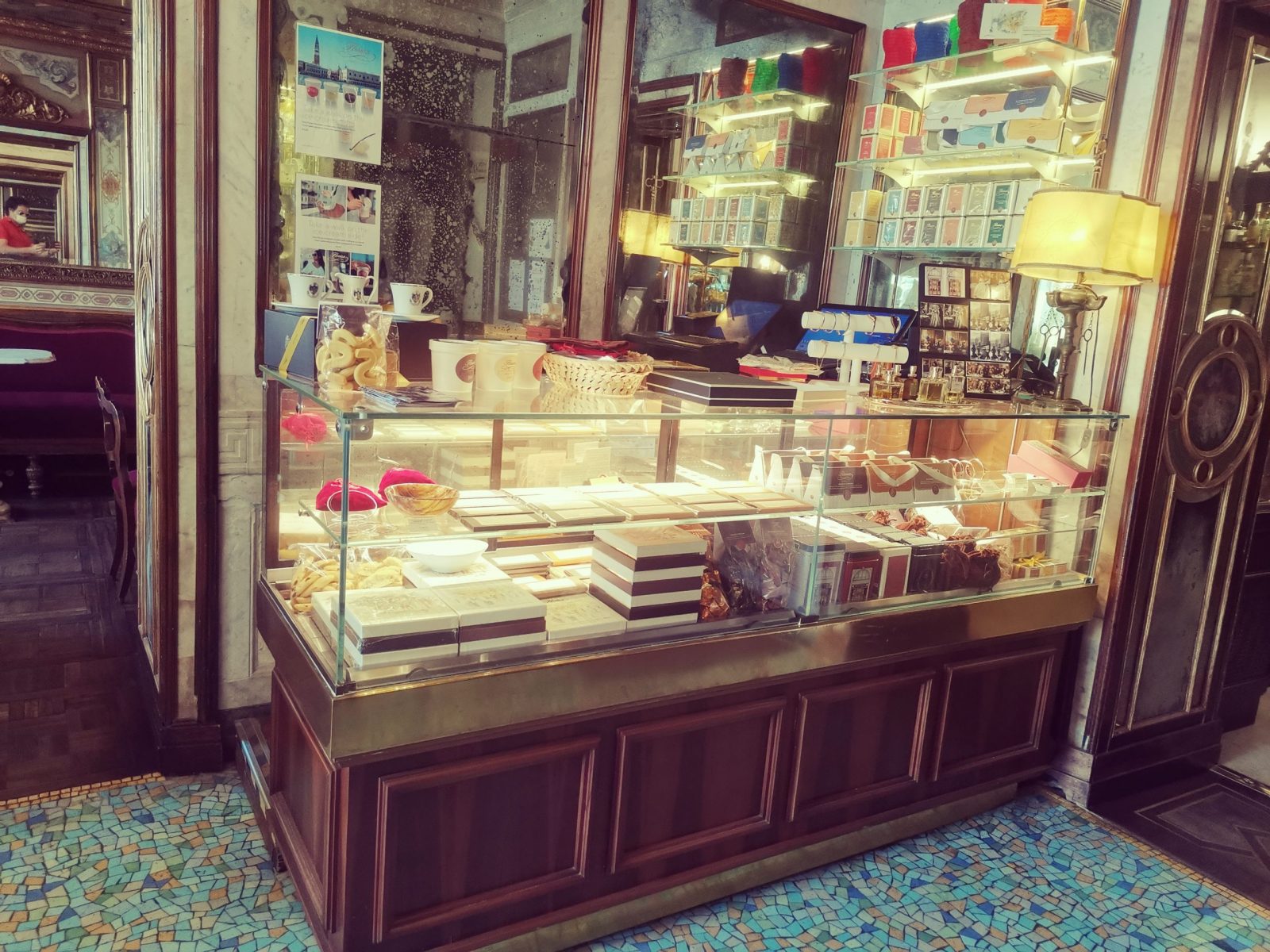
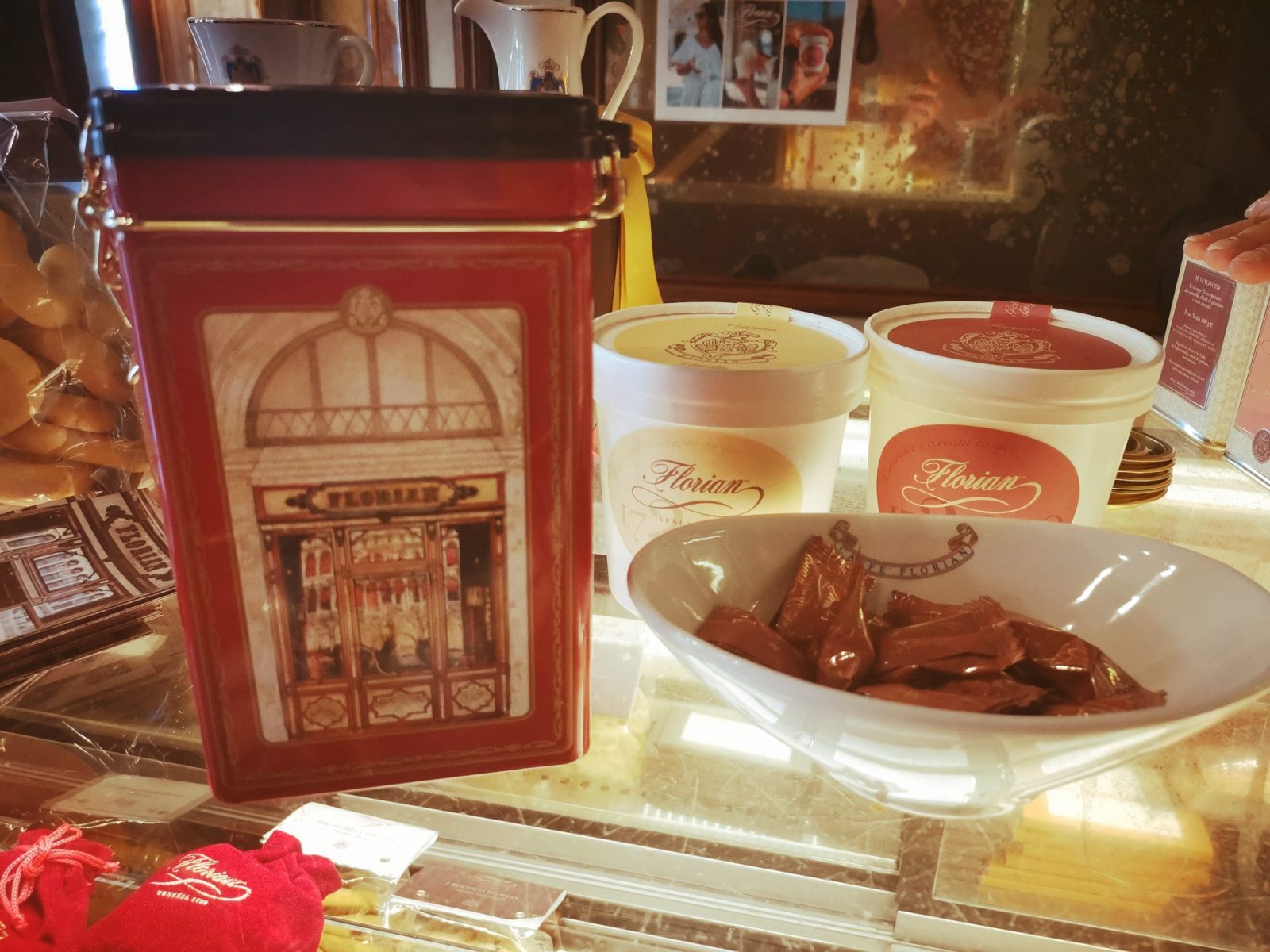
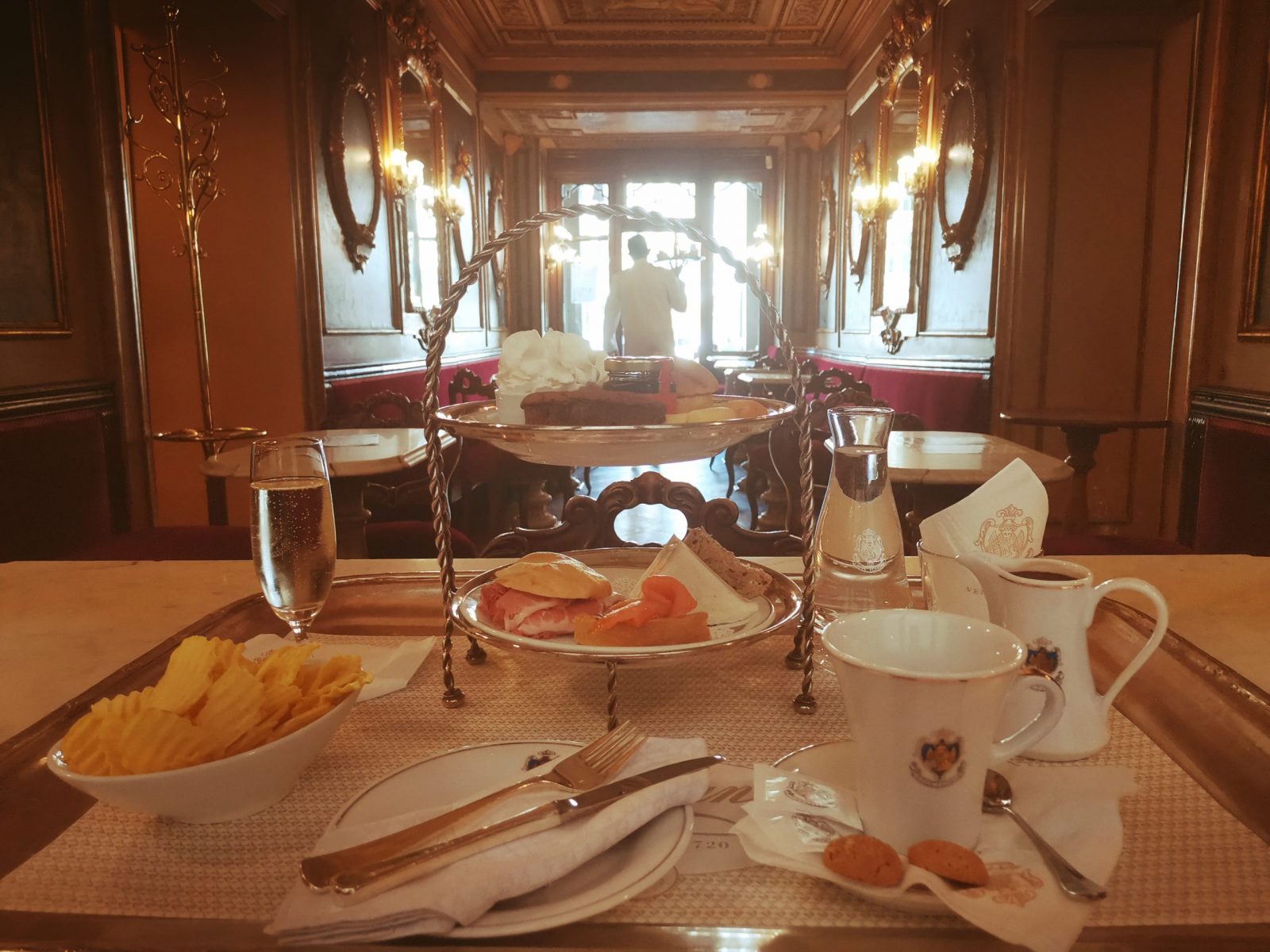
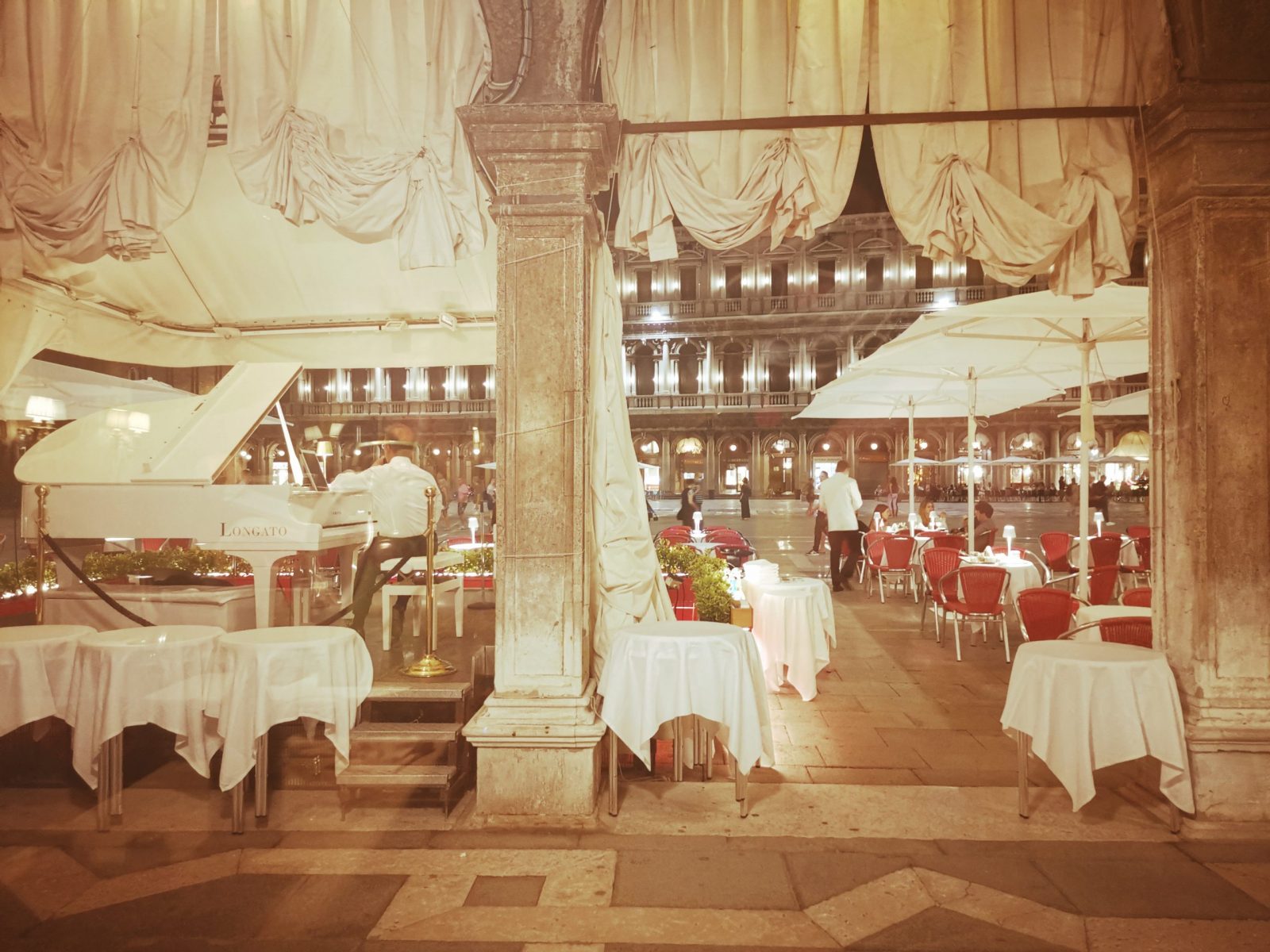
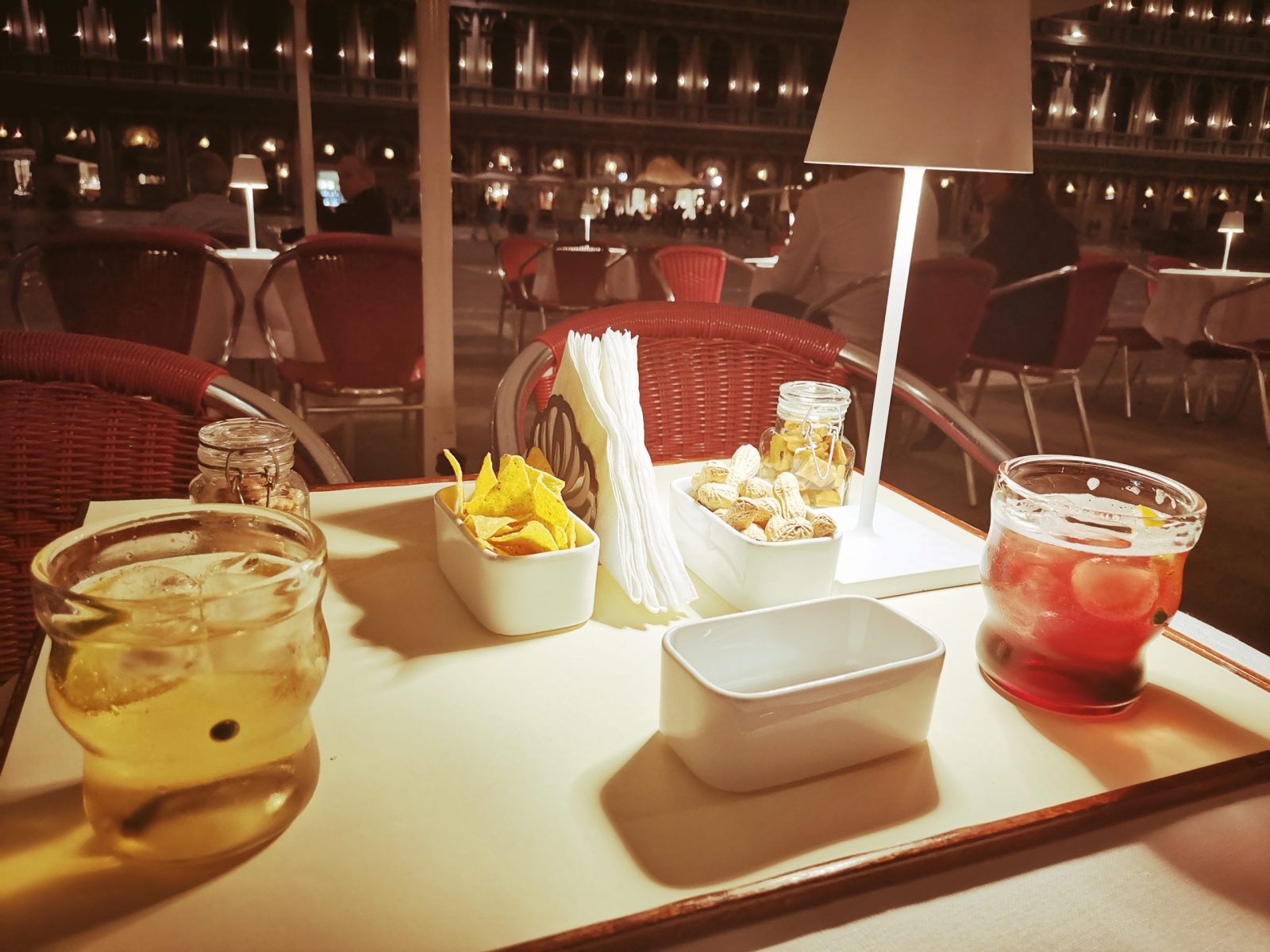
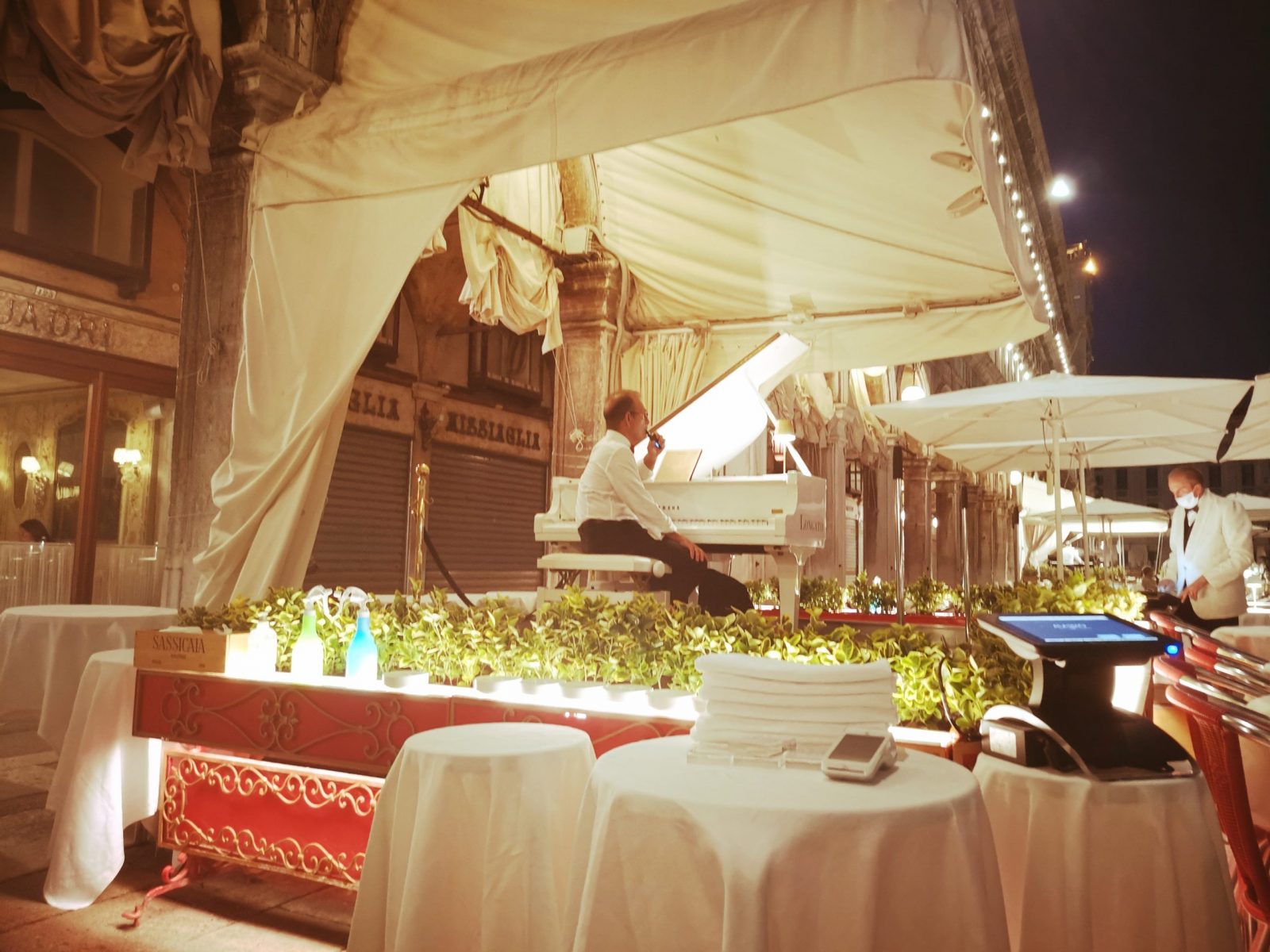
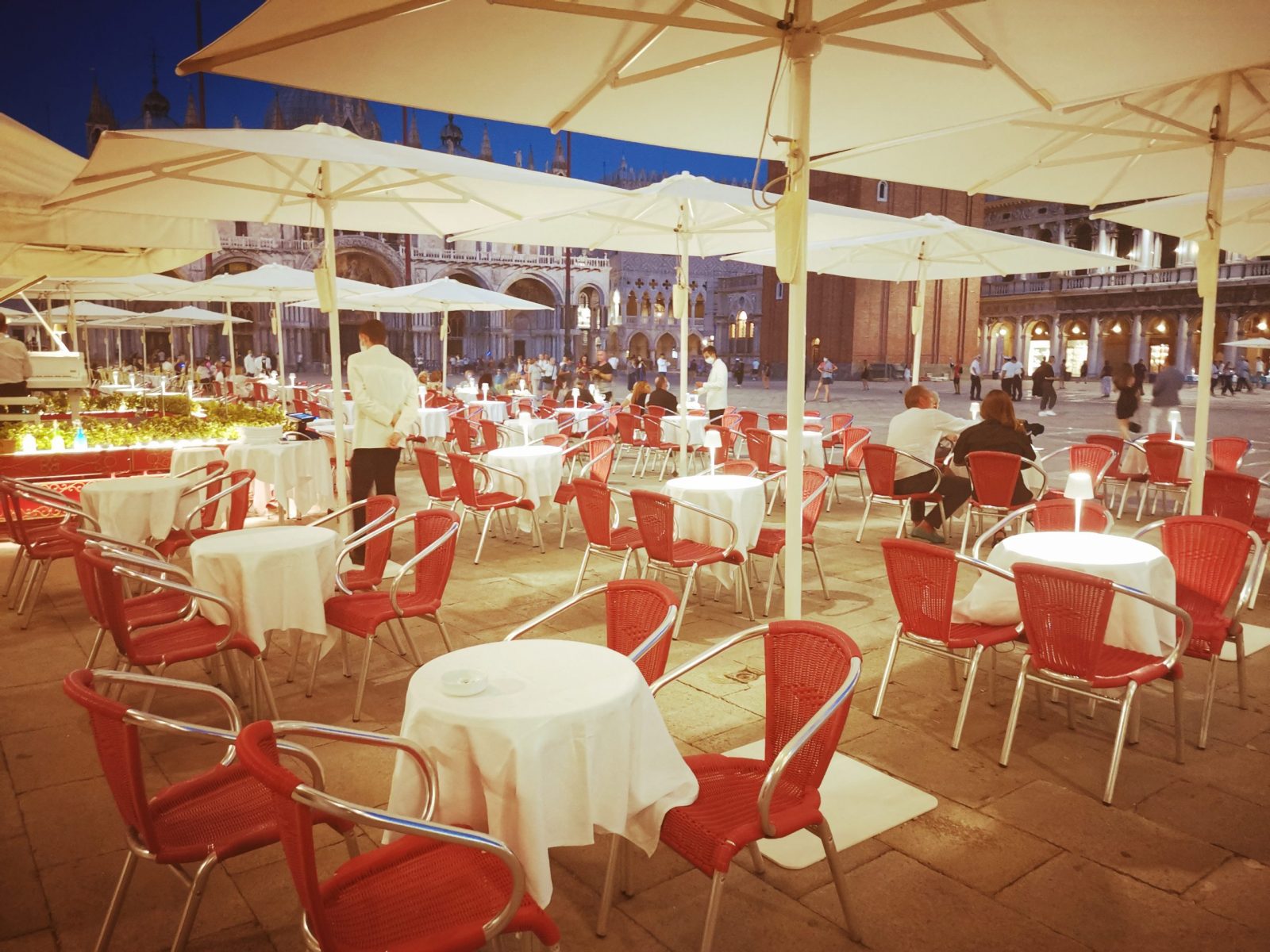

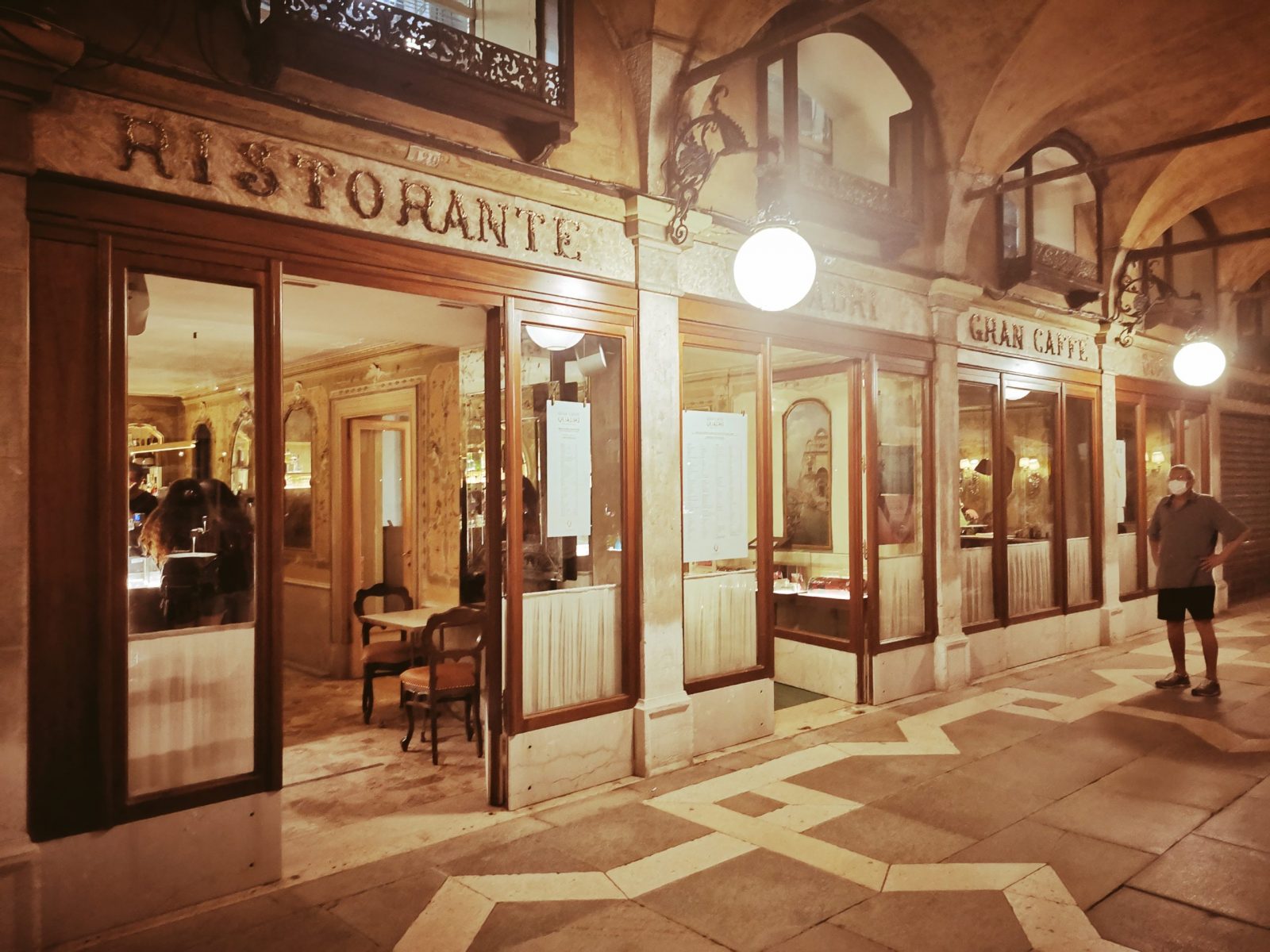
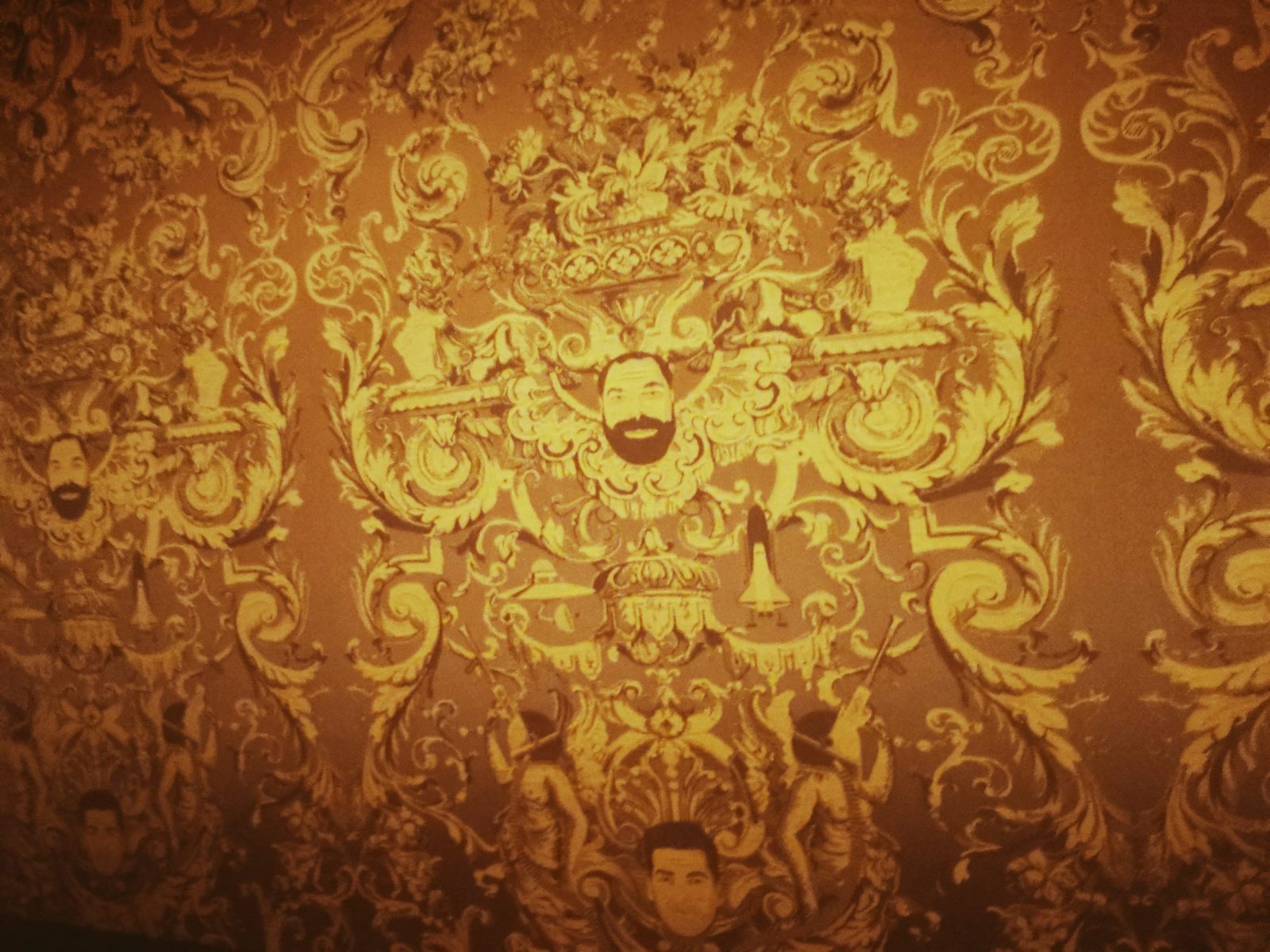
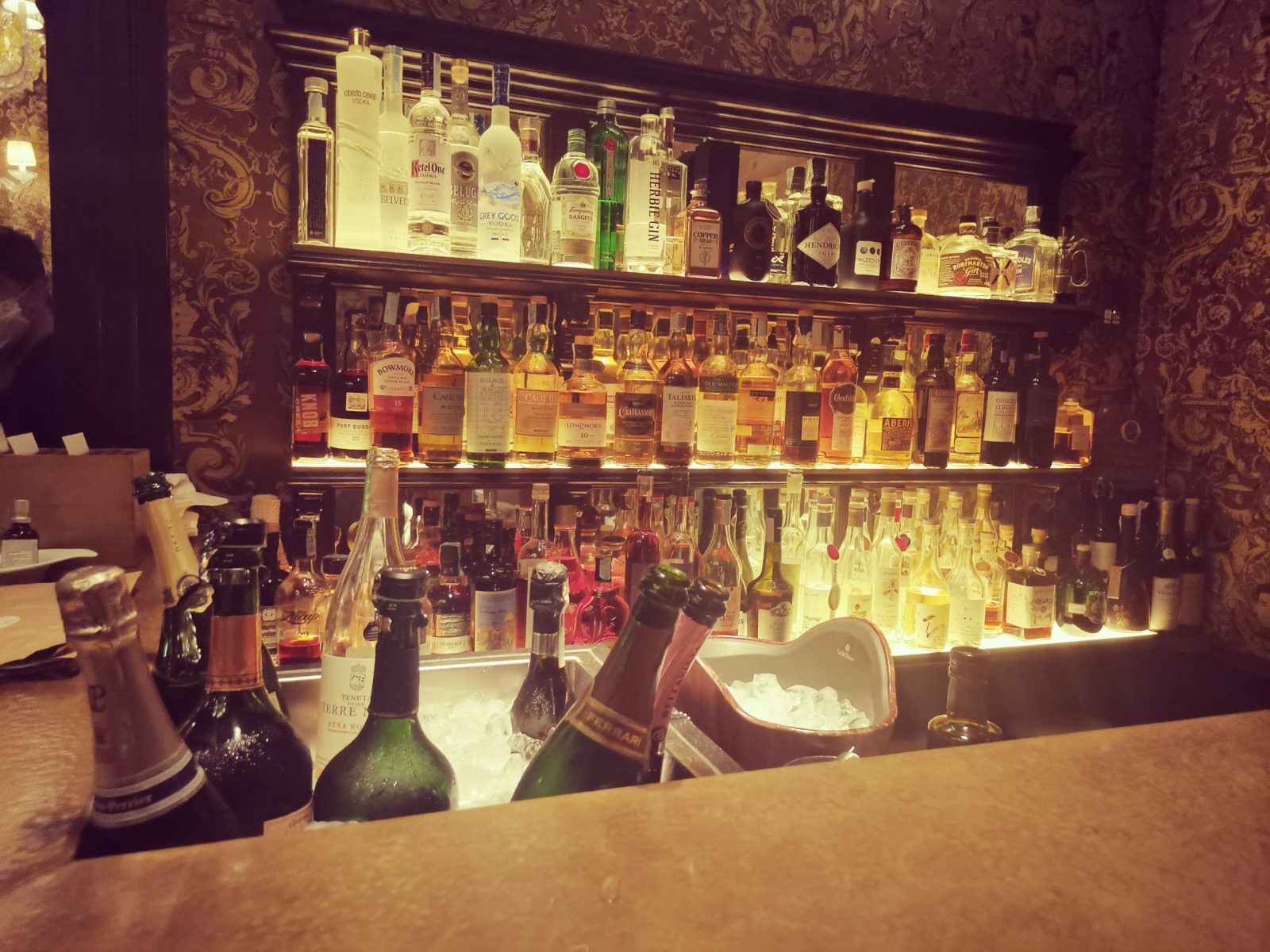
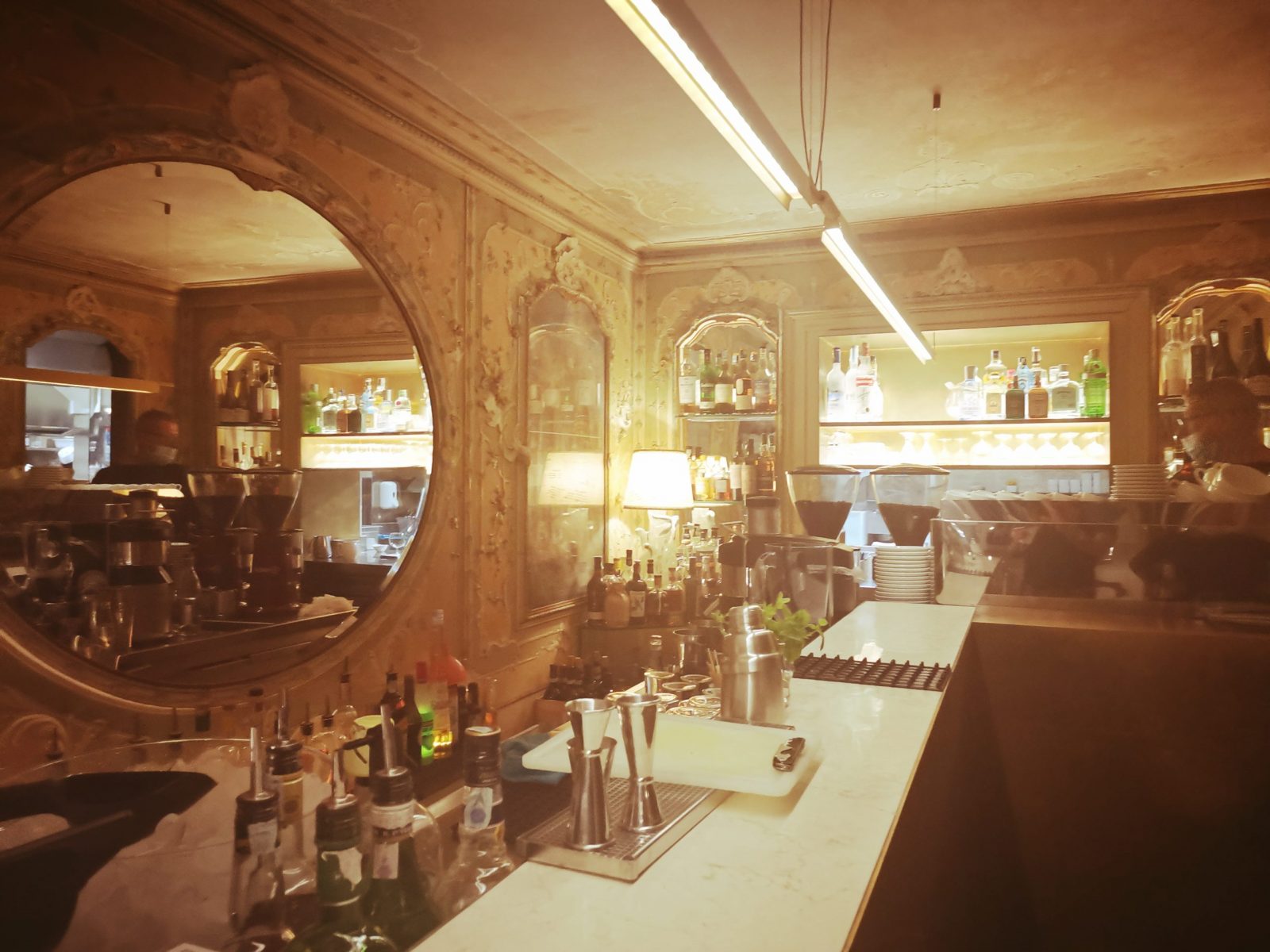


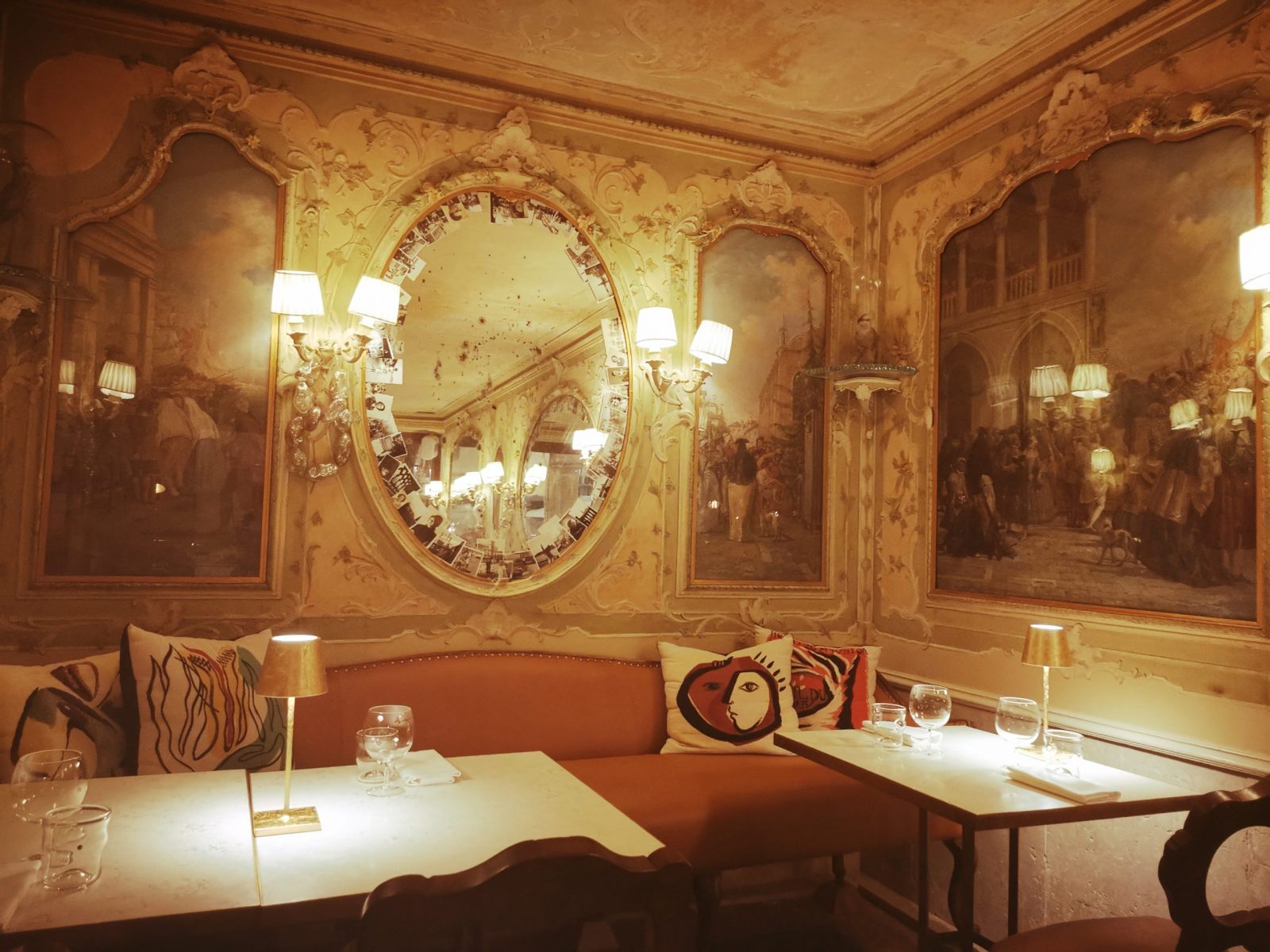

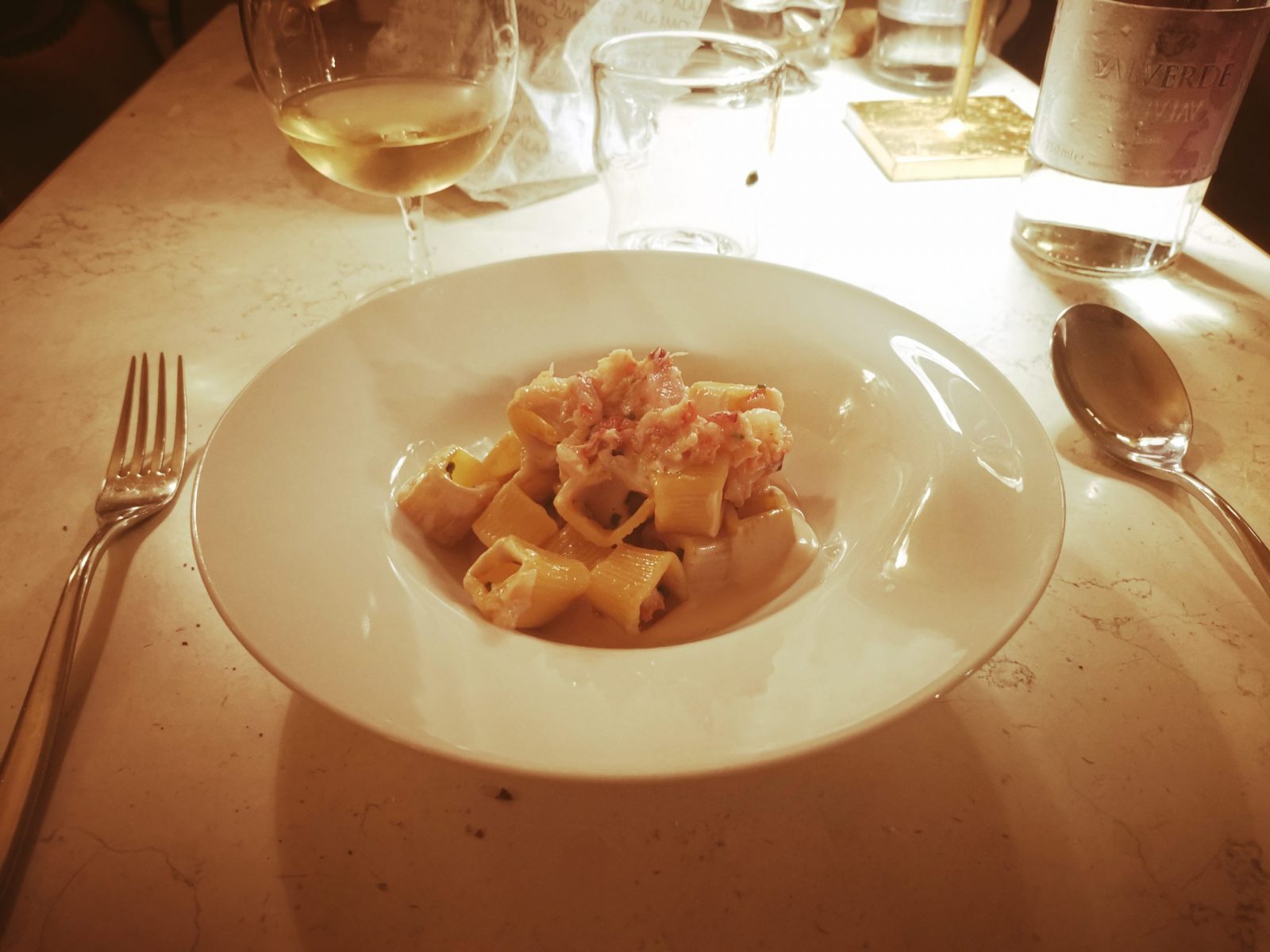
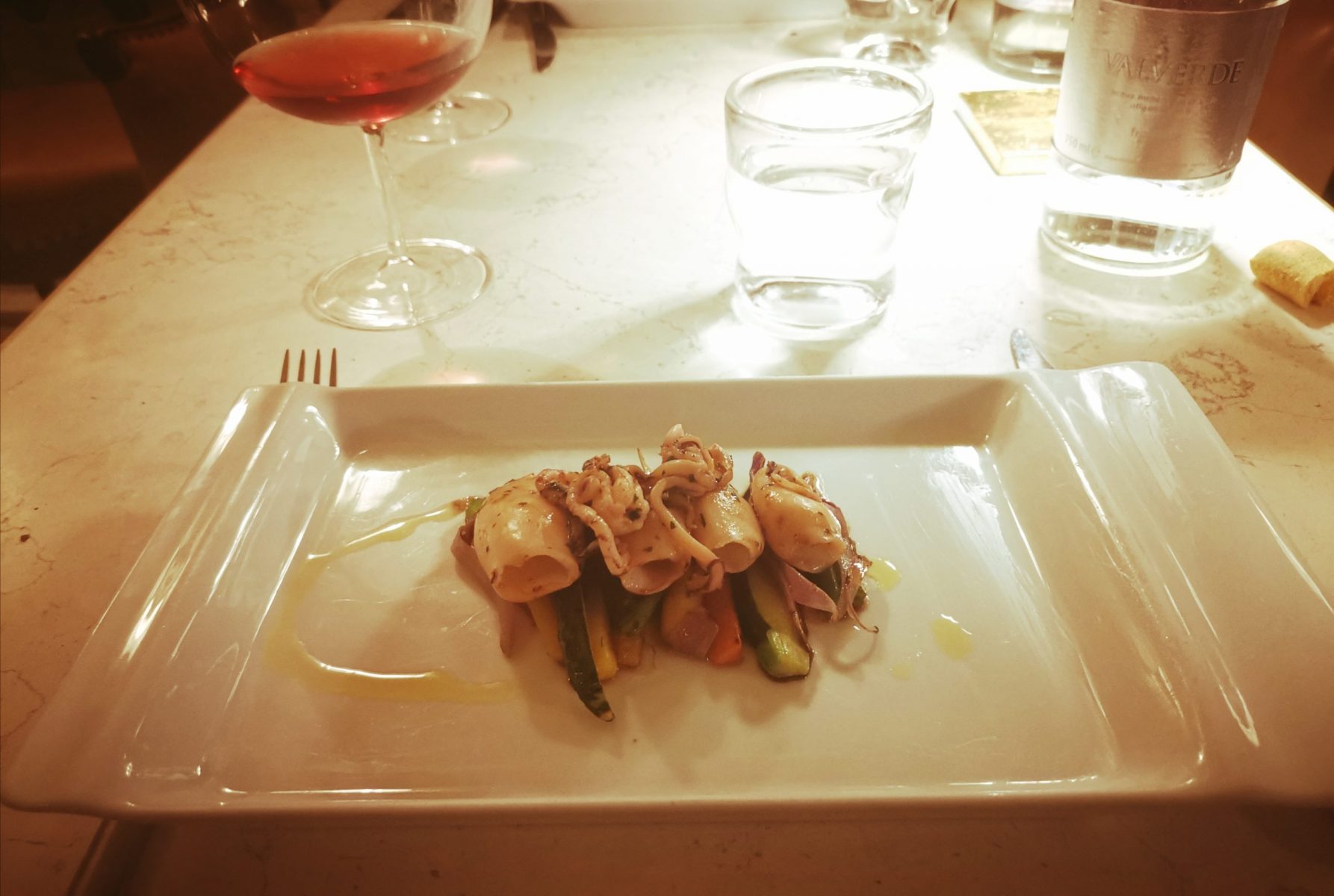

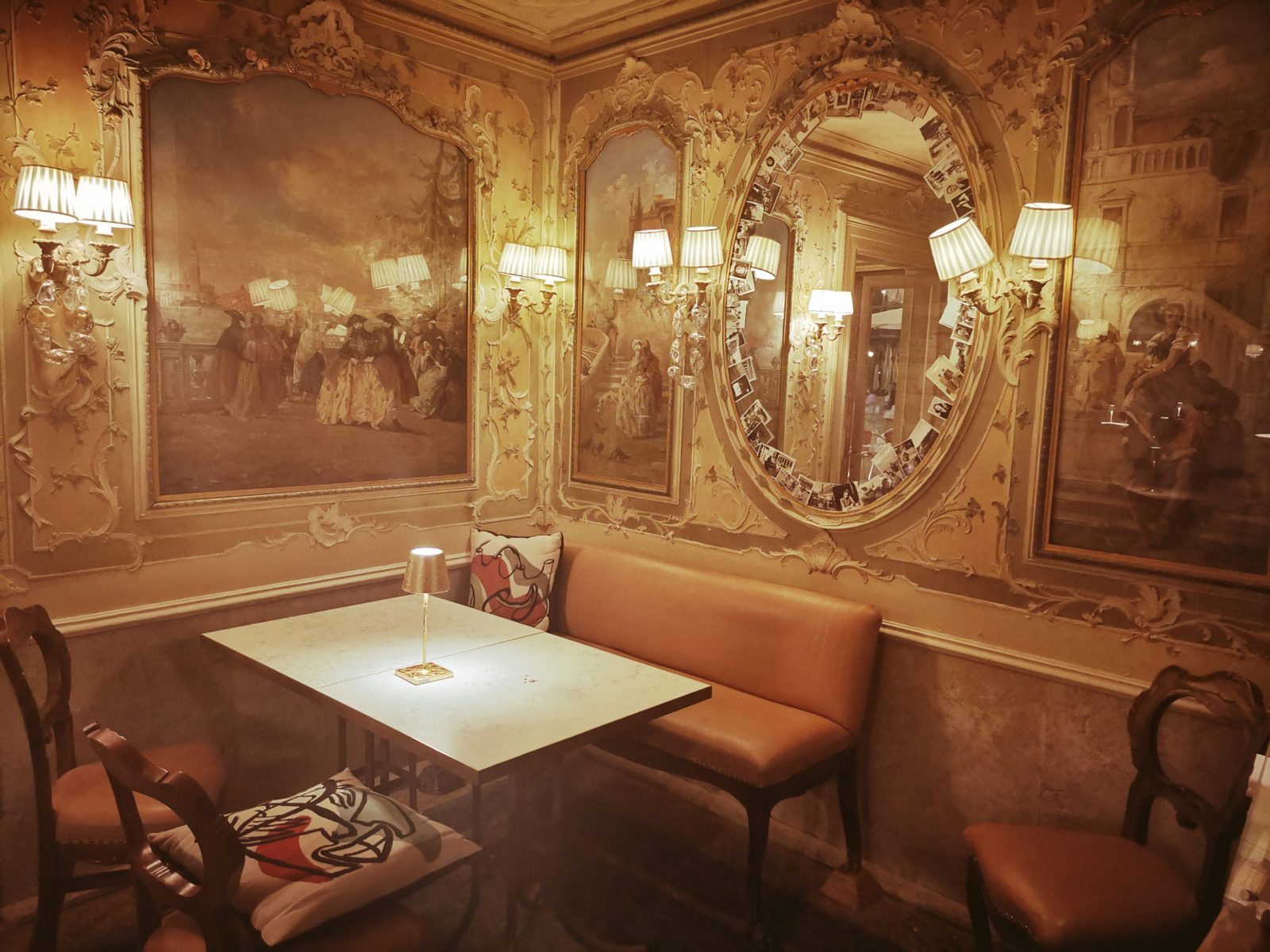

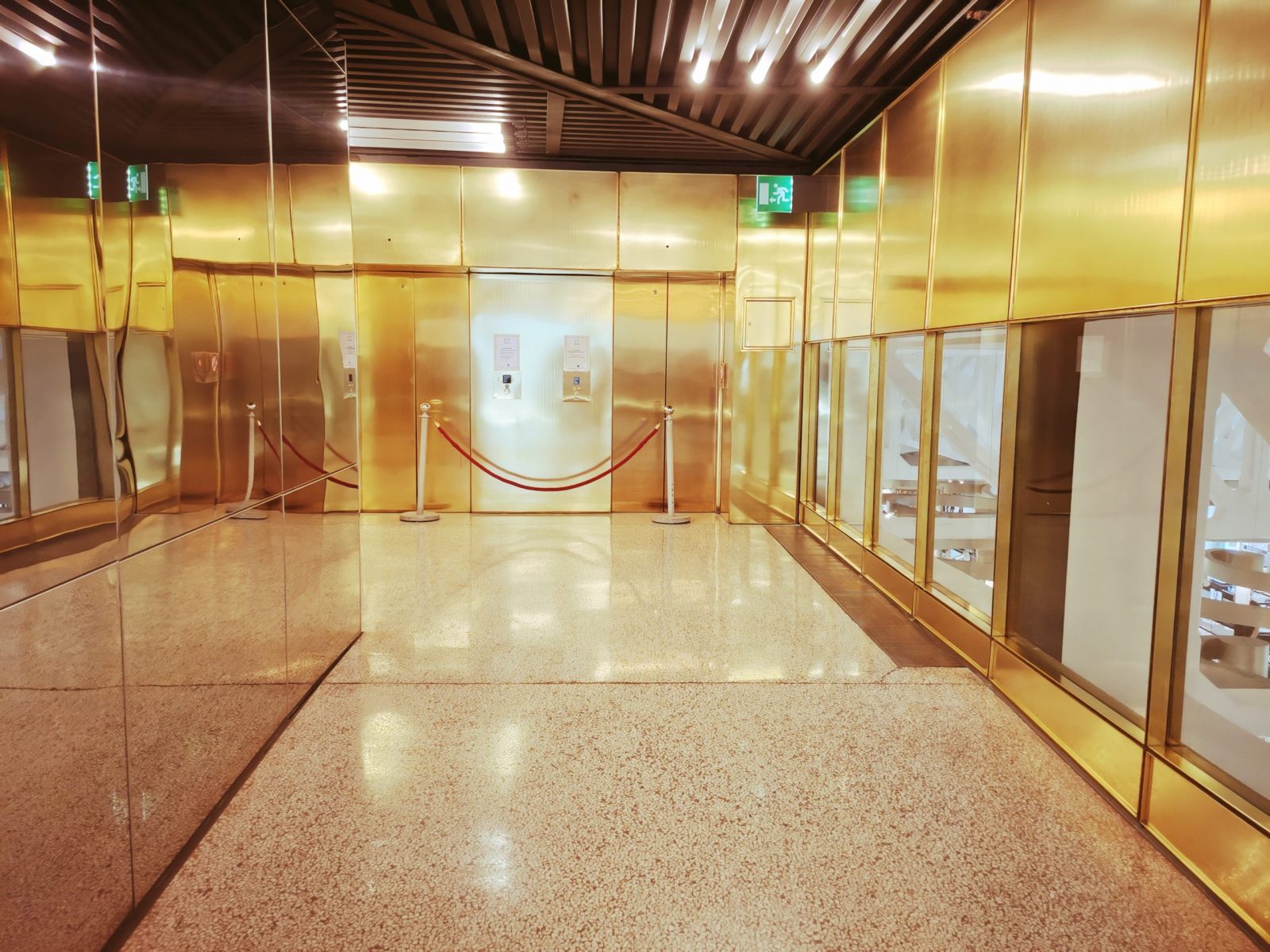
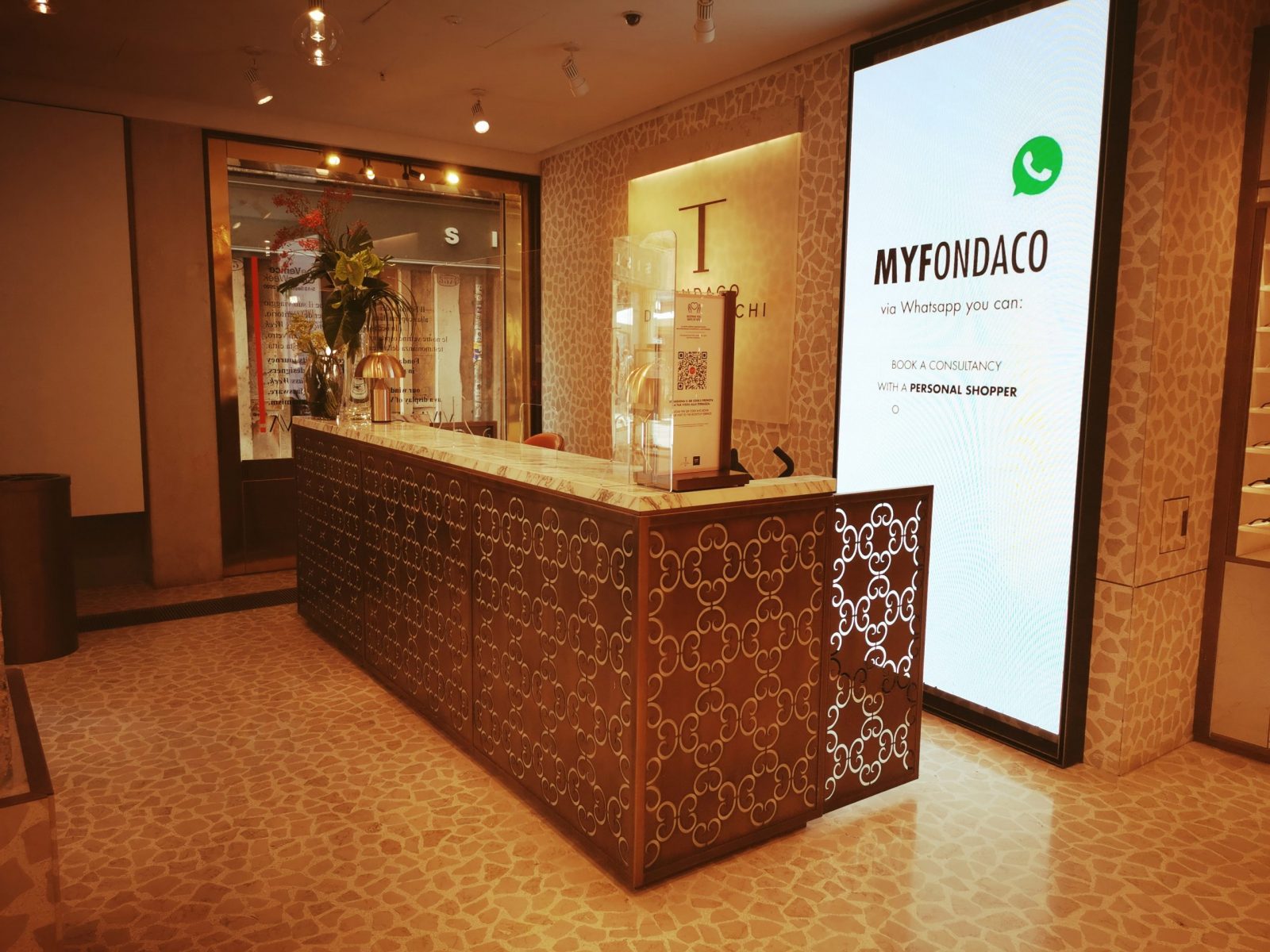
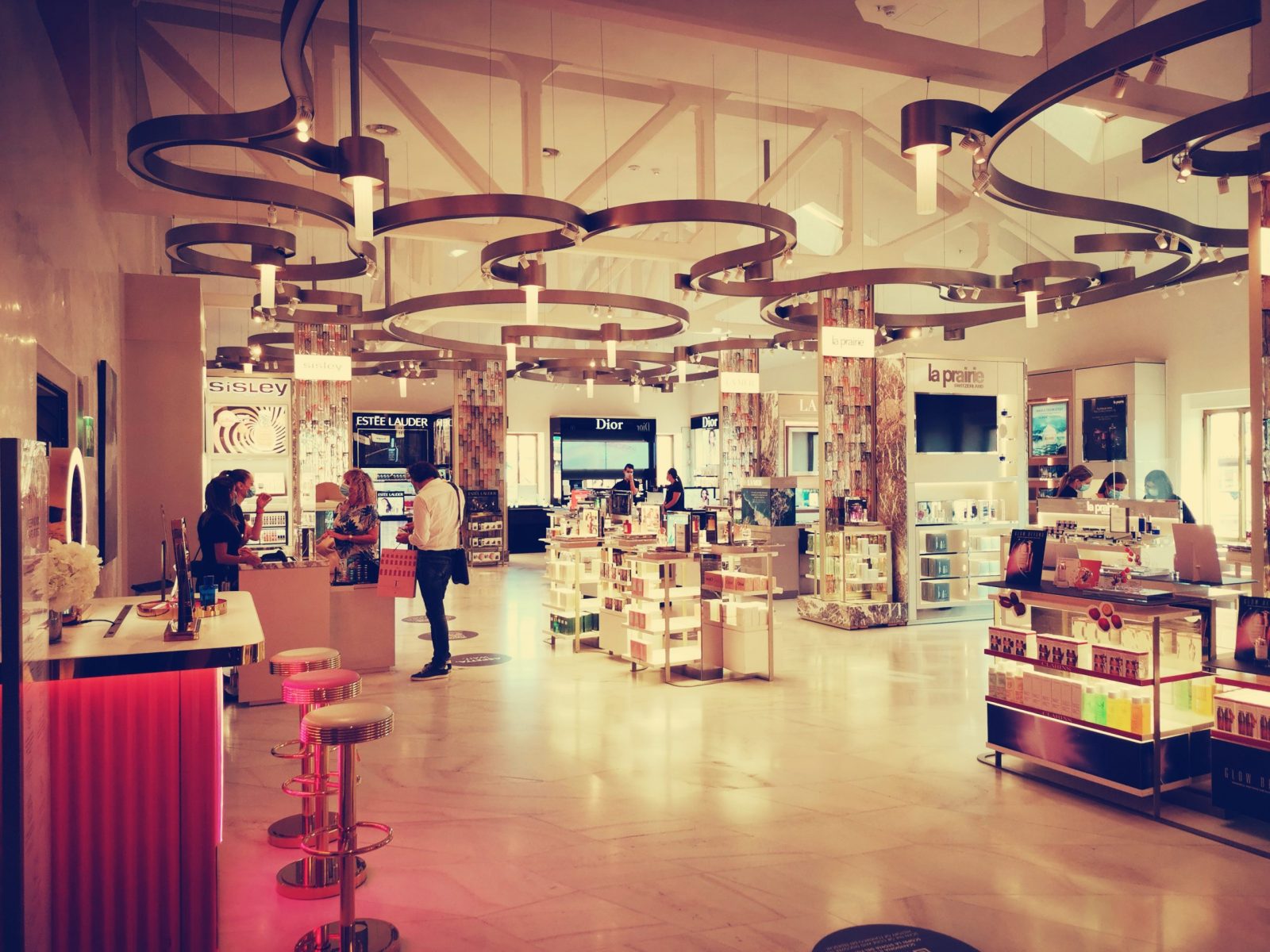

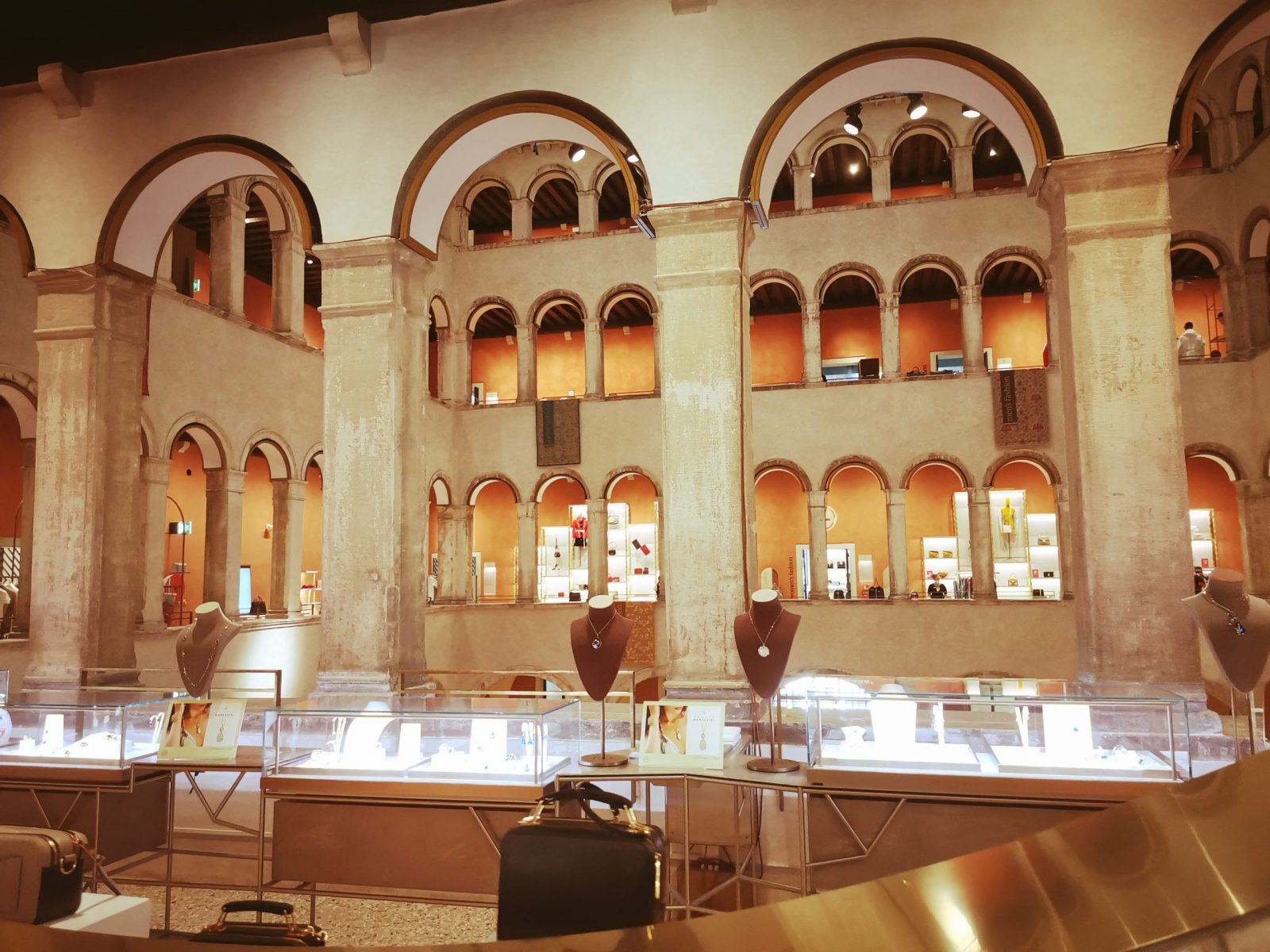
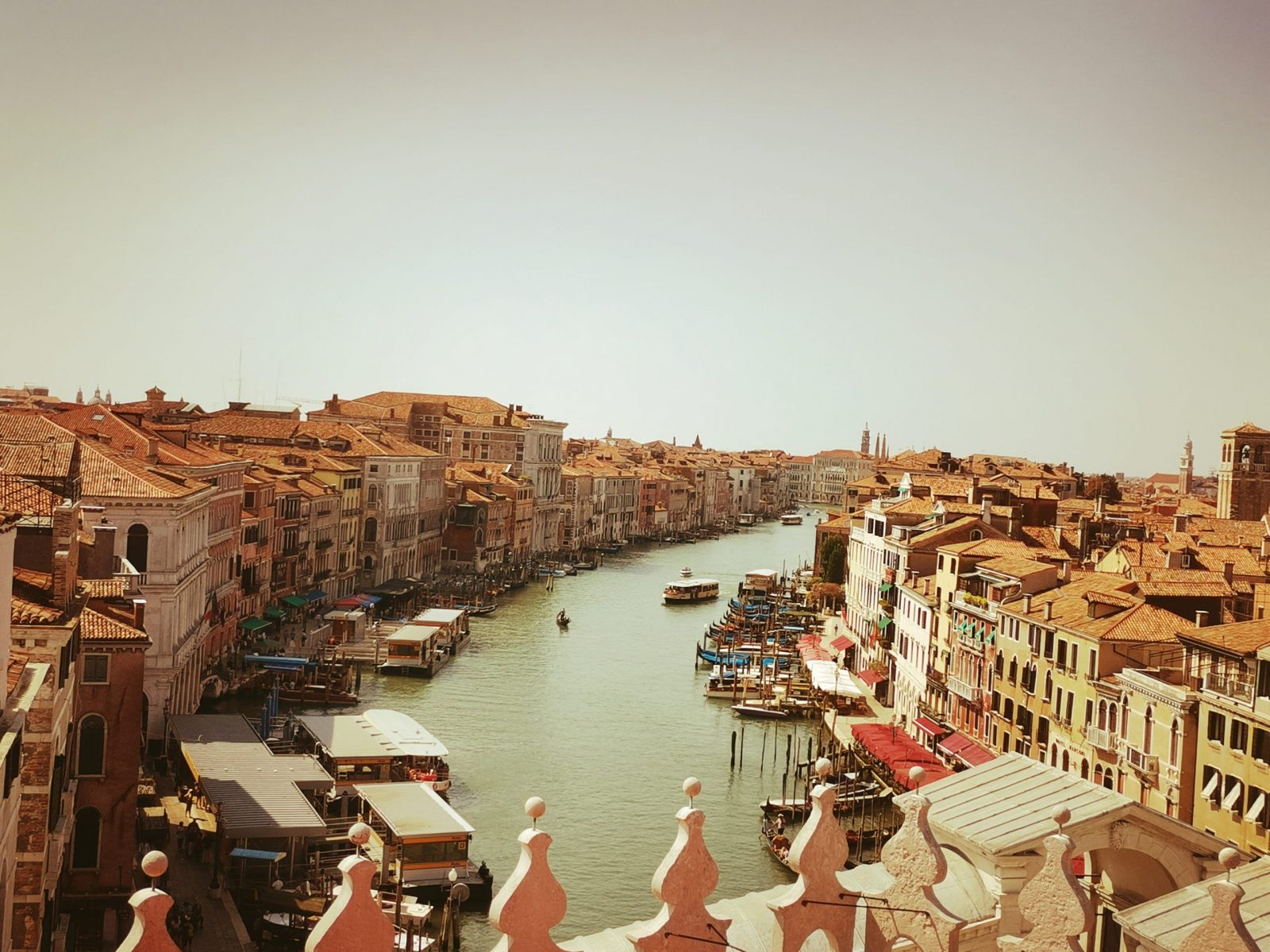

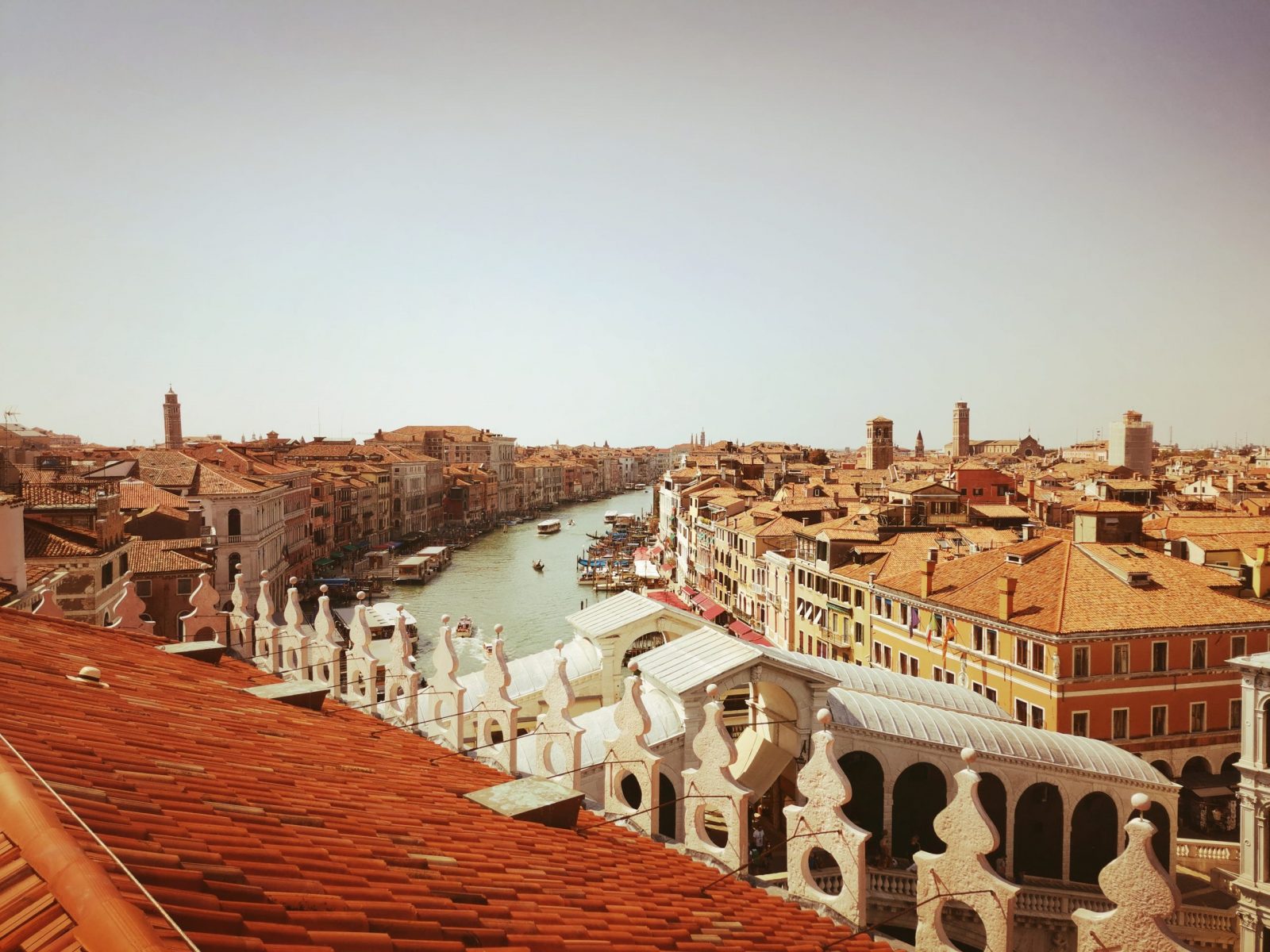
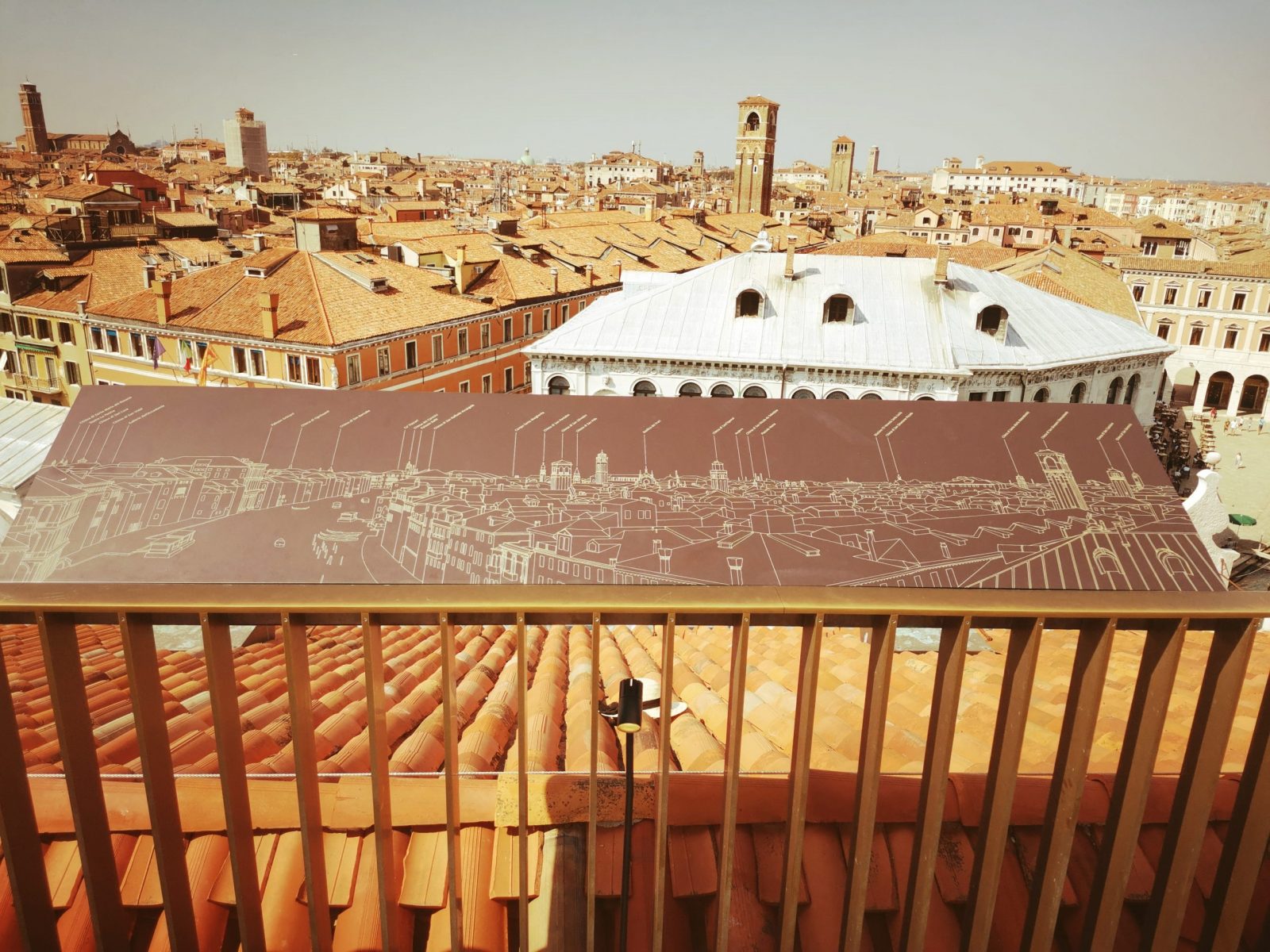
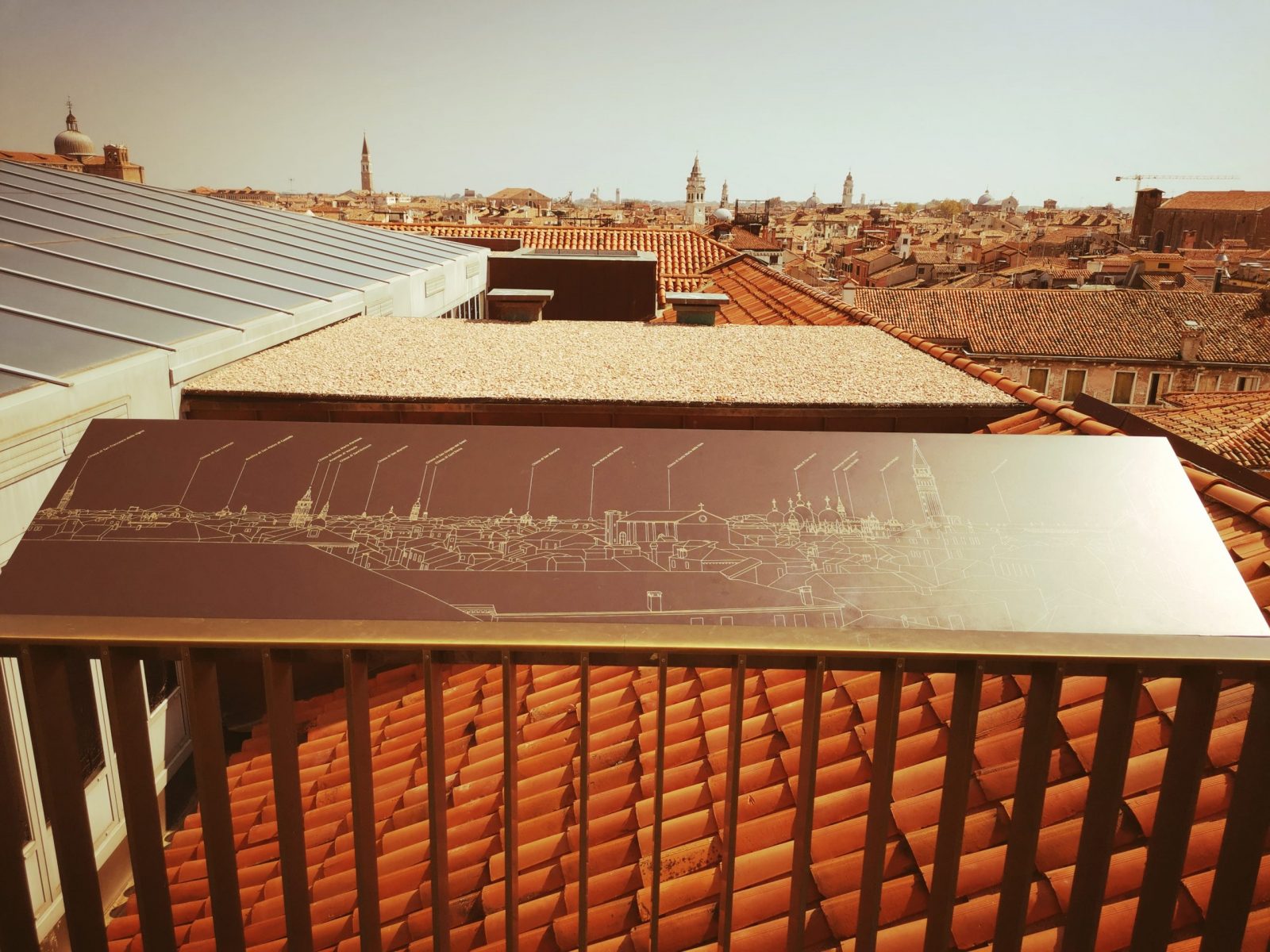
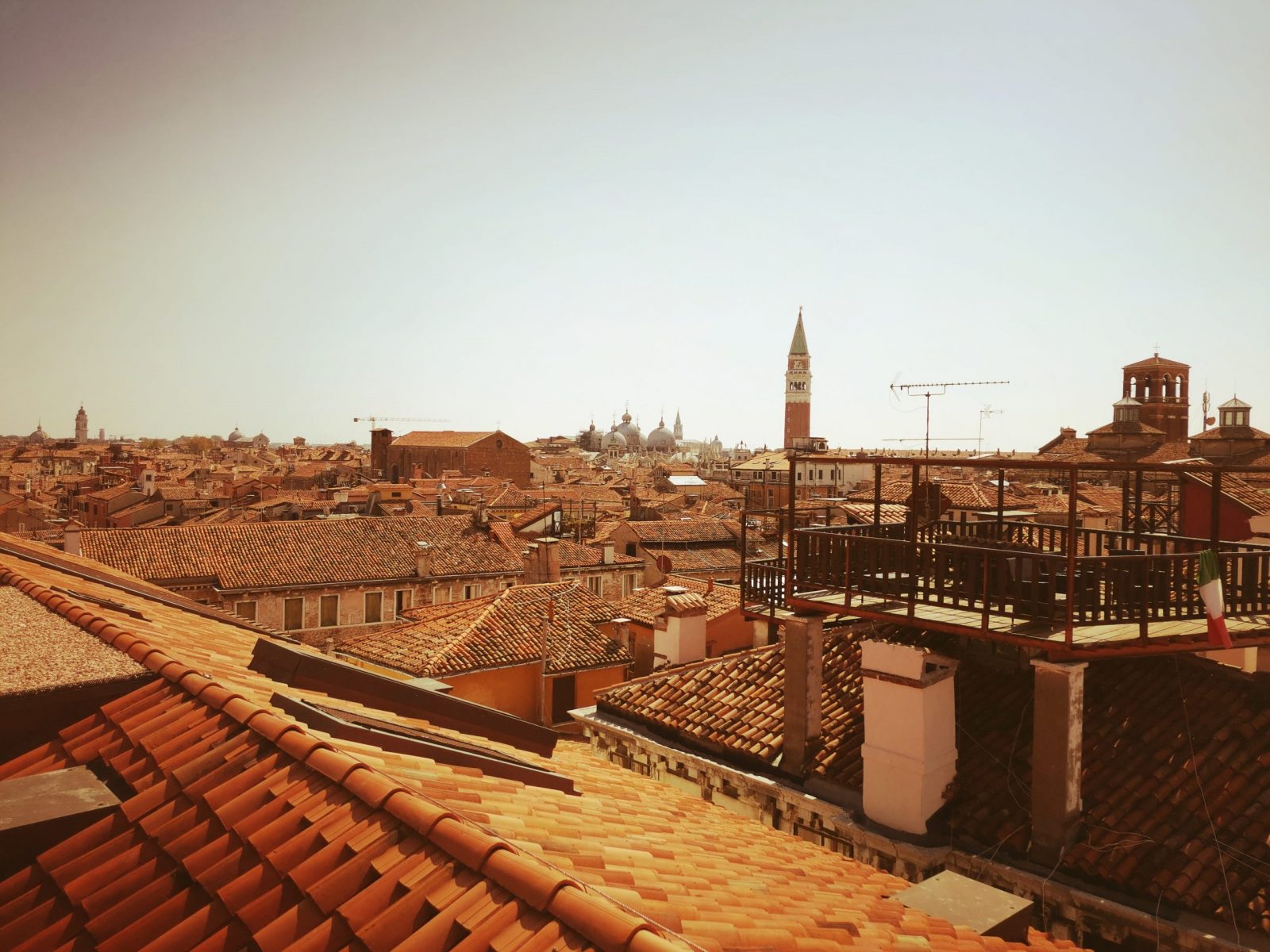

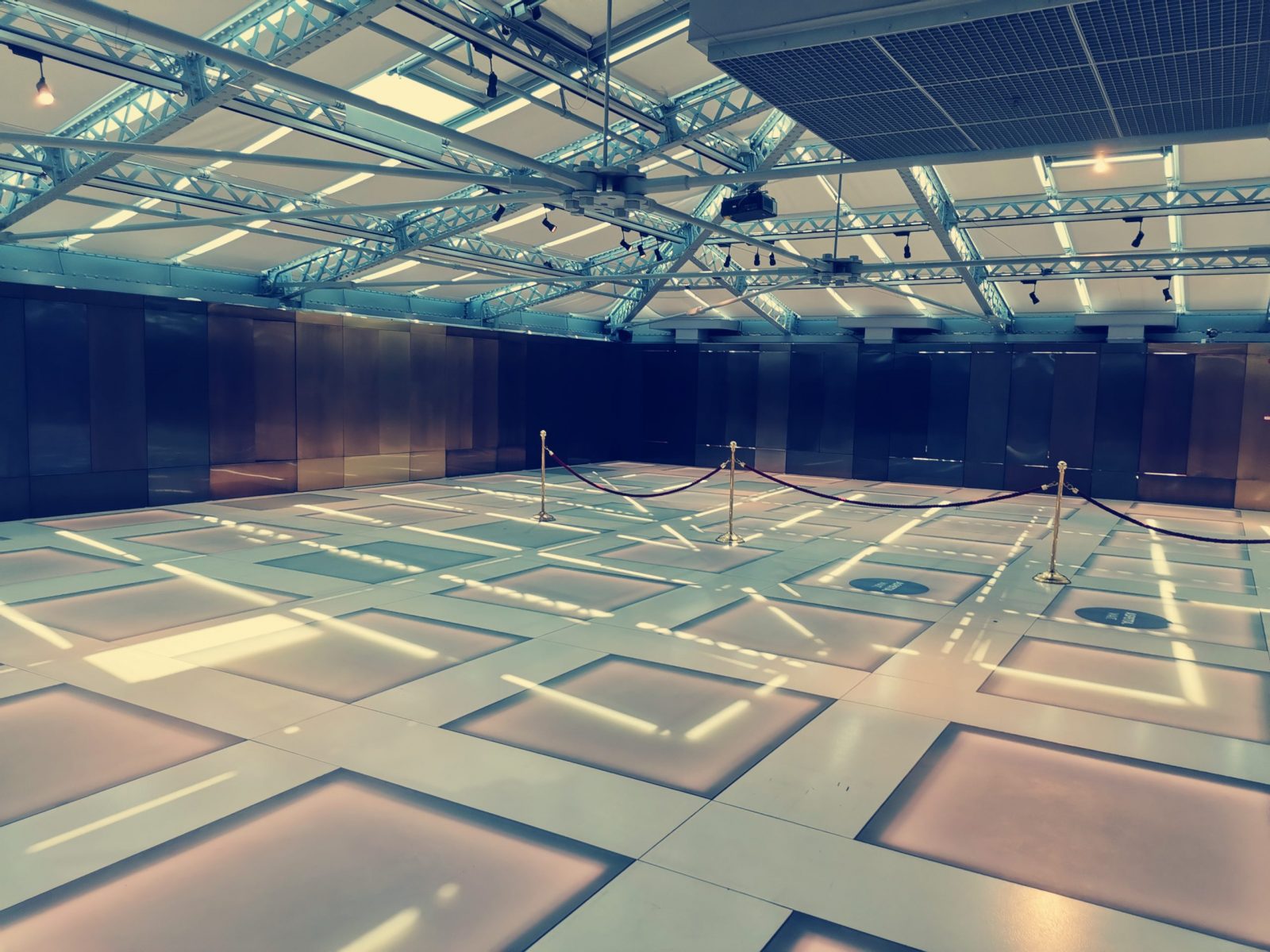
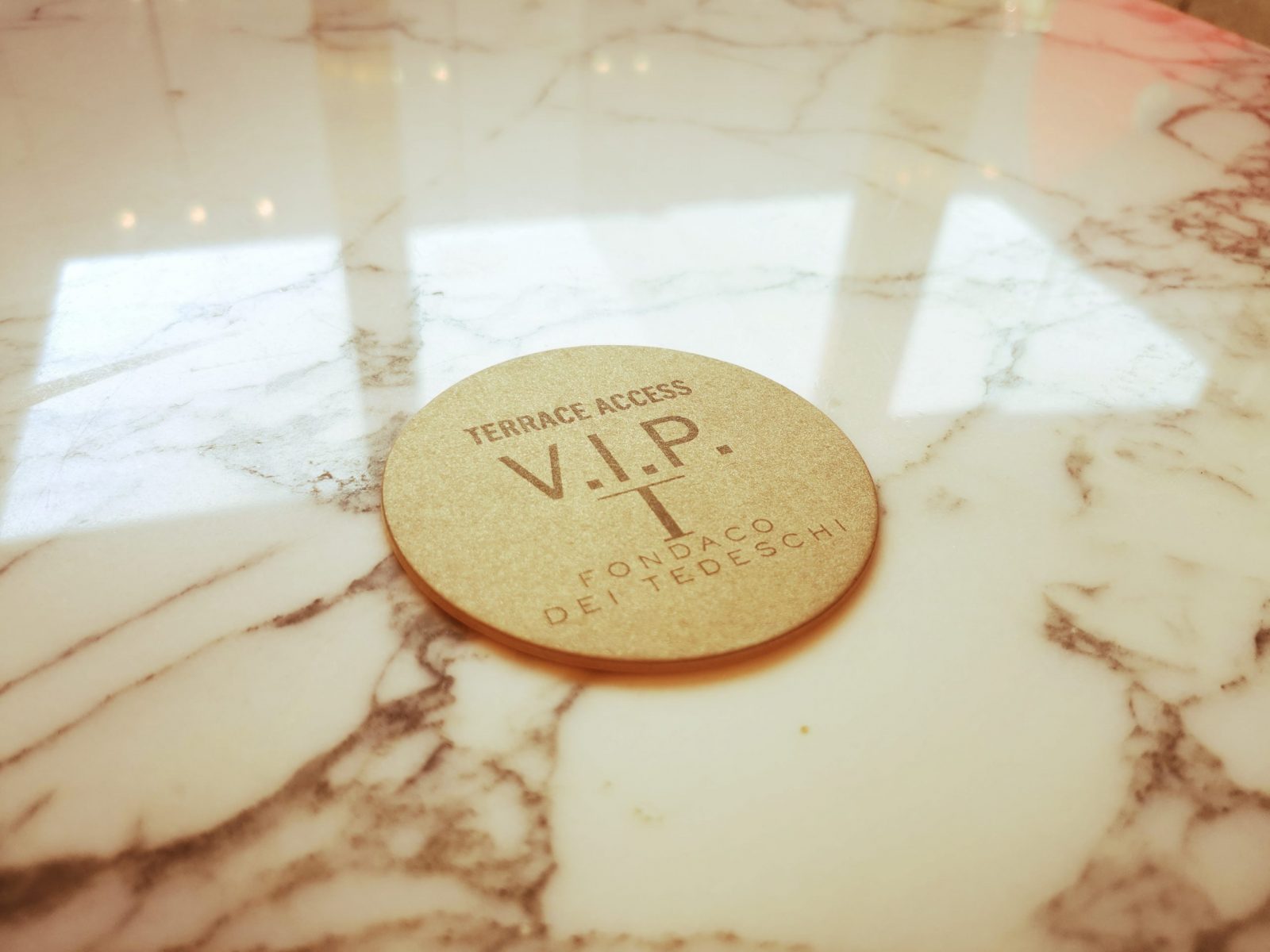
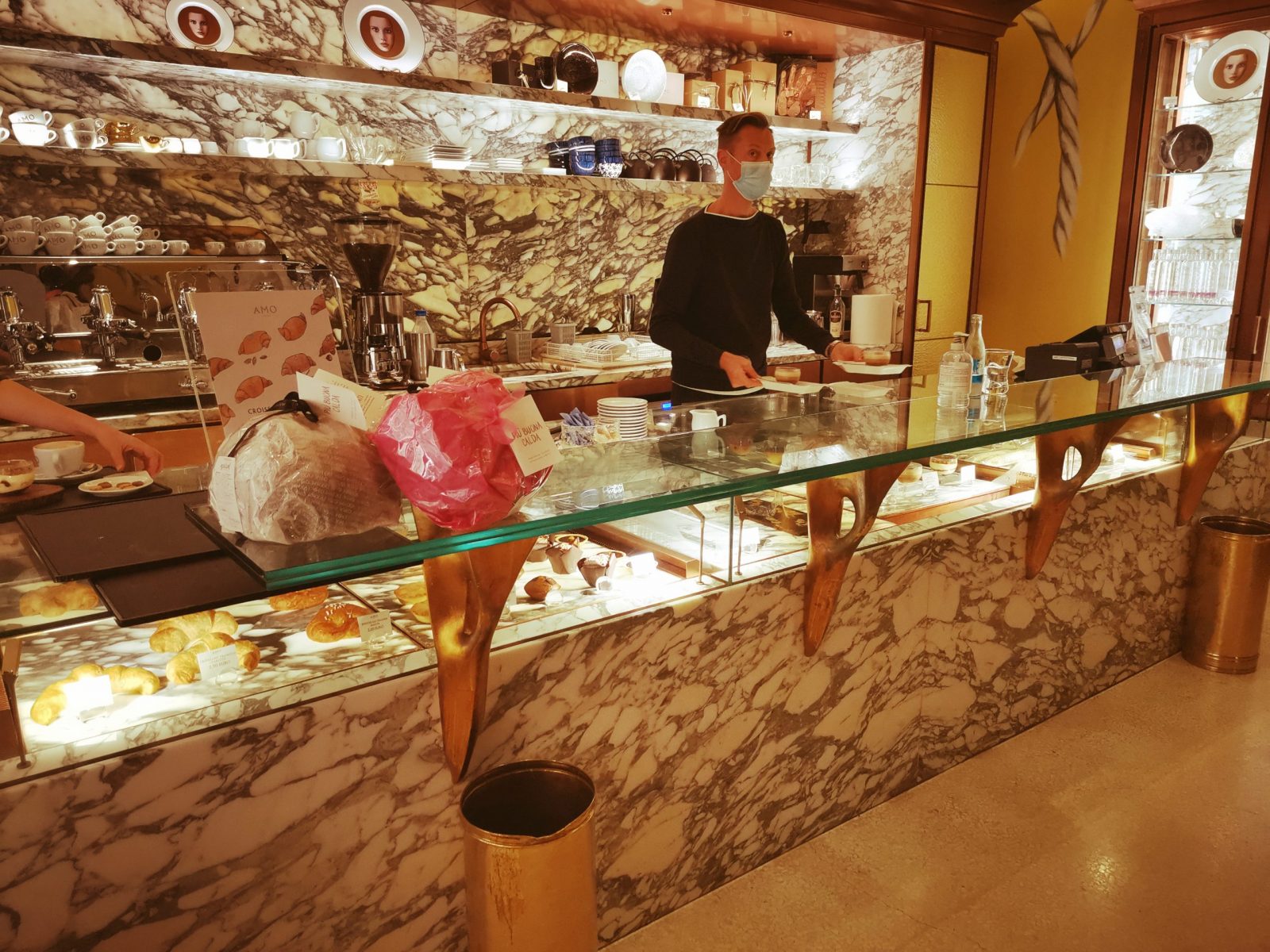
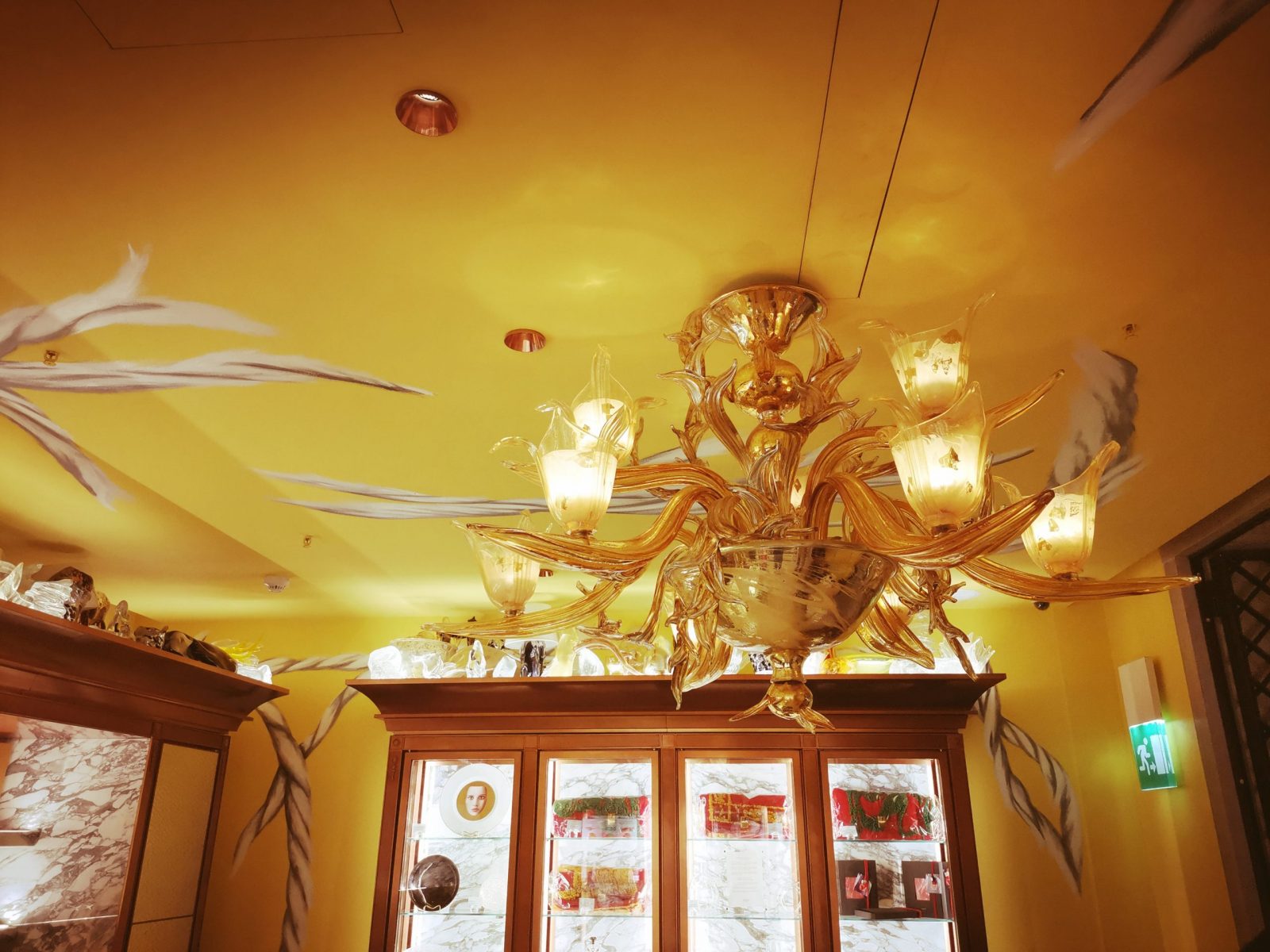
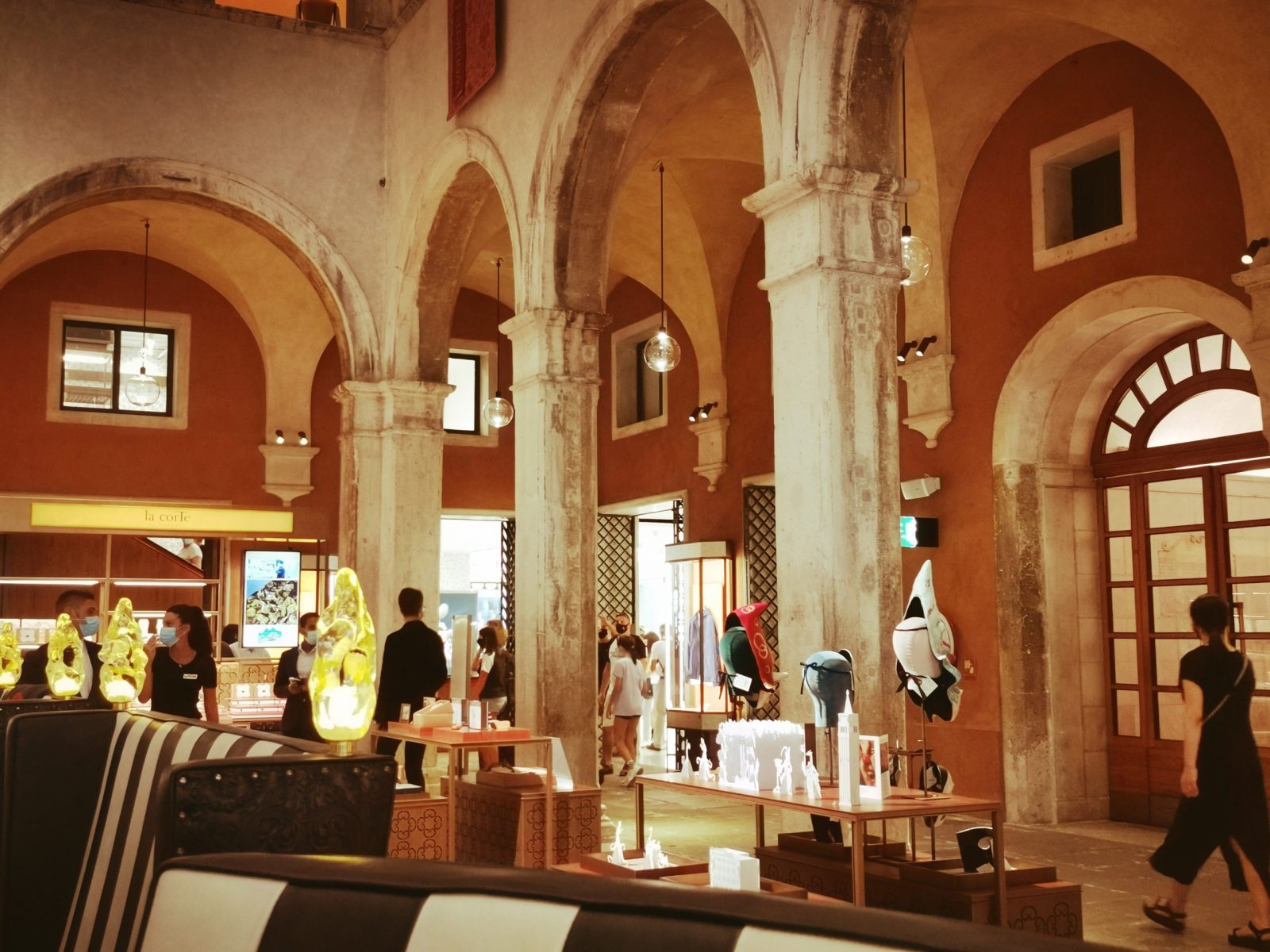


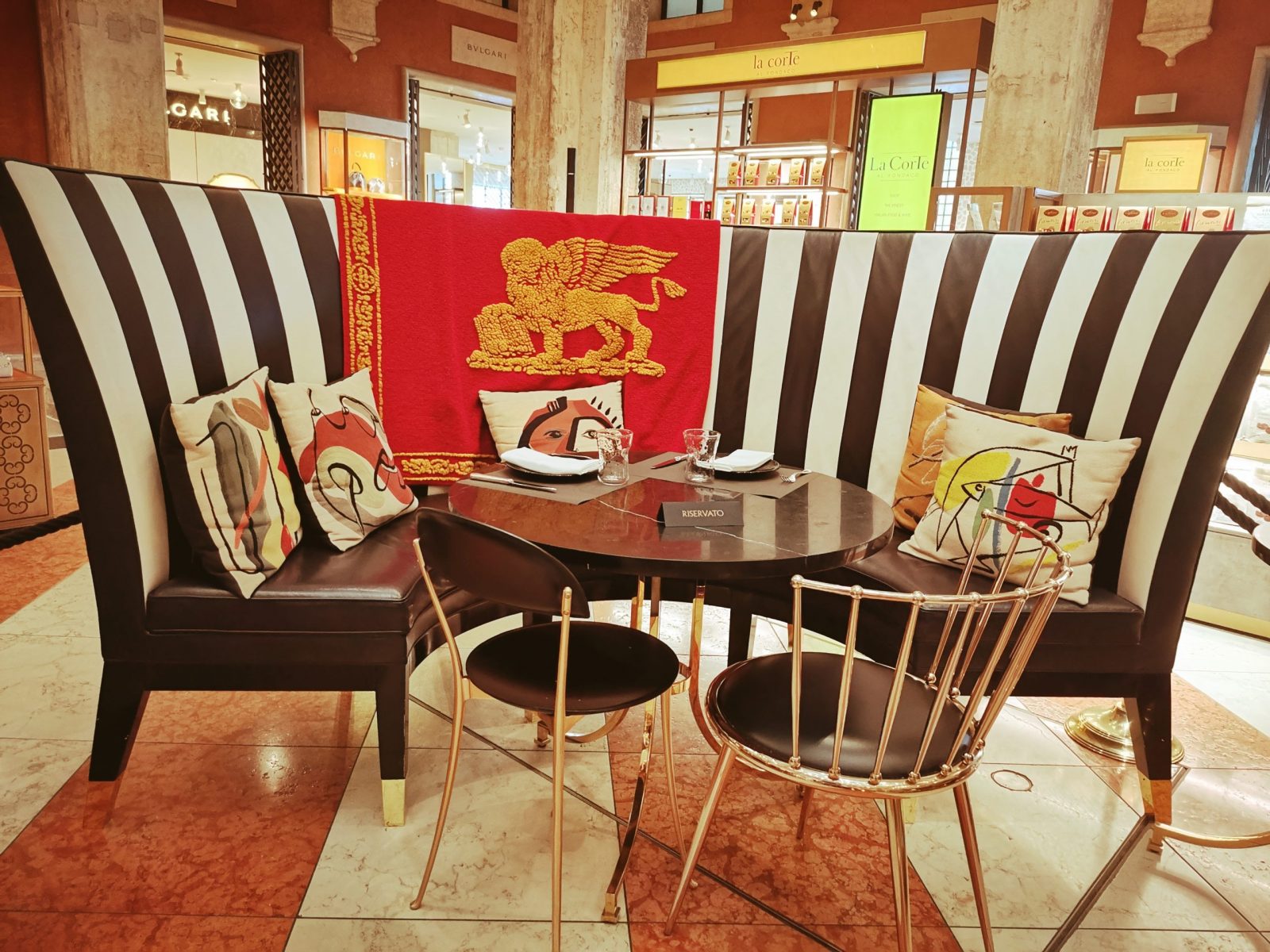
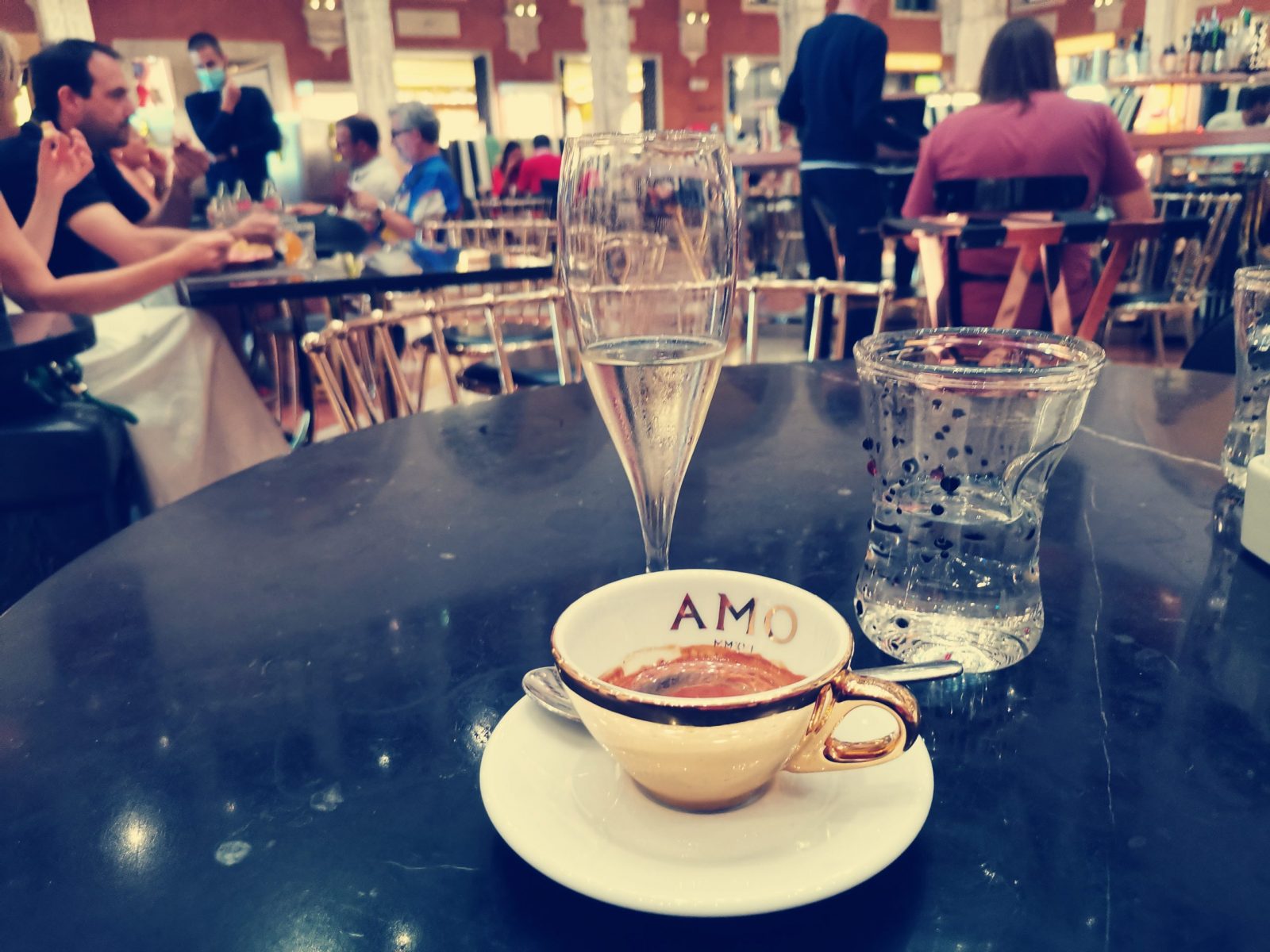

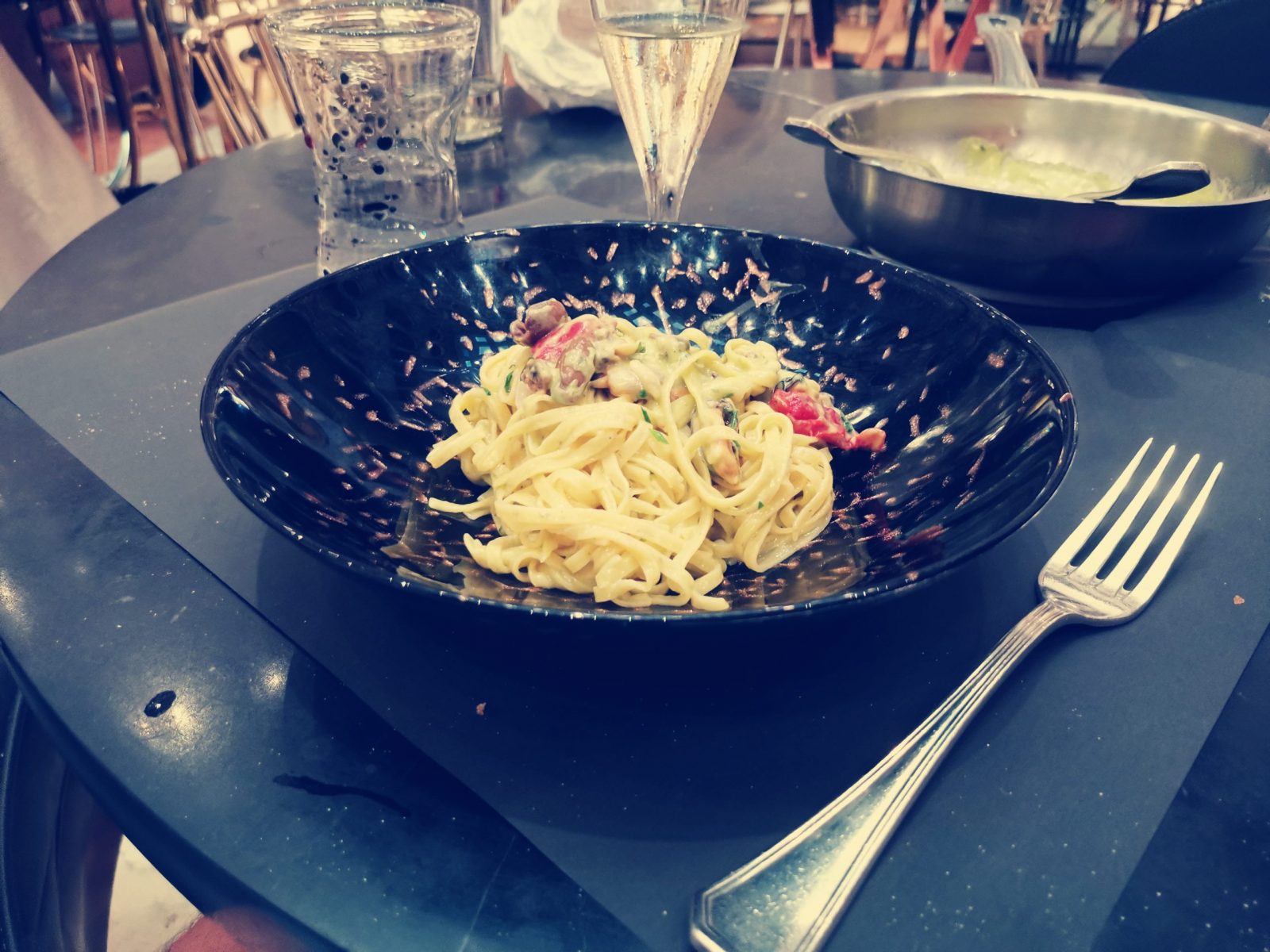

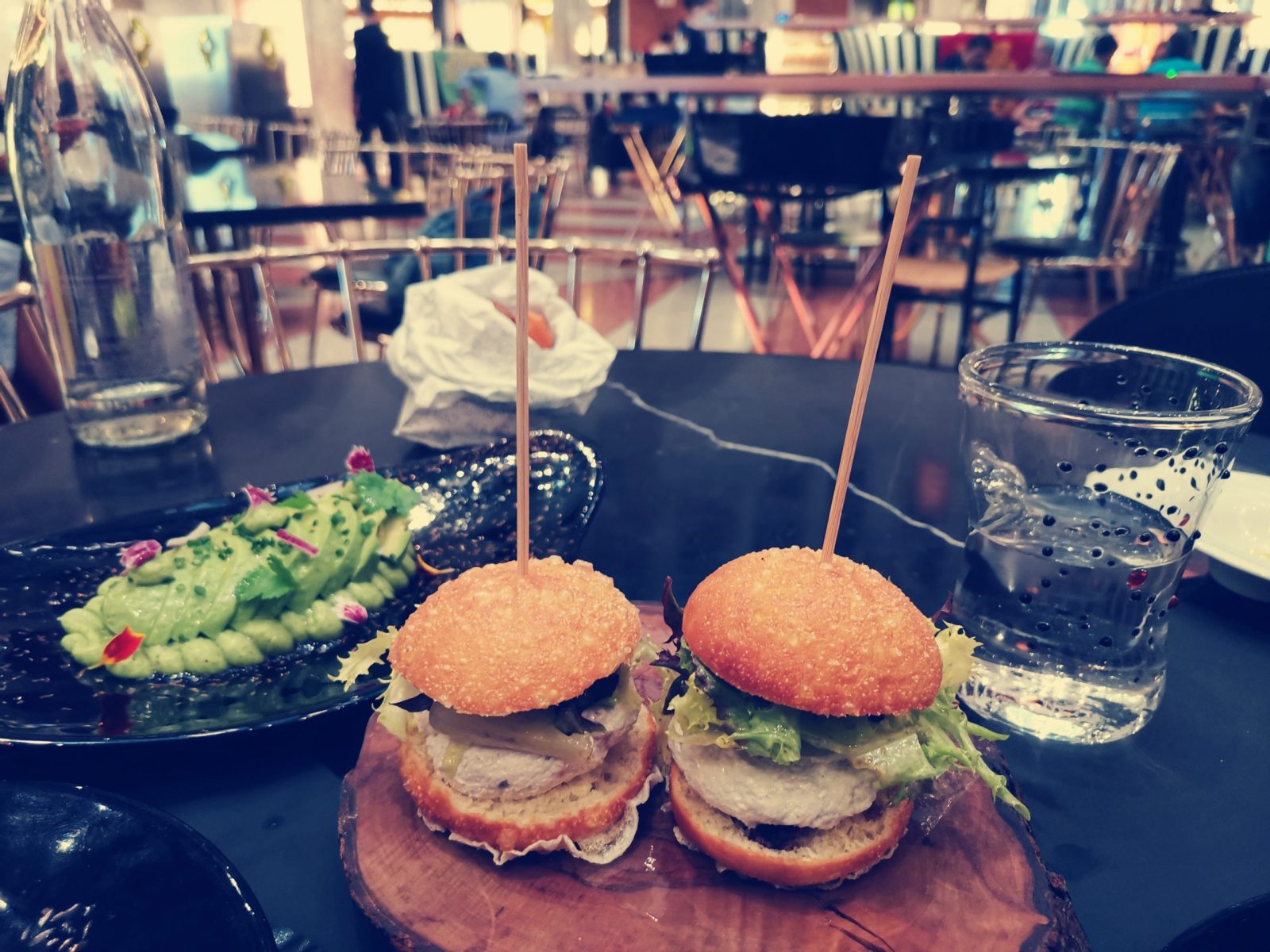
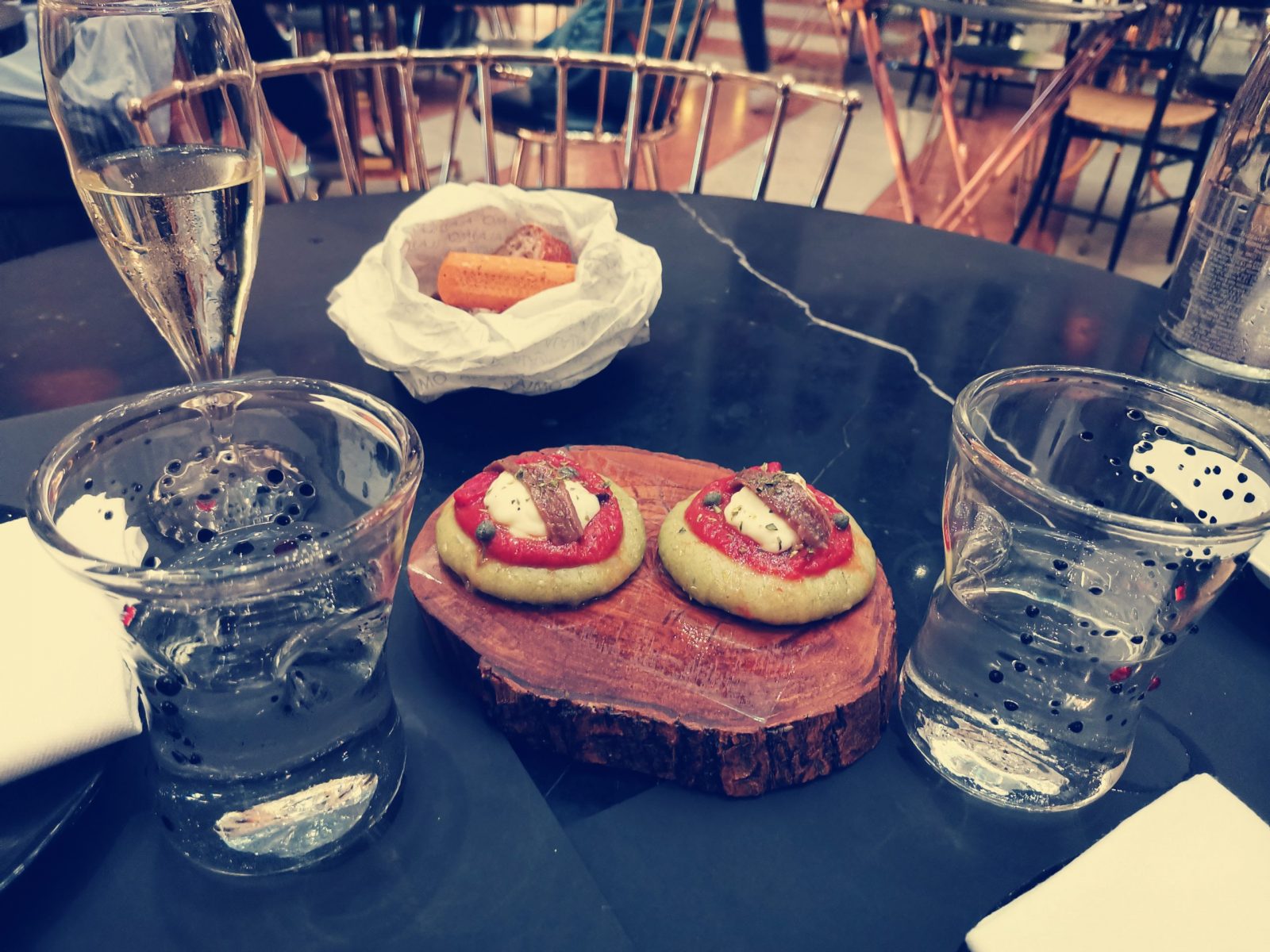

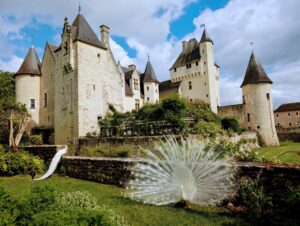





1 thought on “Listen to Musica a Palazzo and taste the Venitian gastronomy of Alajmo, Bistrot de Venise and the Caffè Florian!”
Comments are closed.